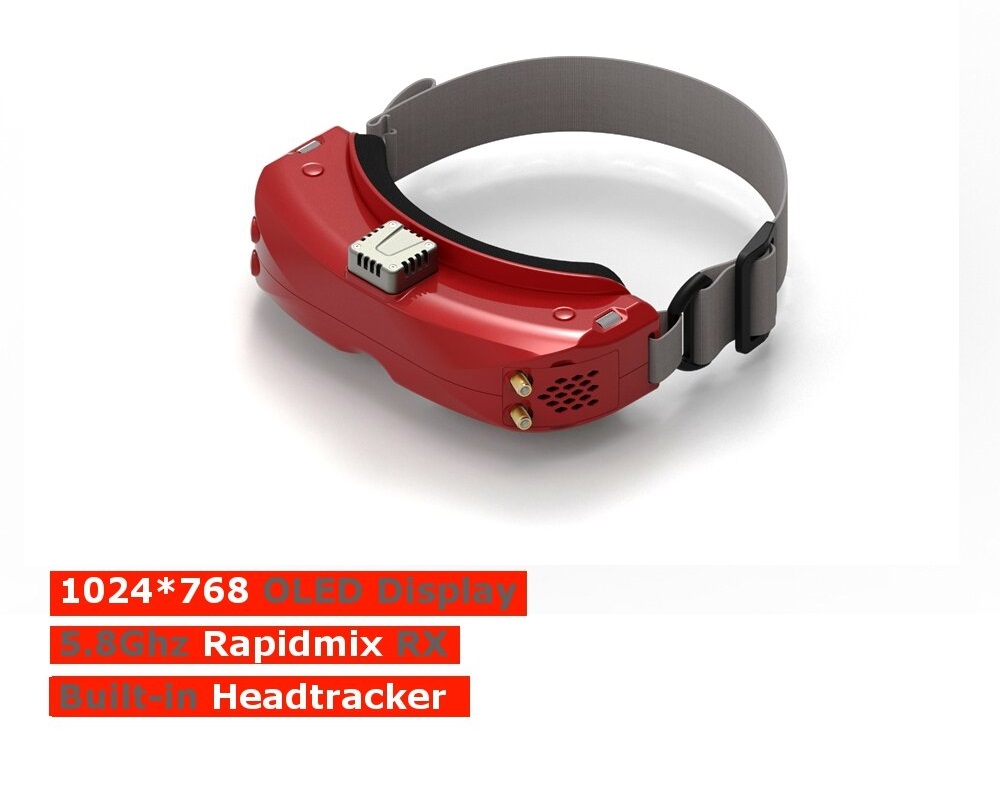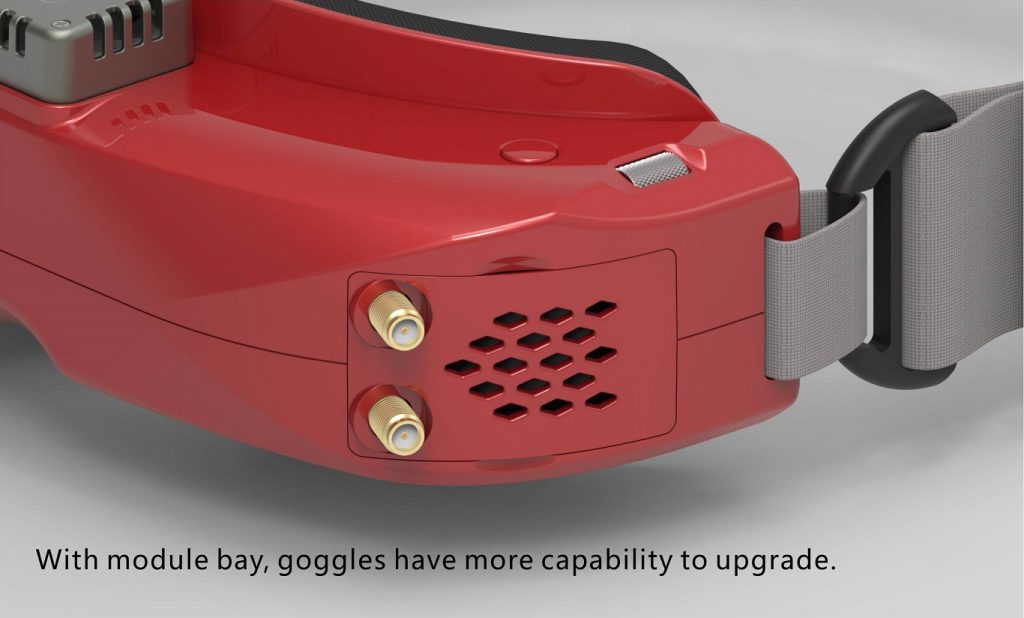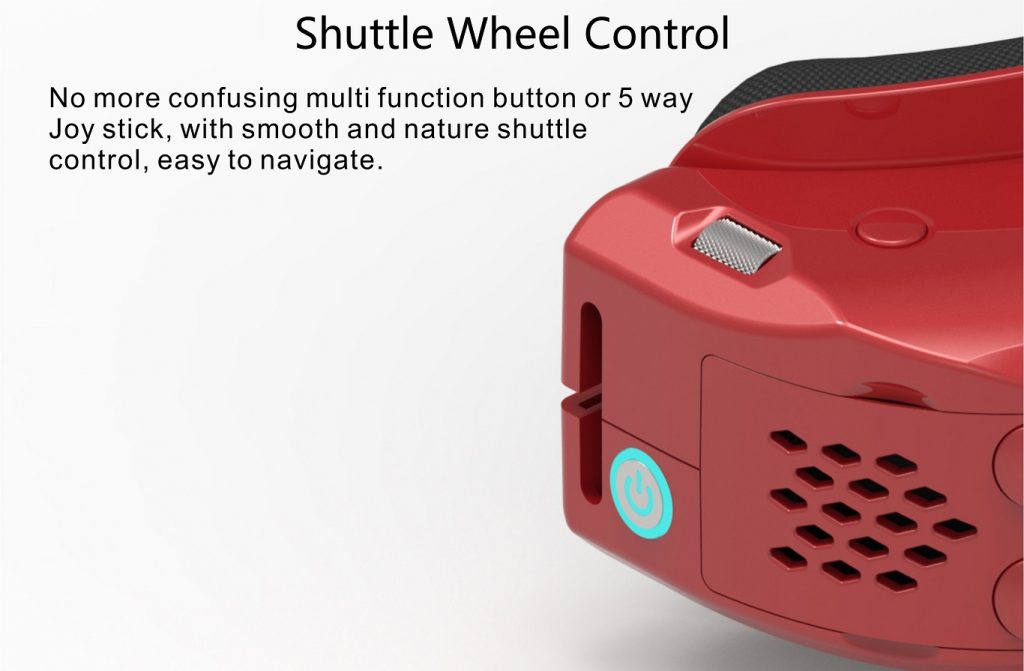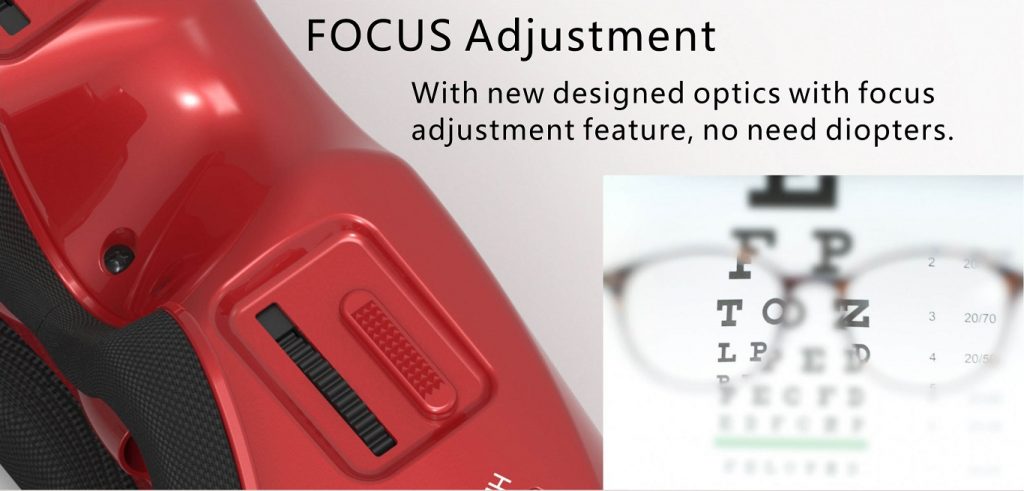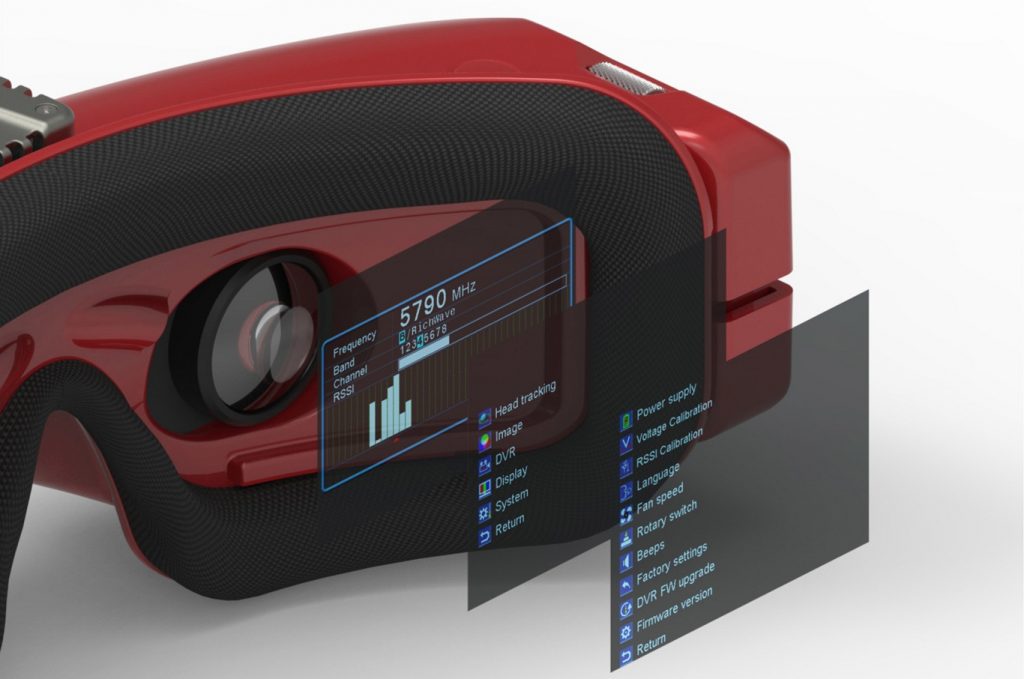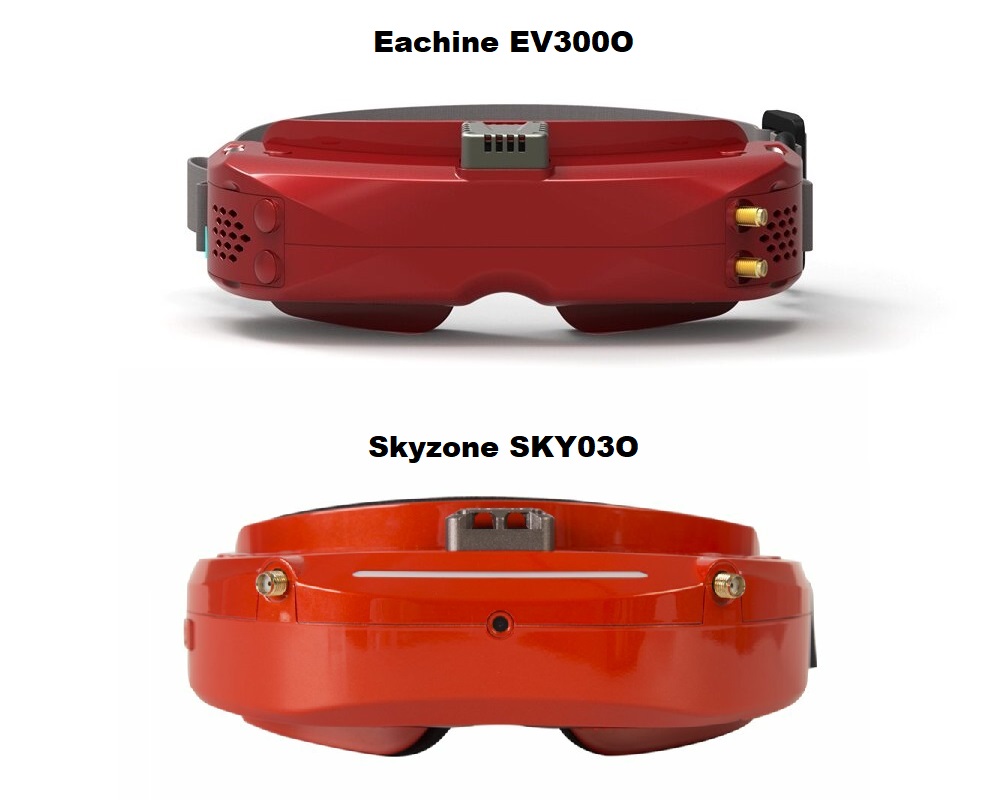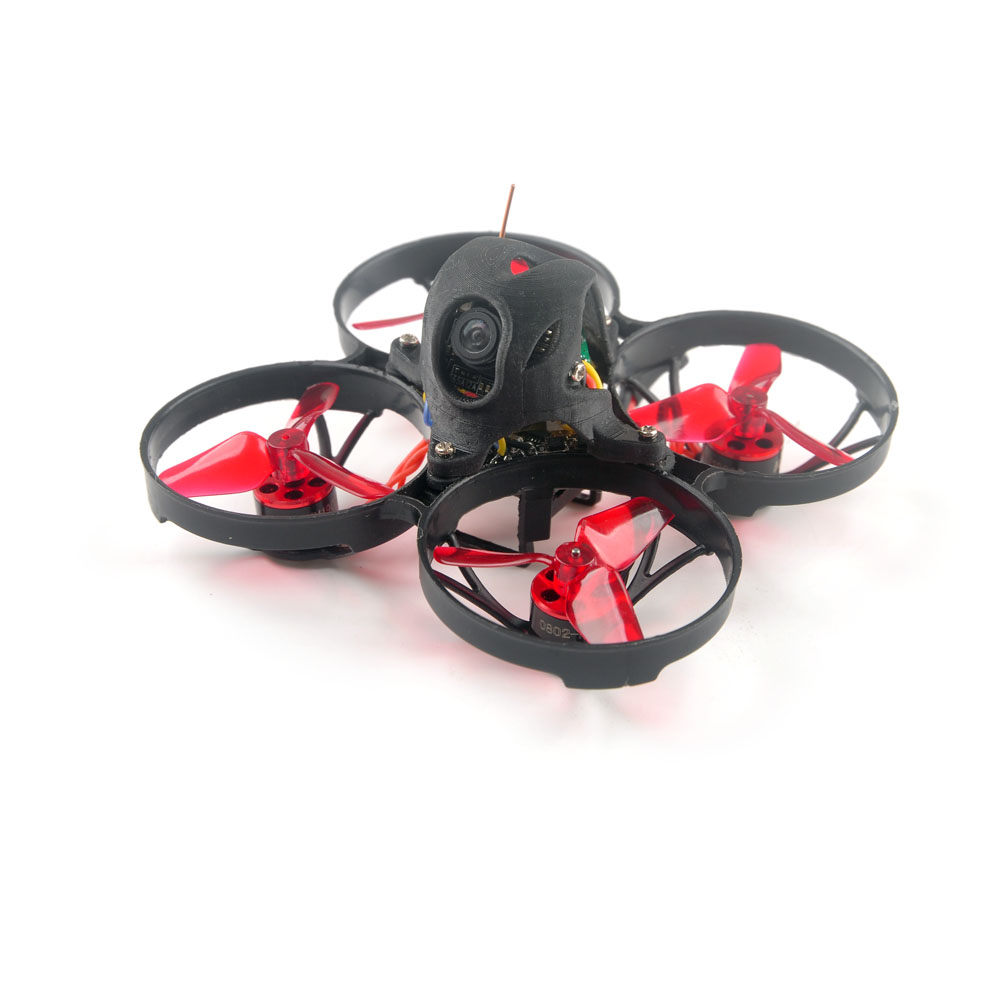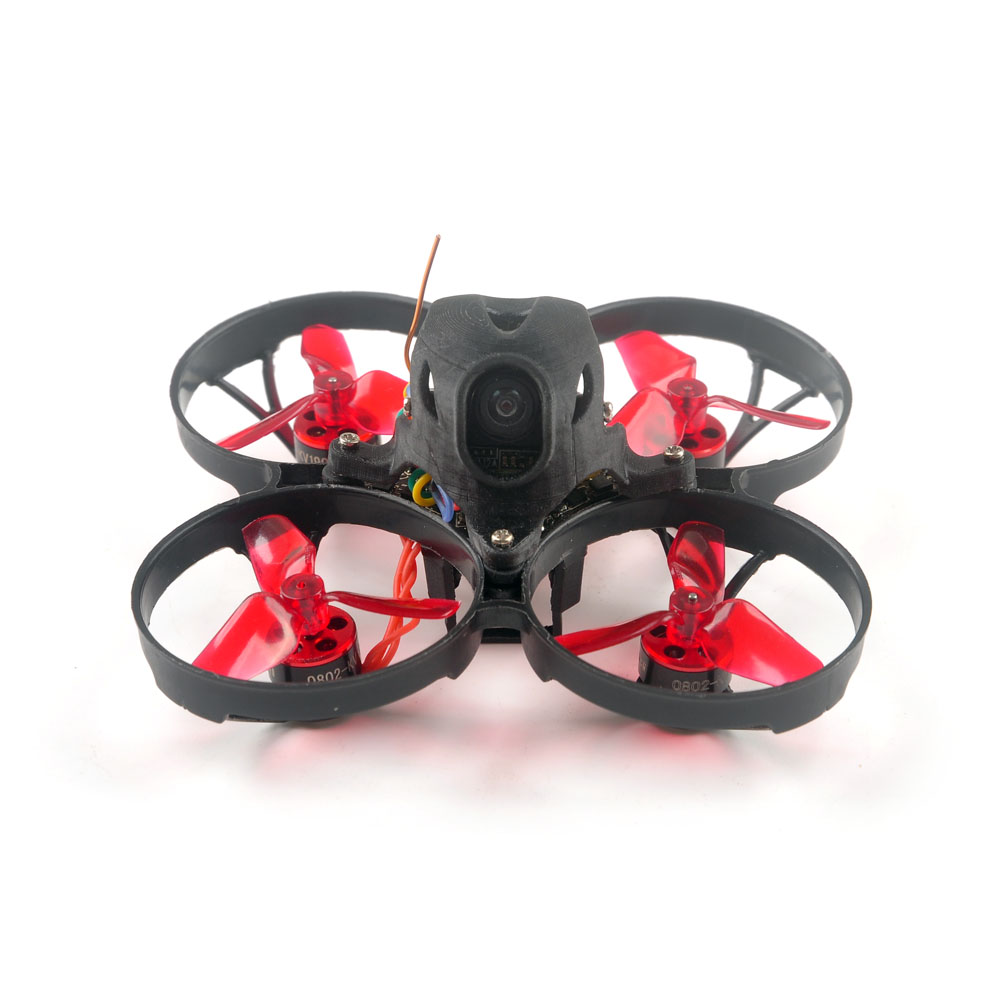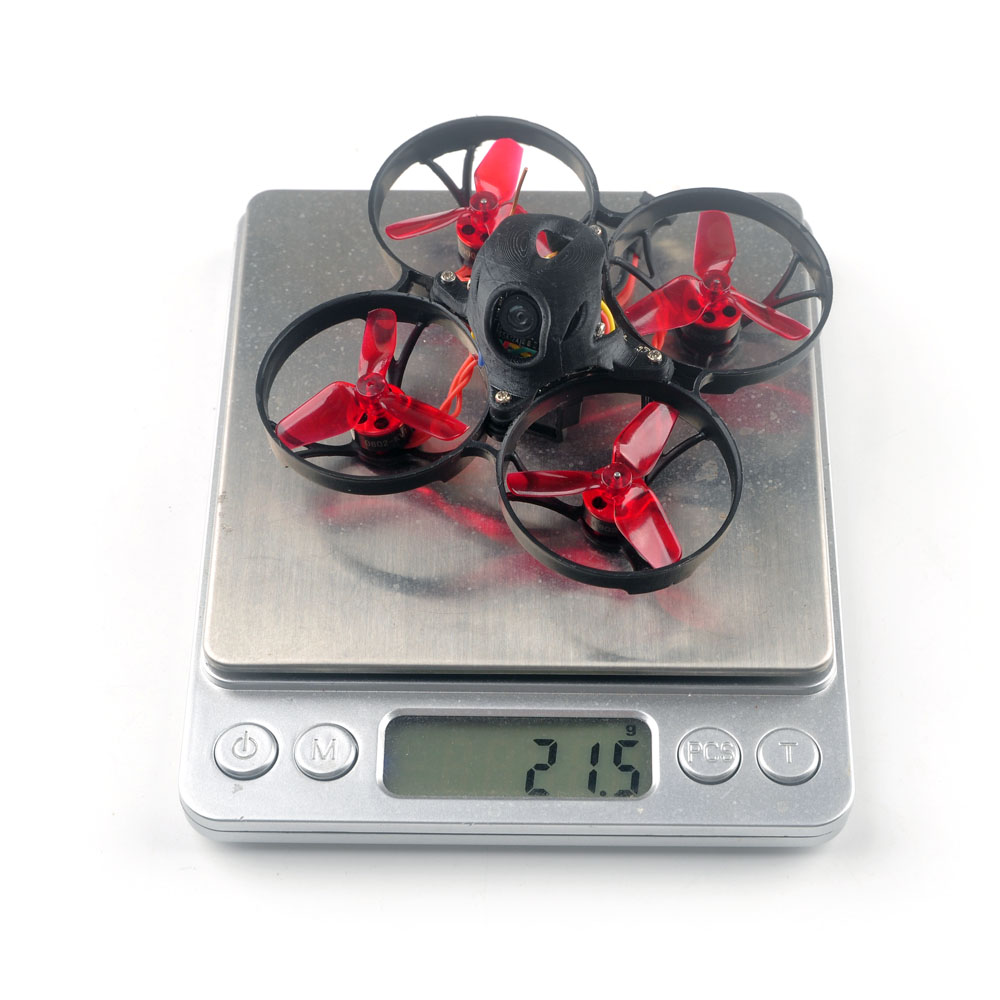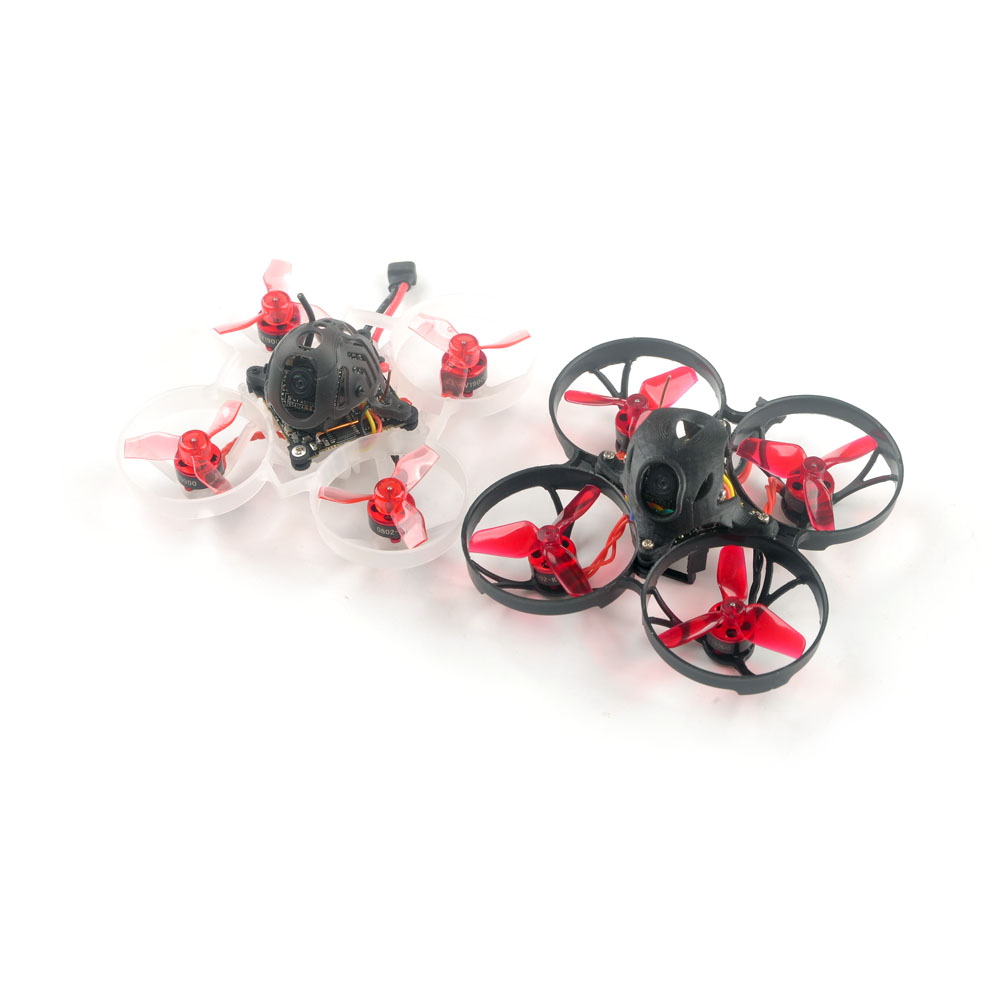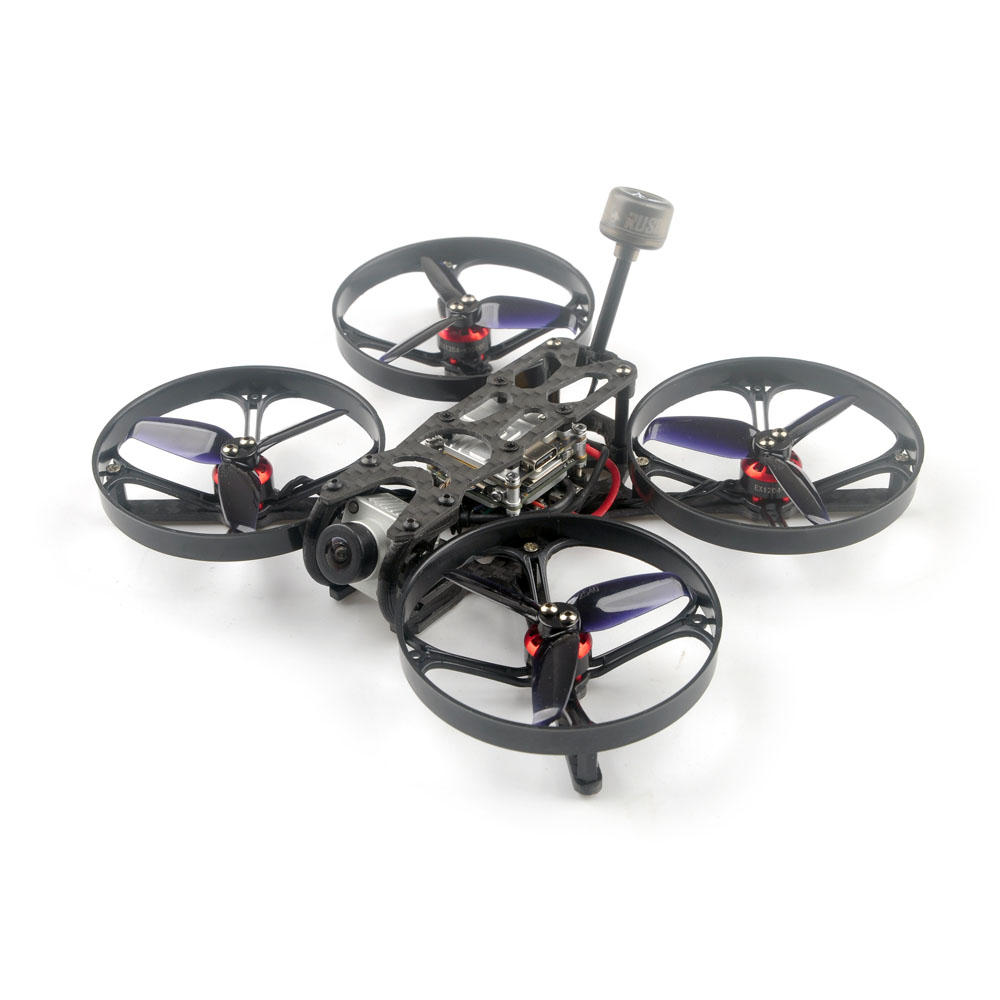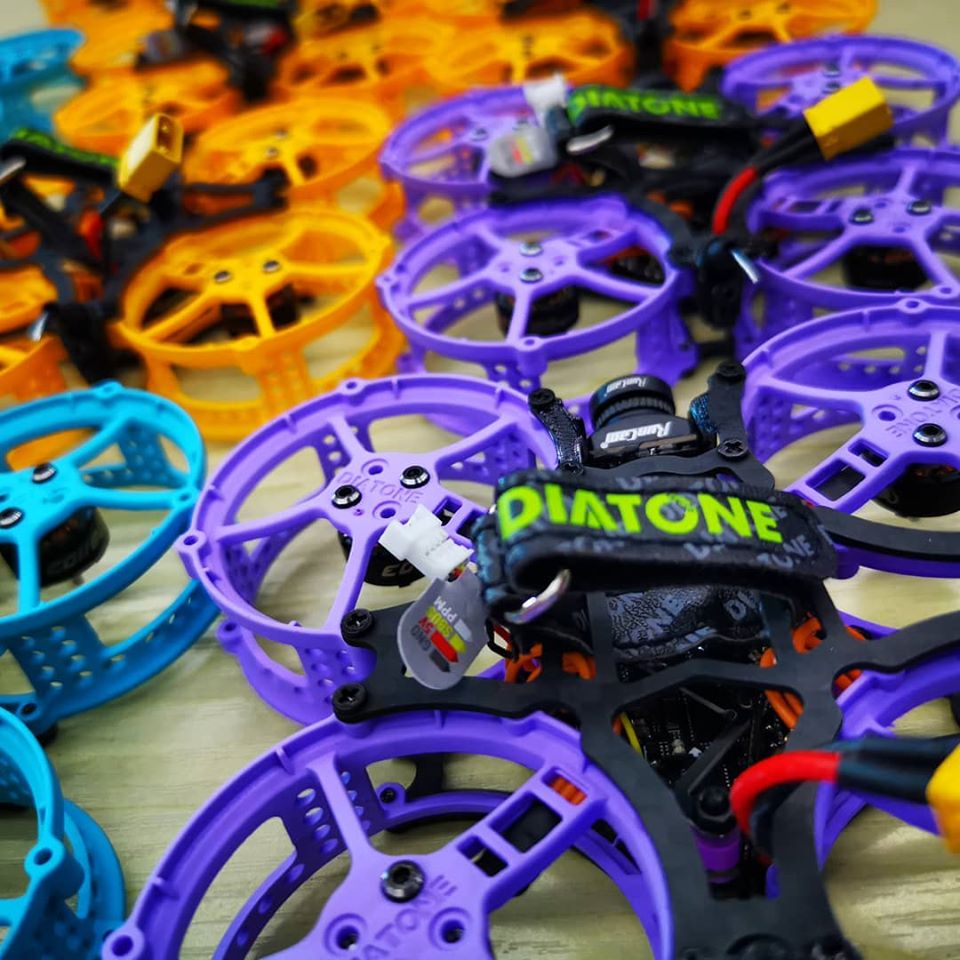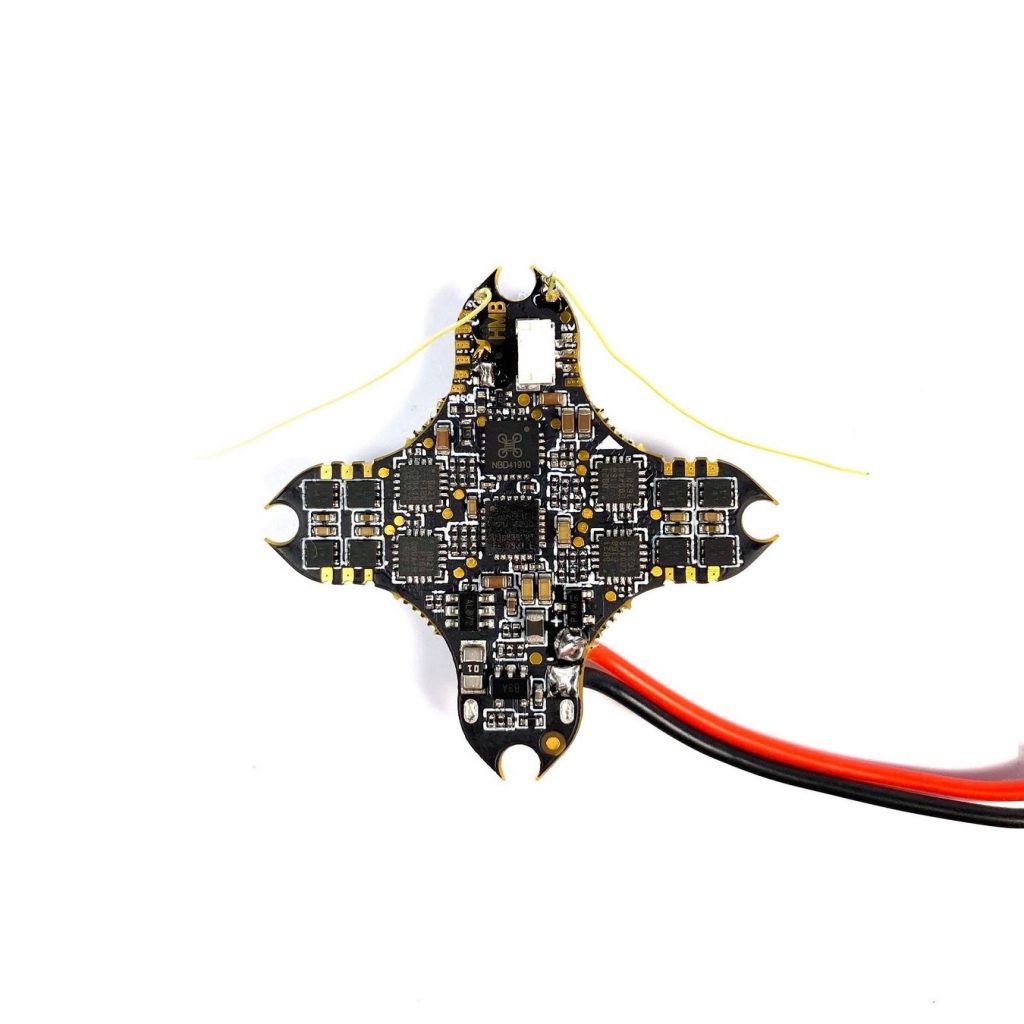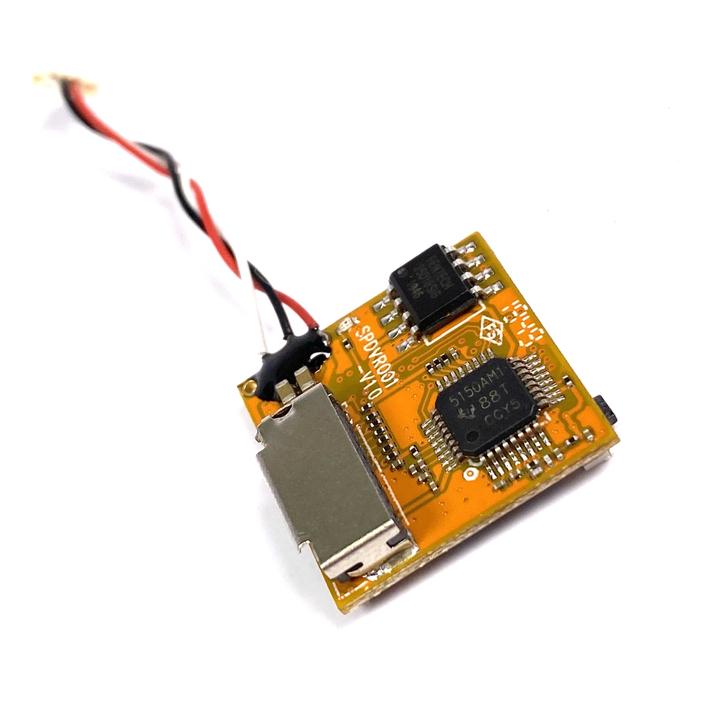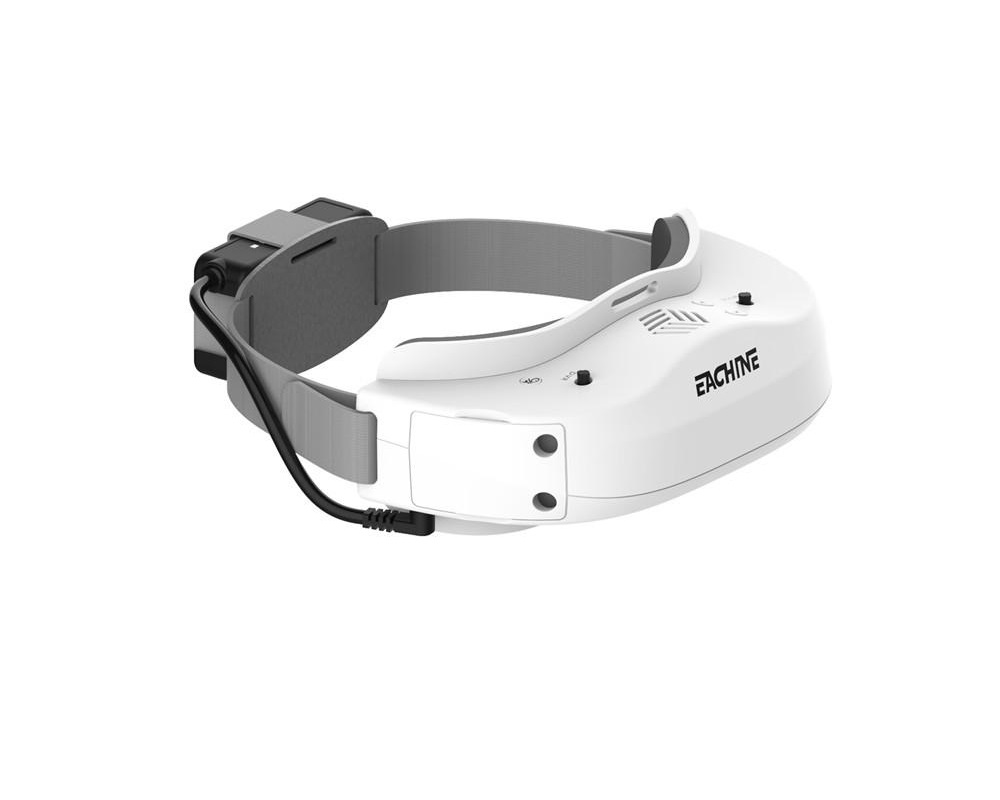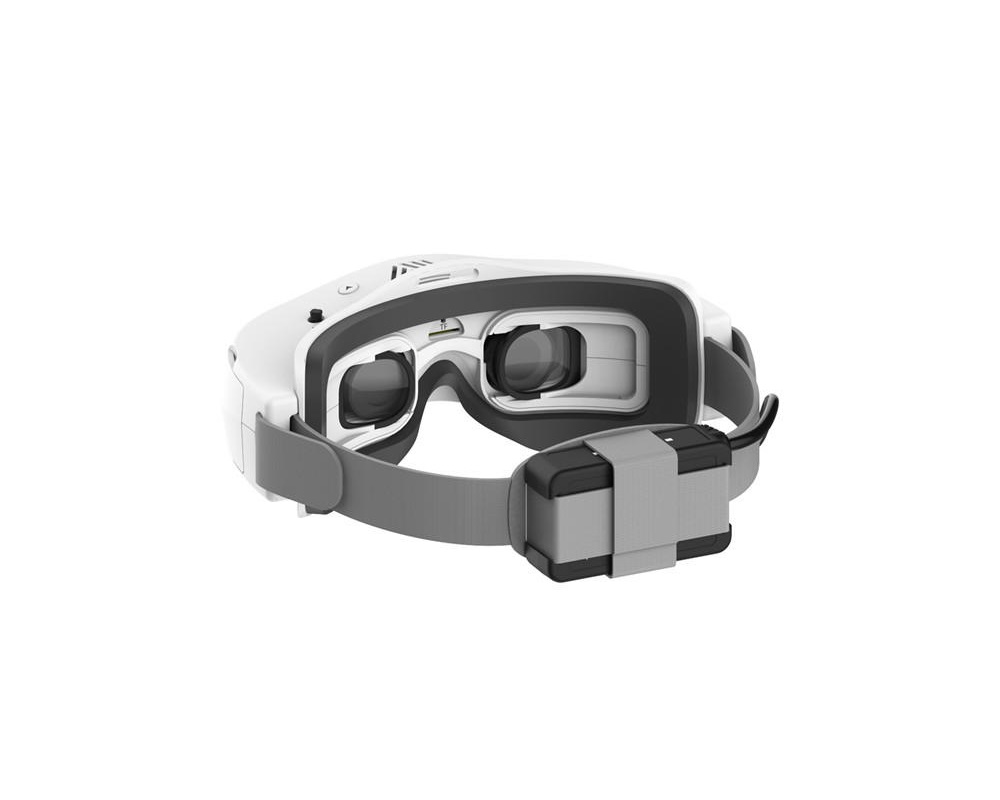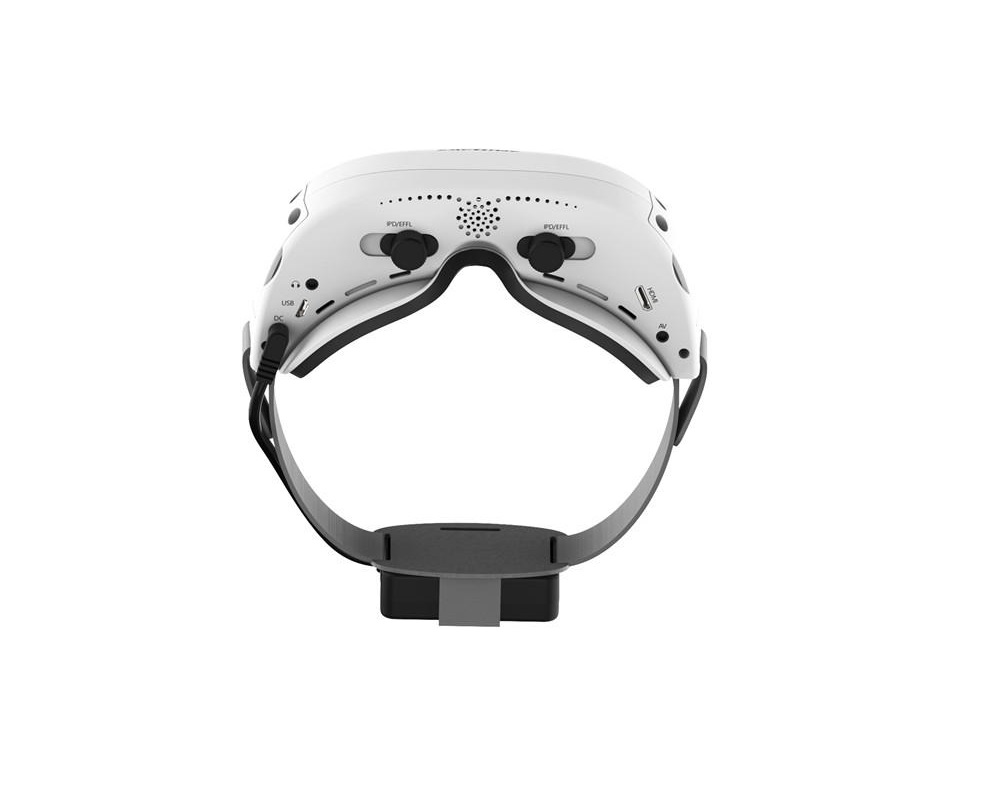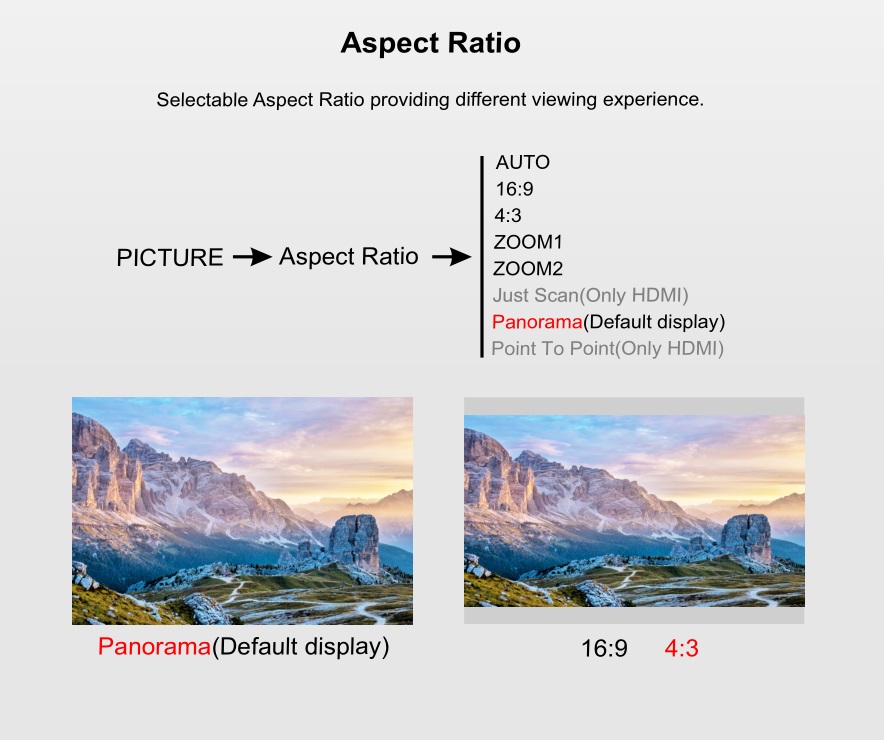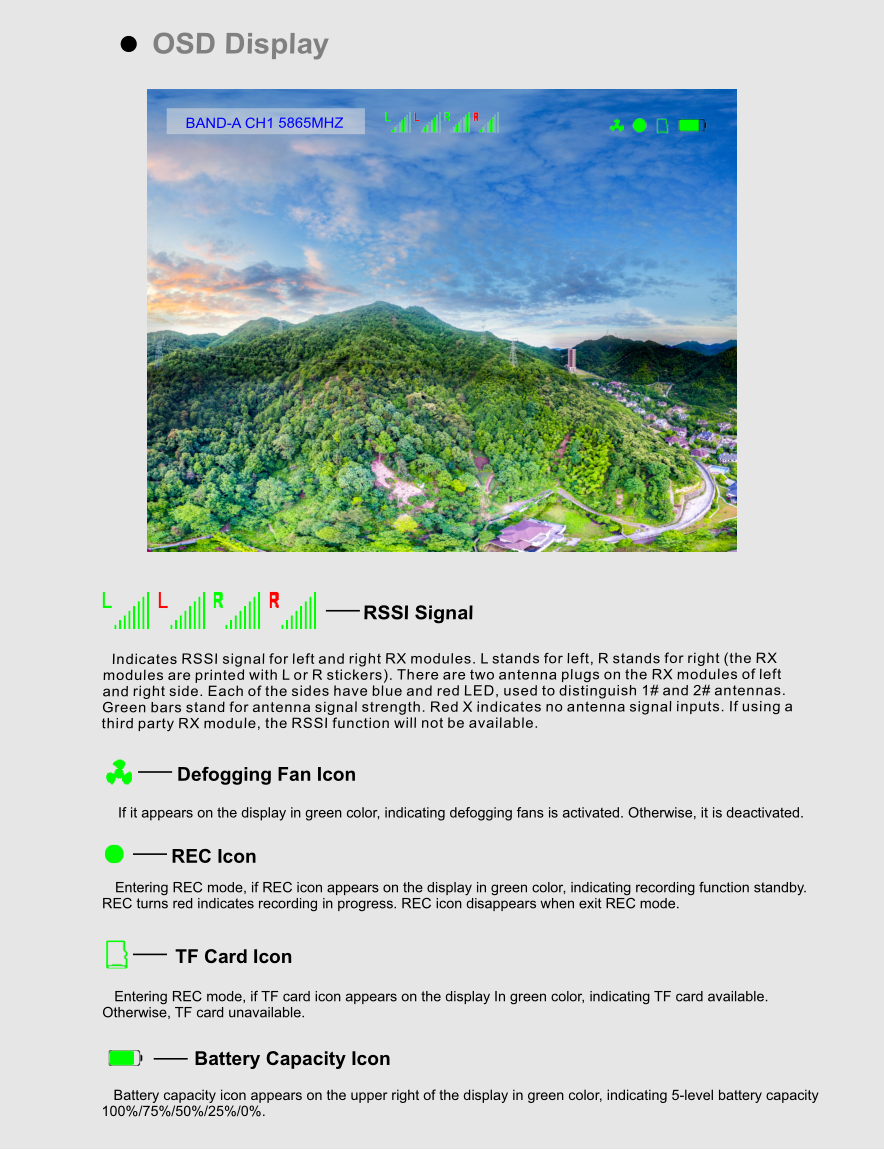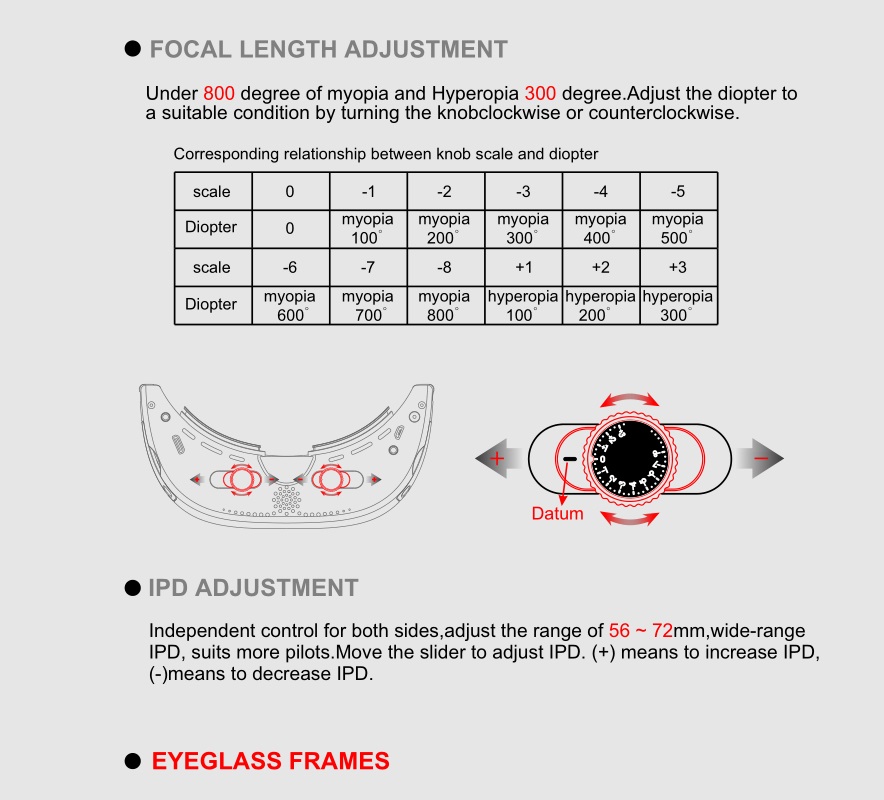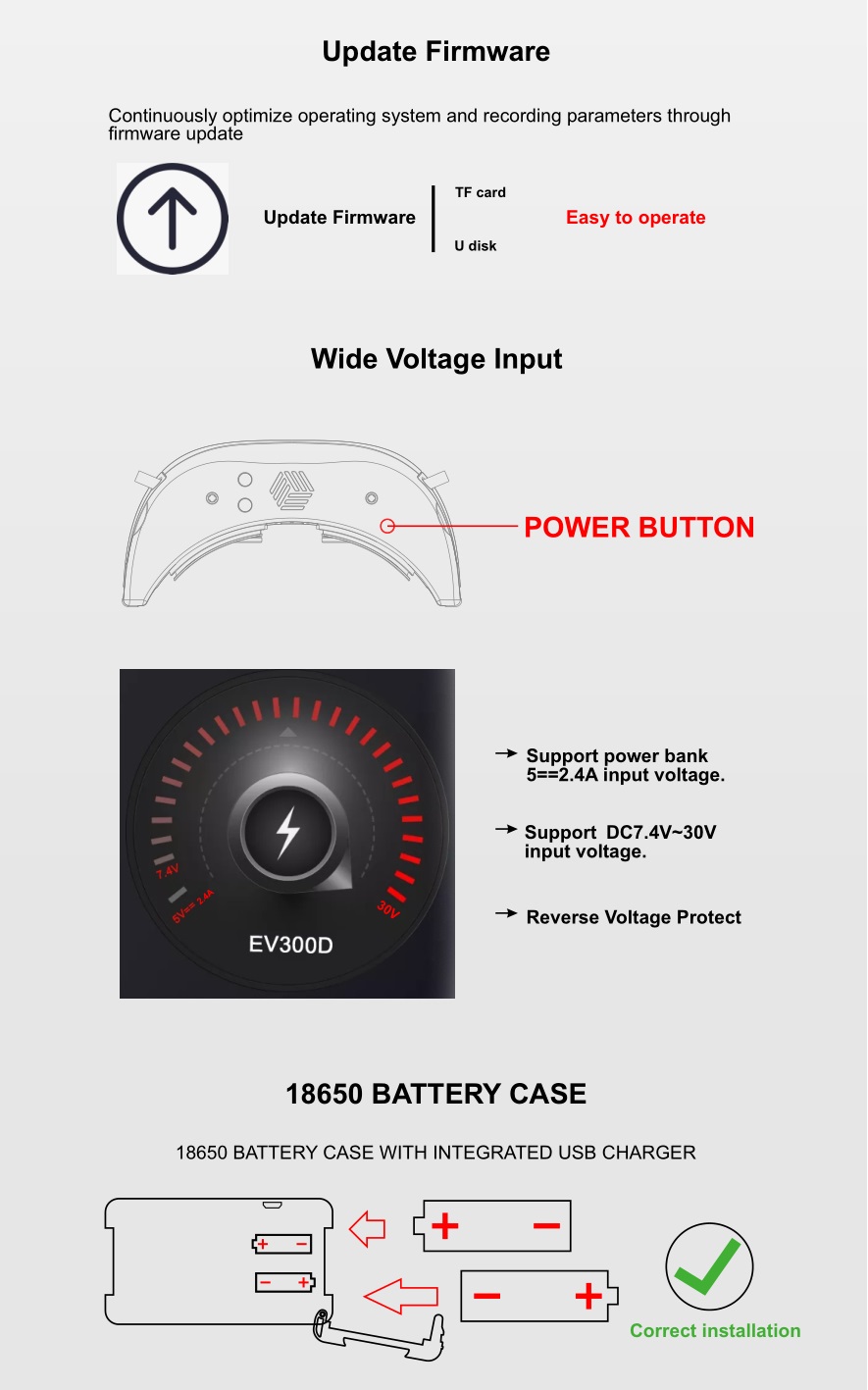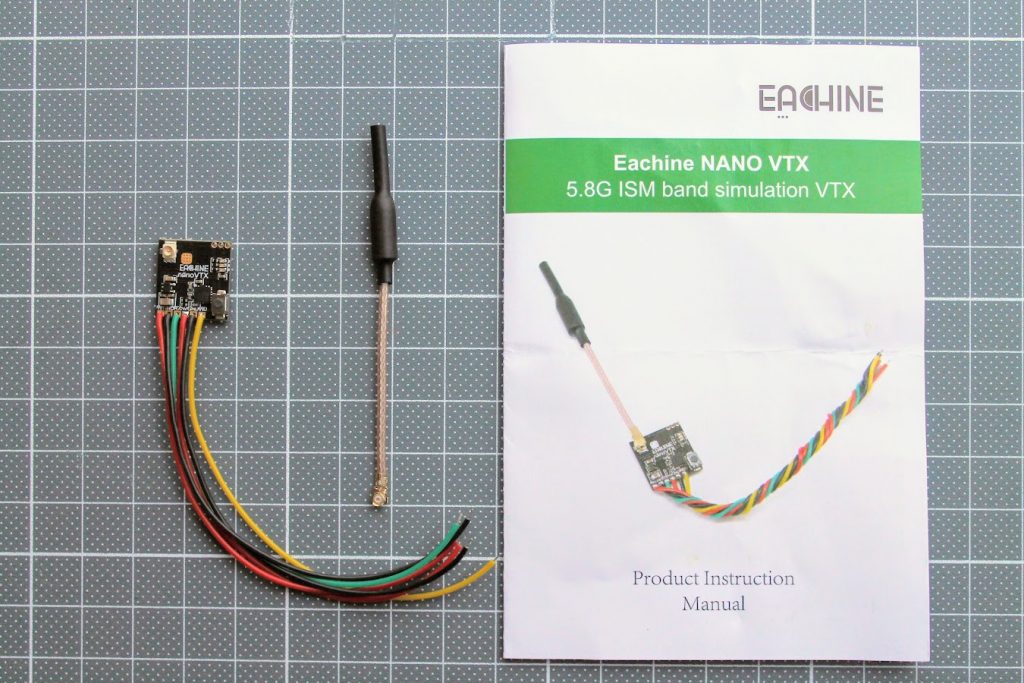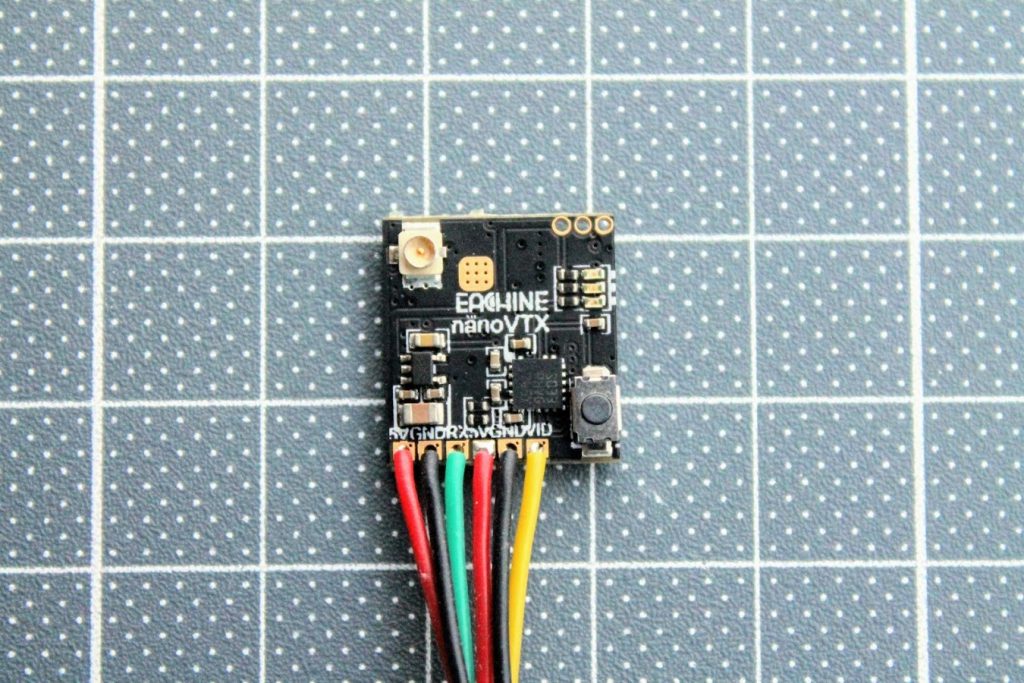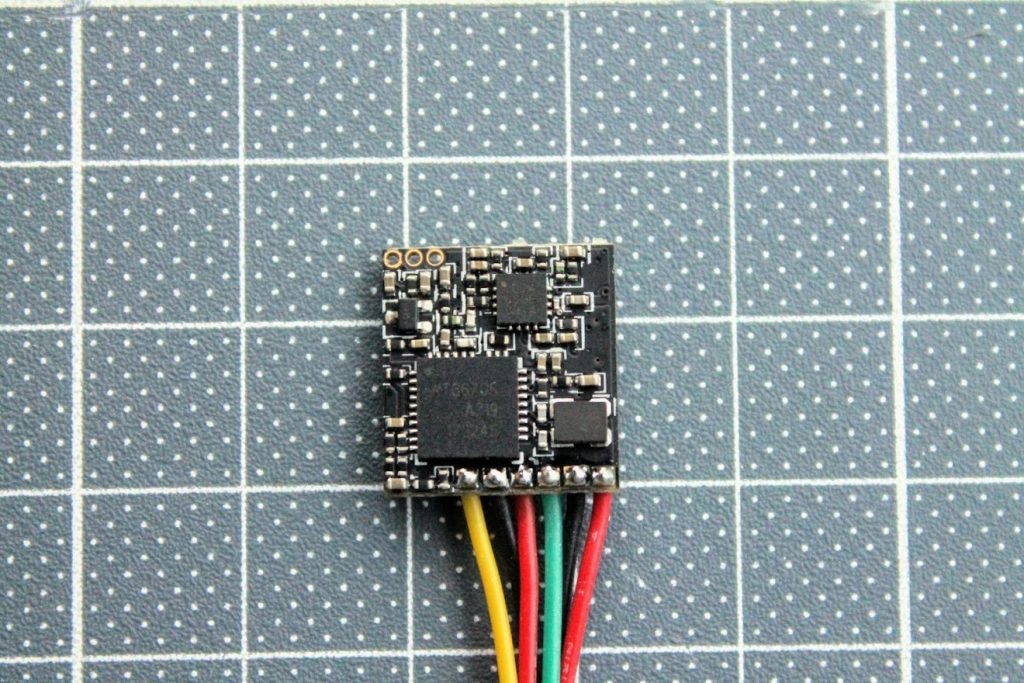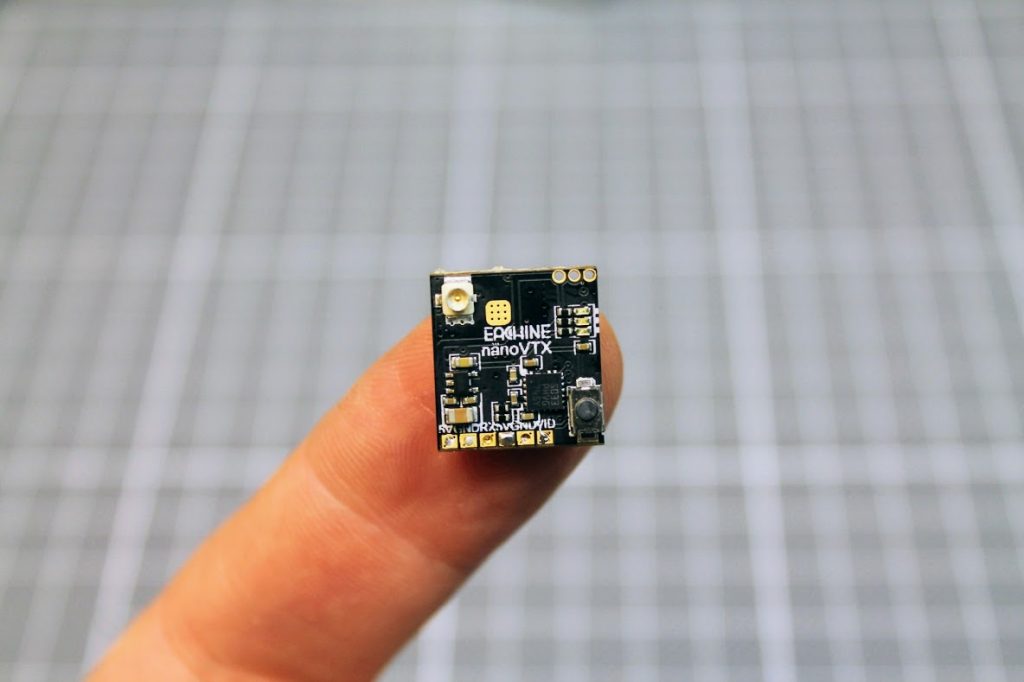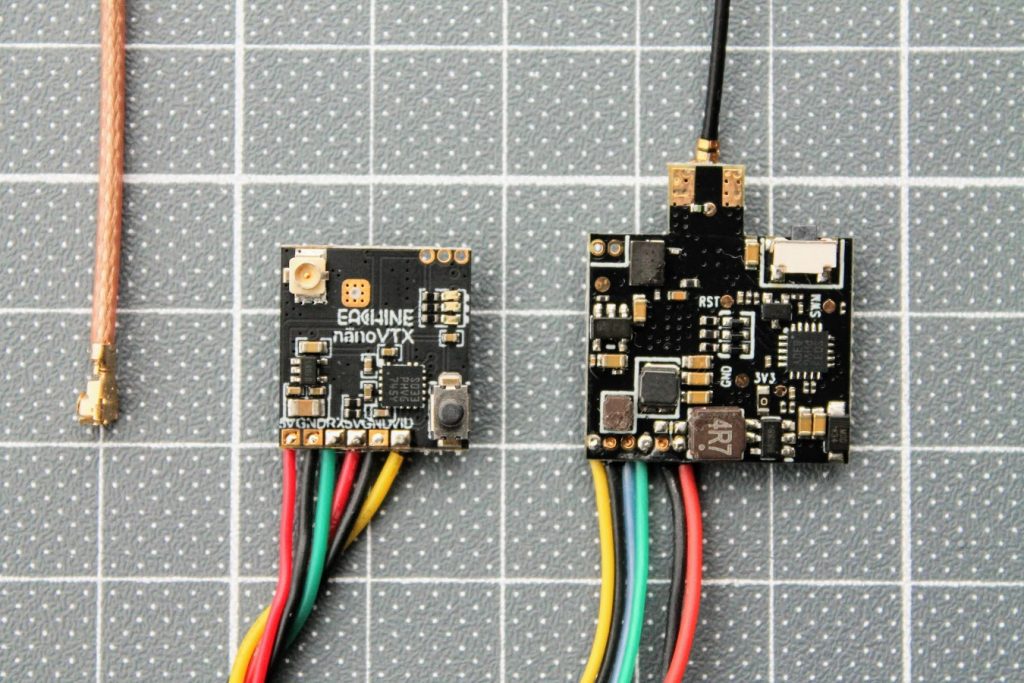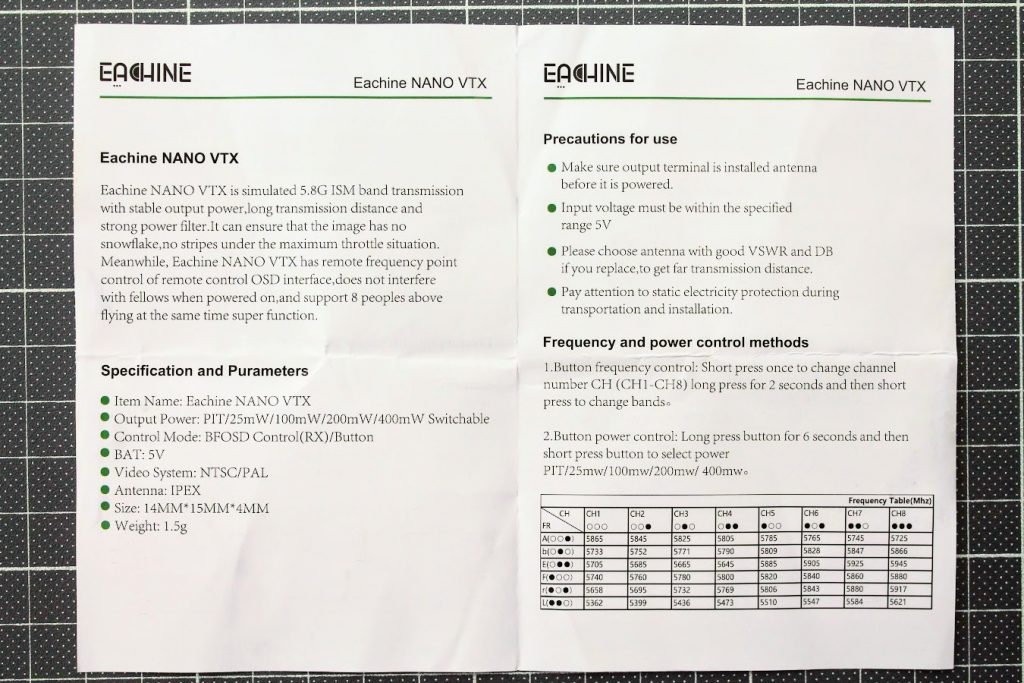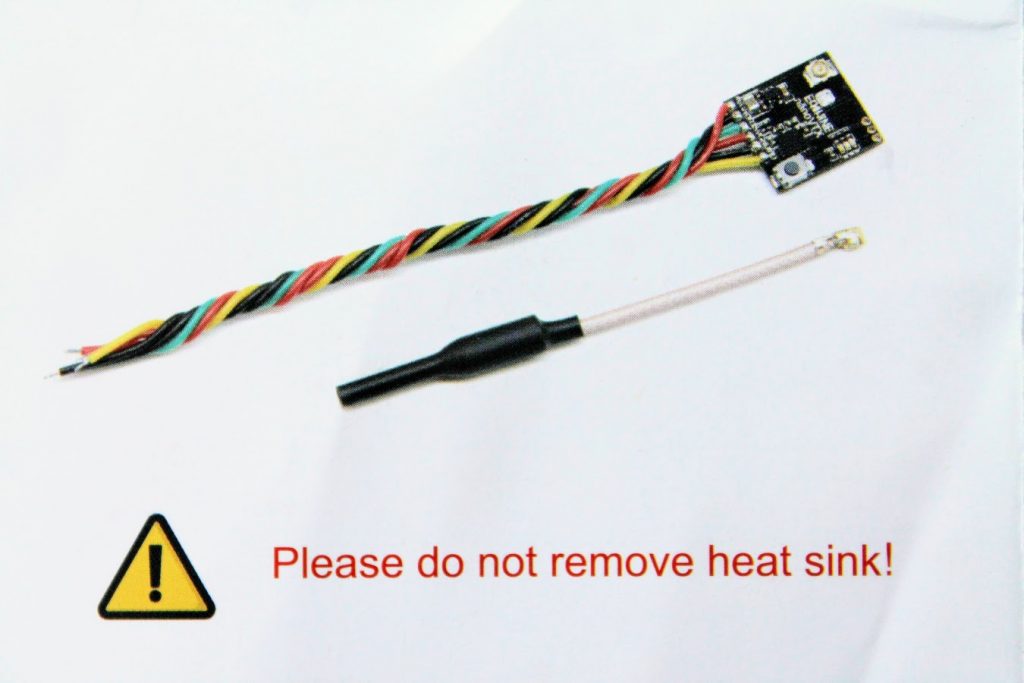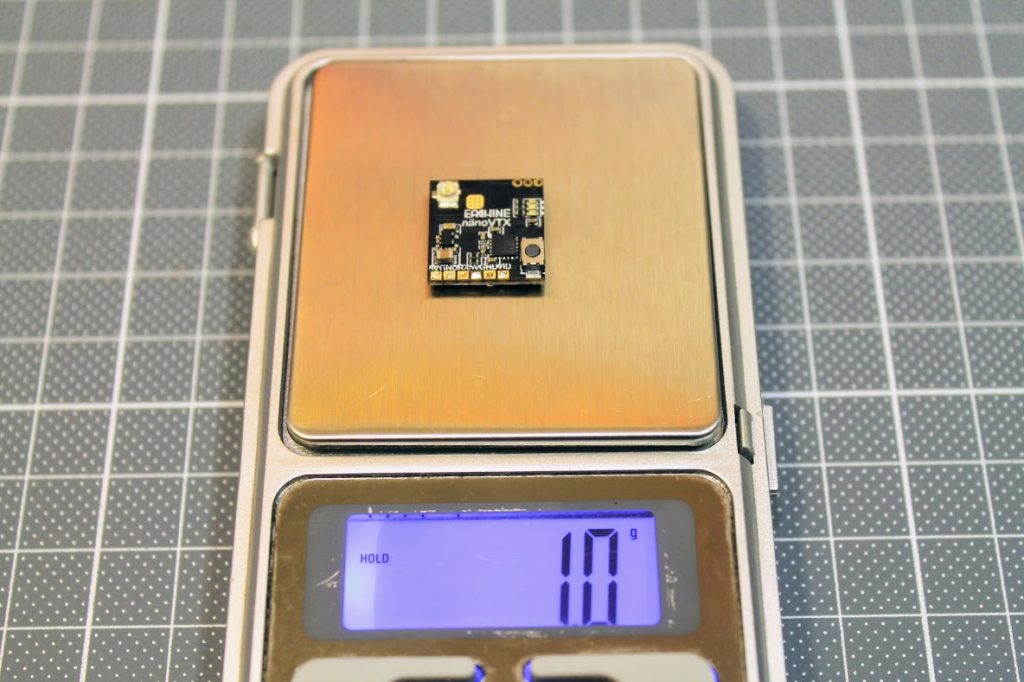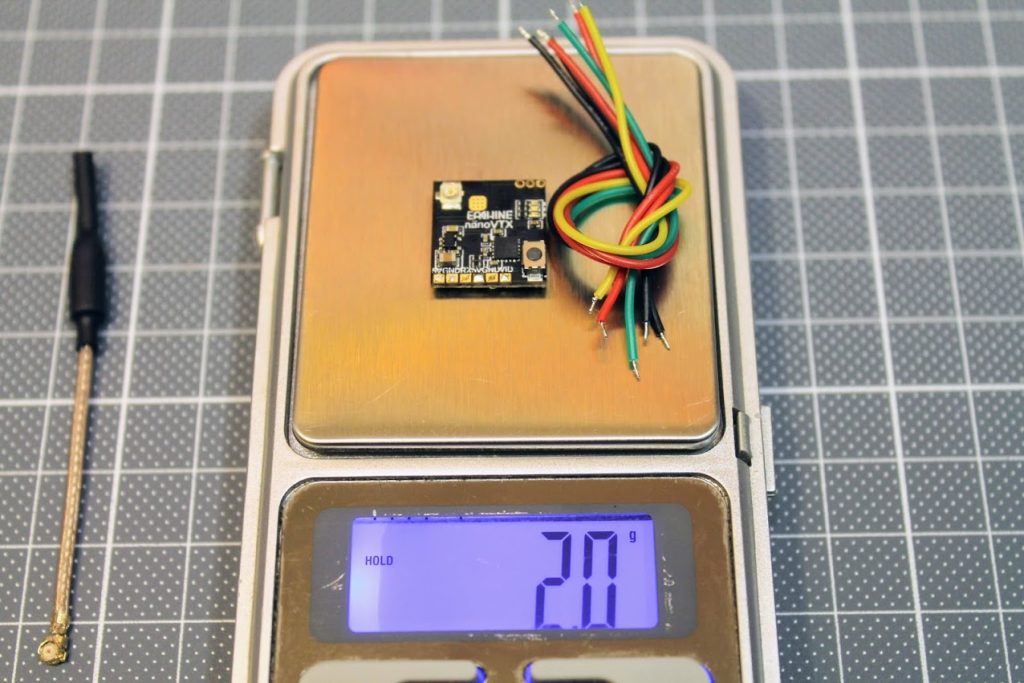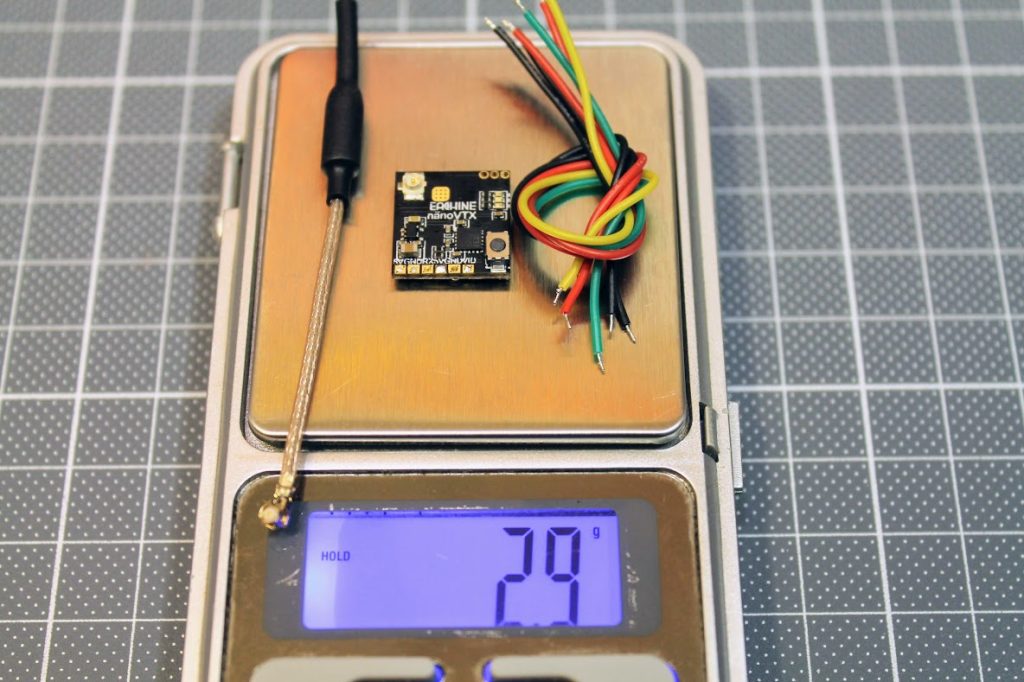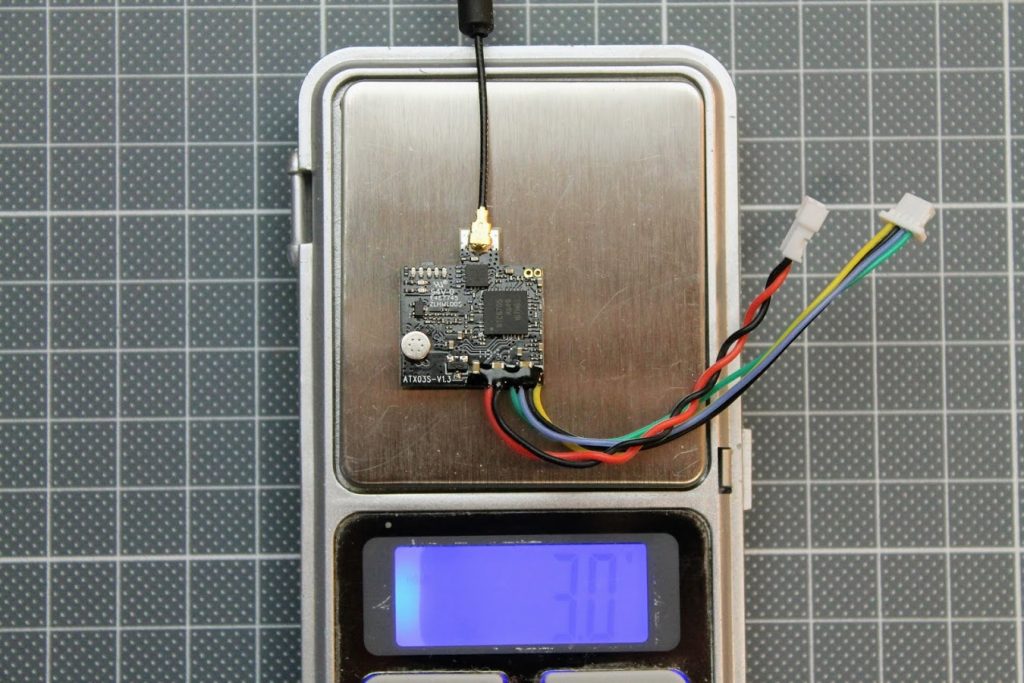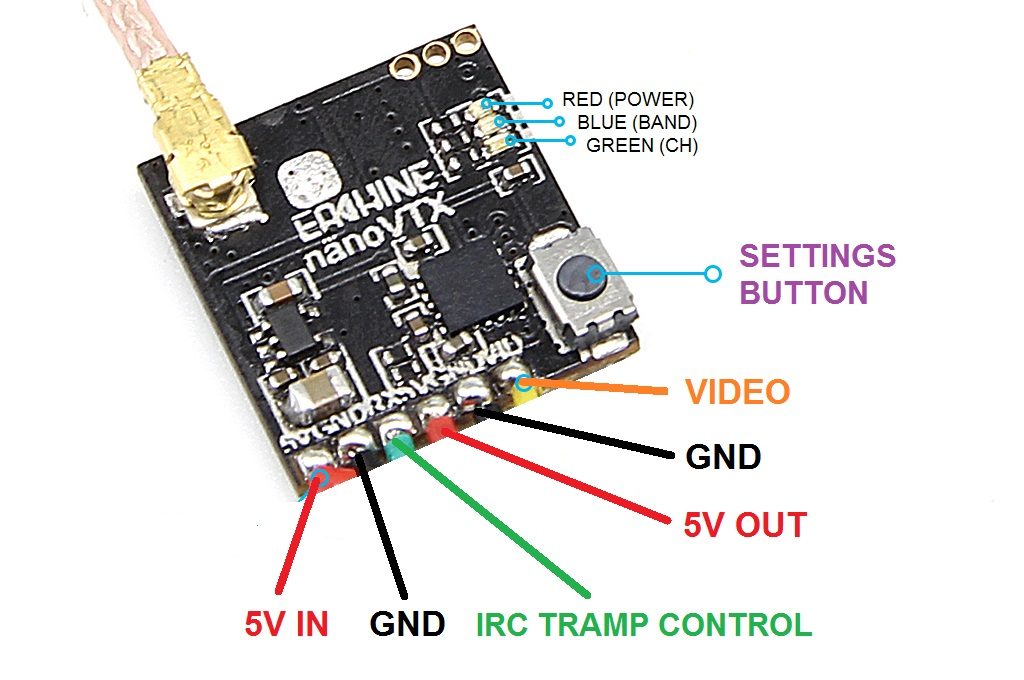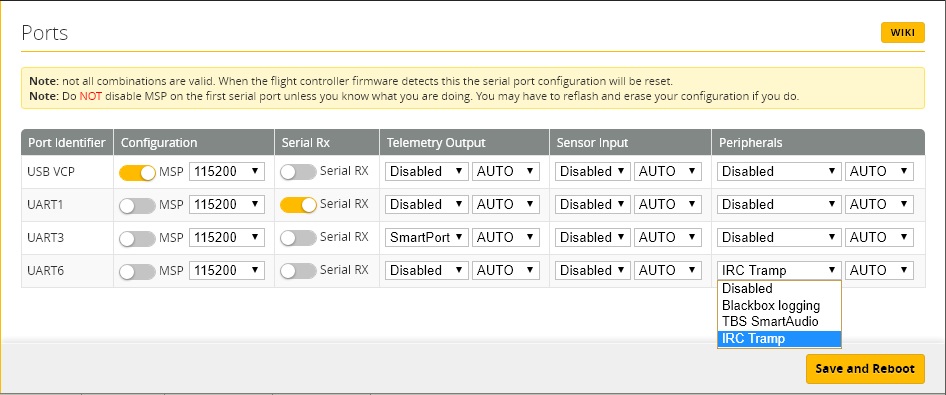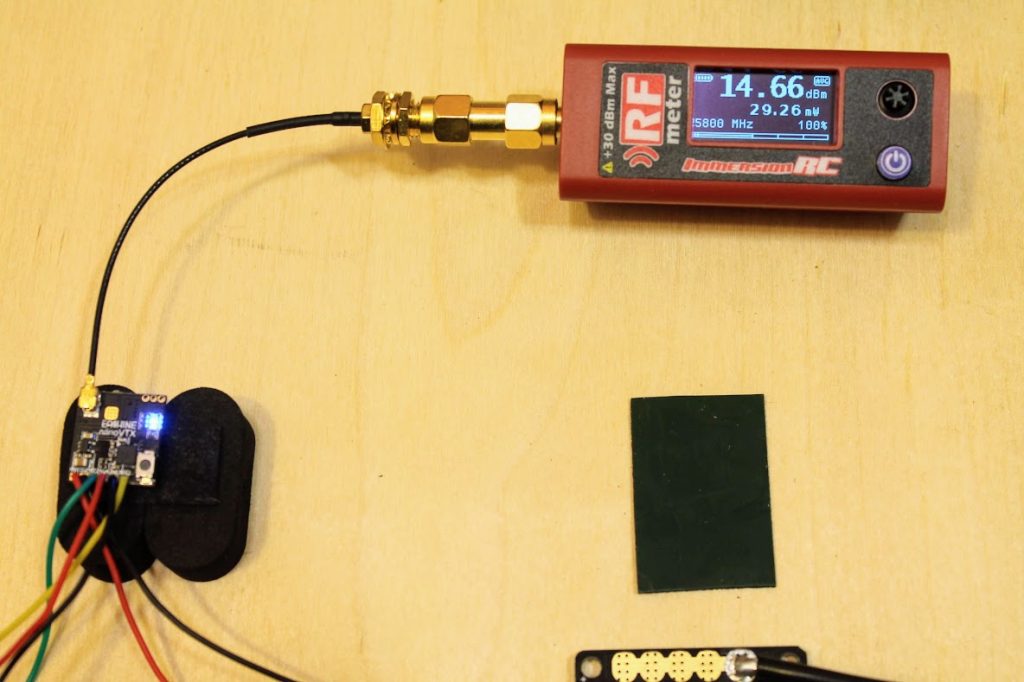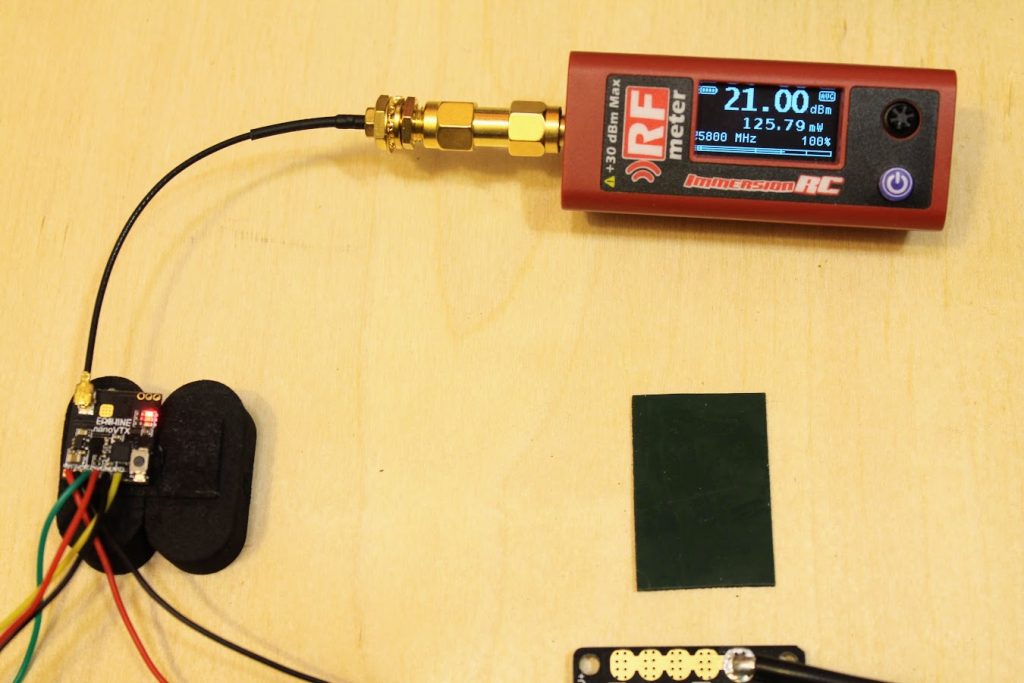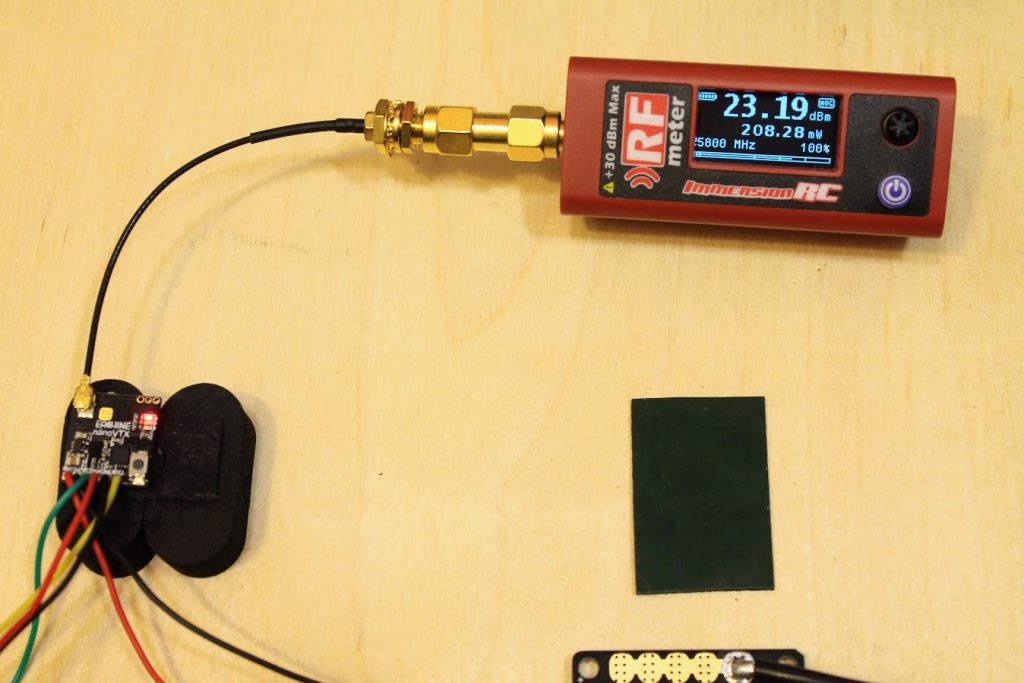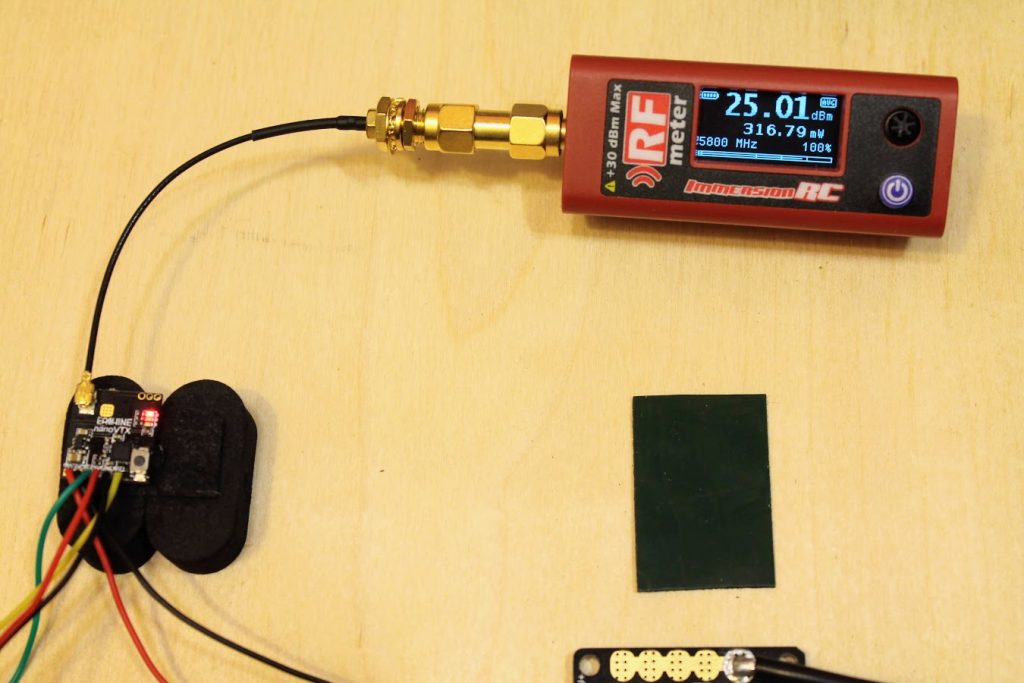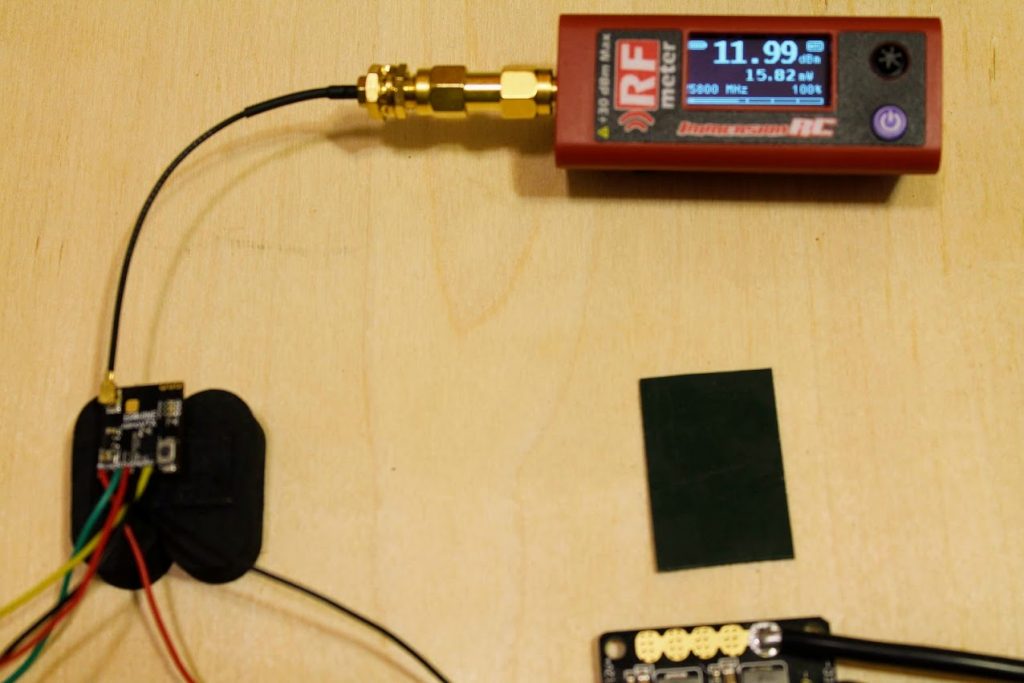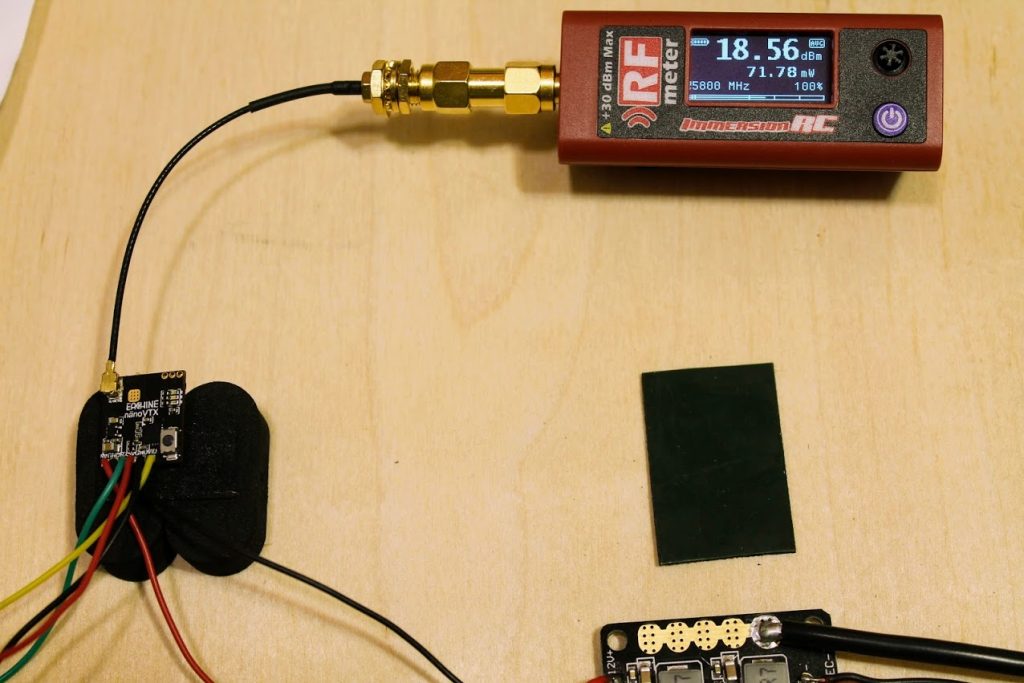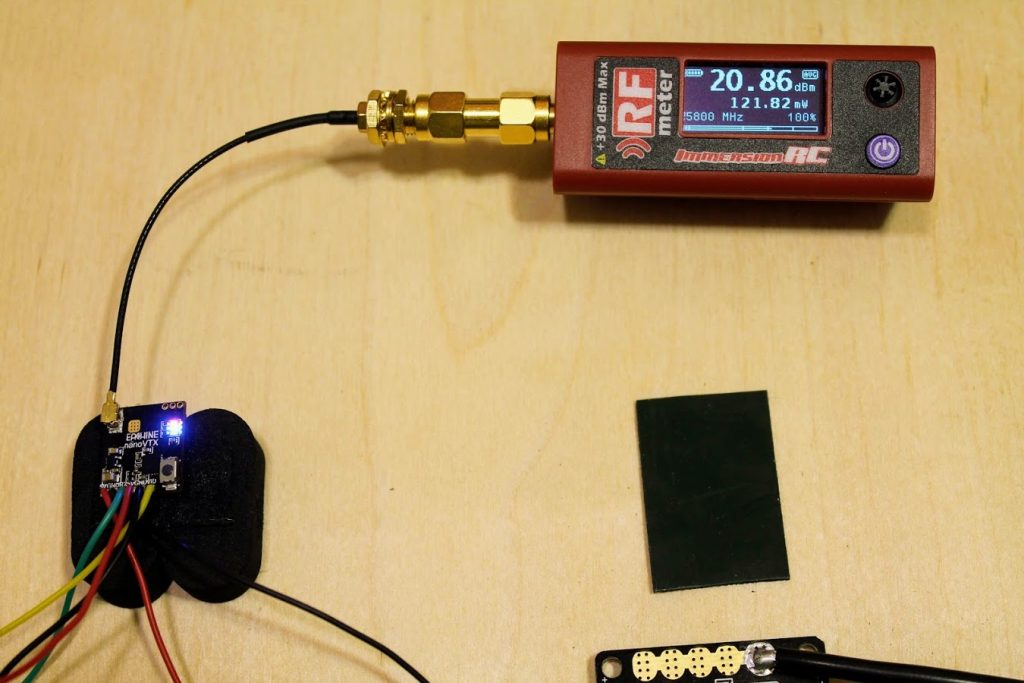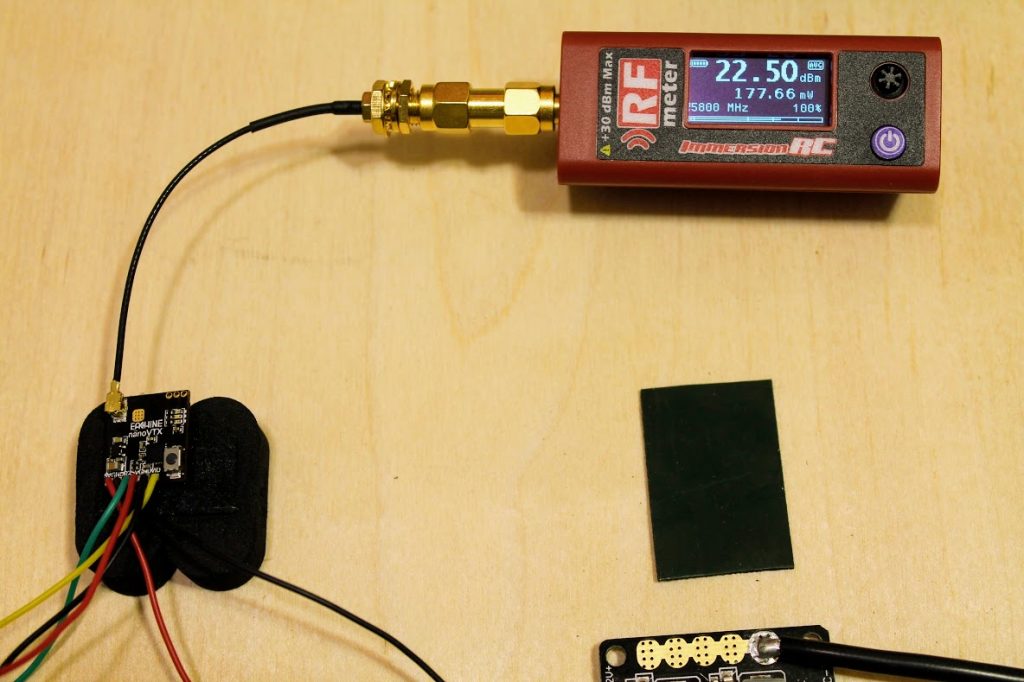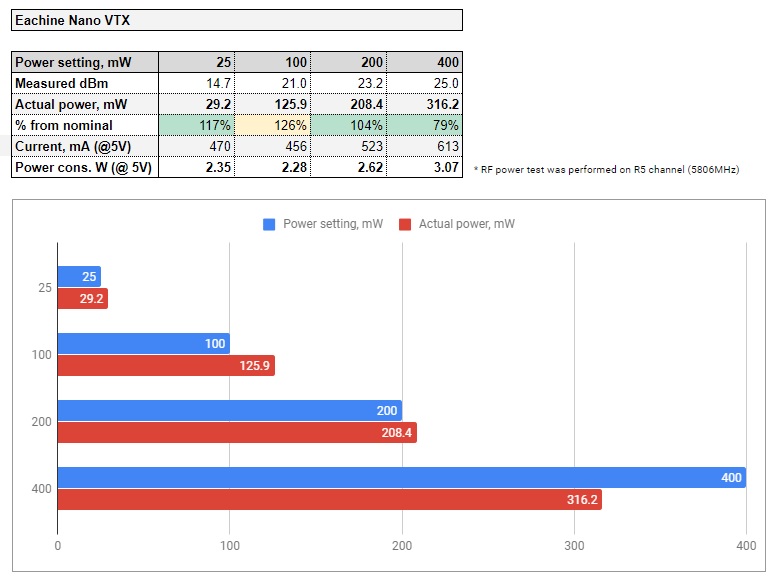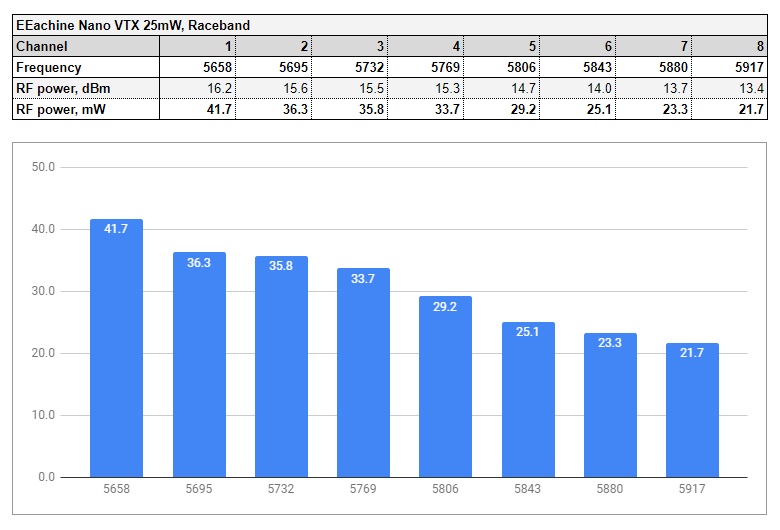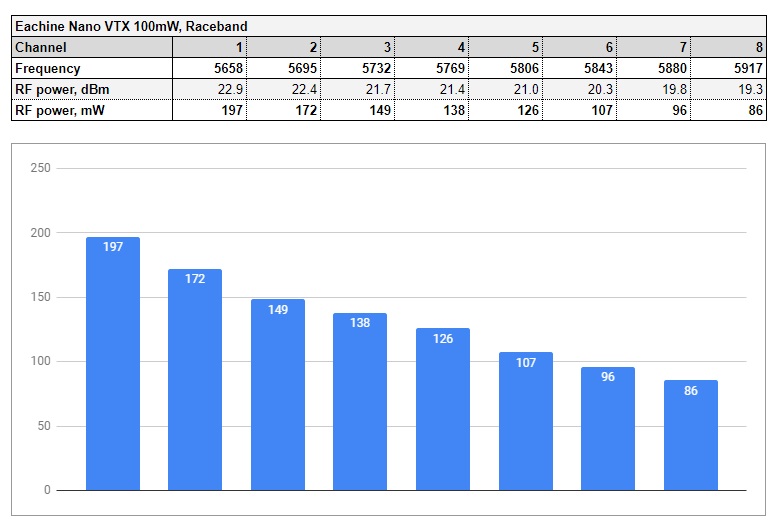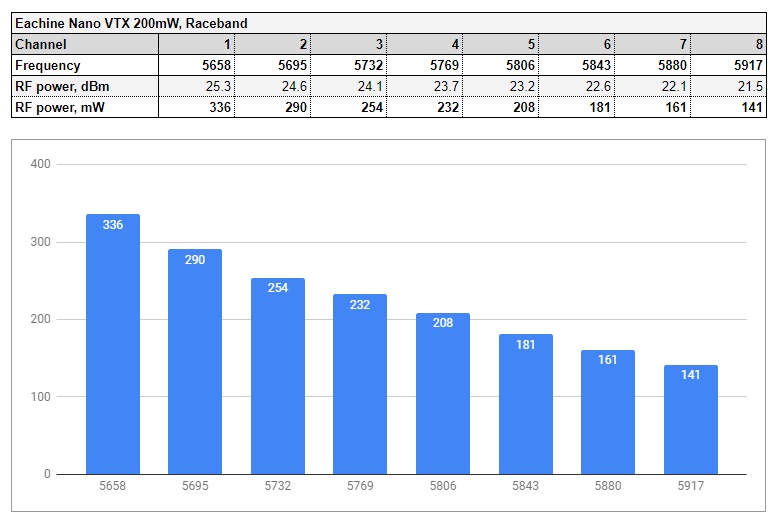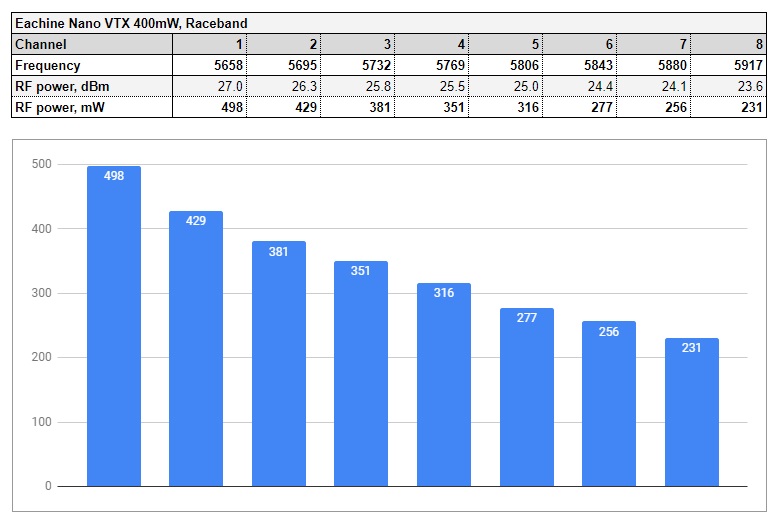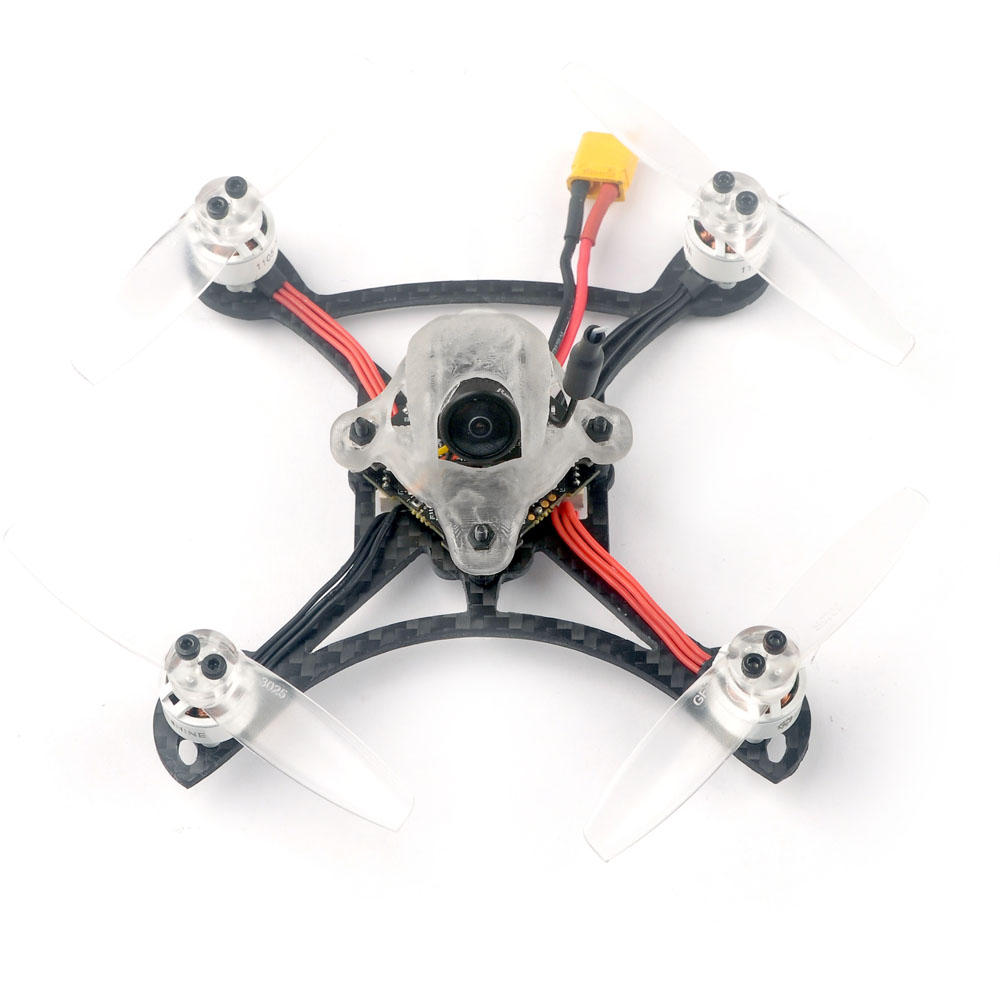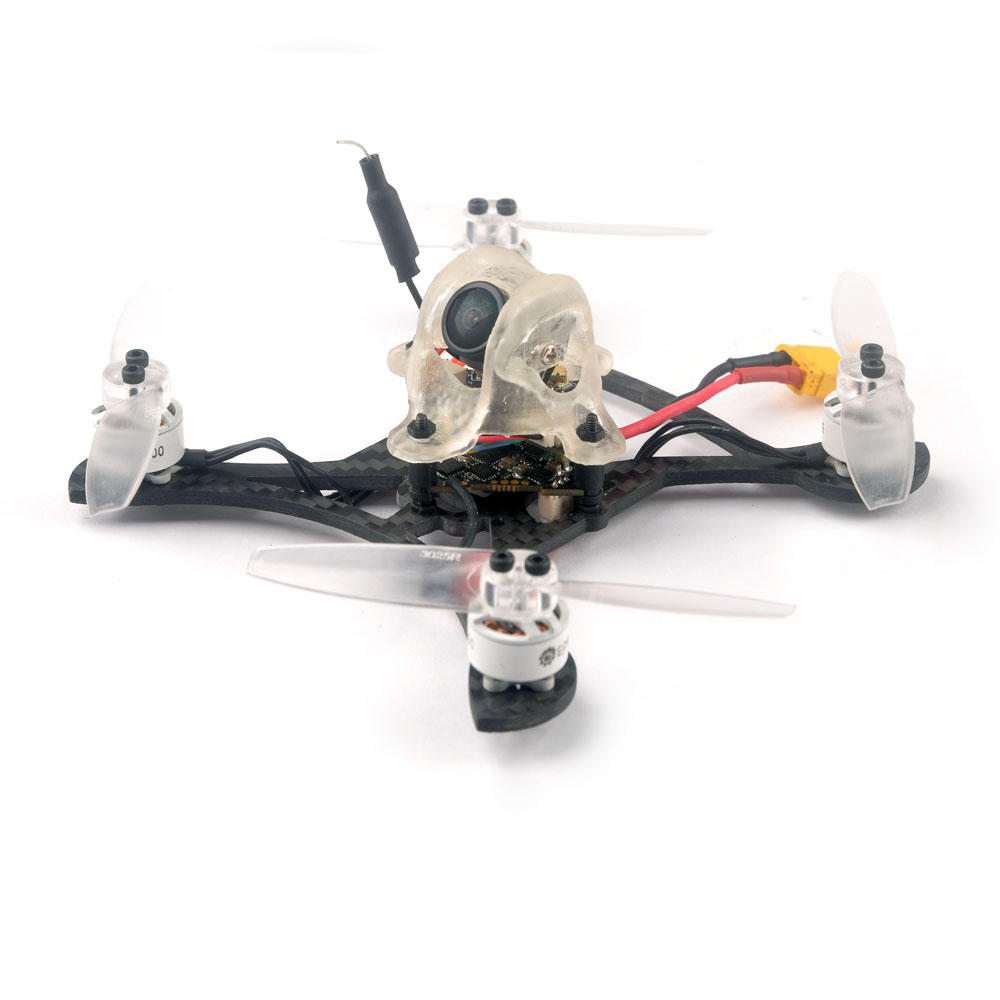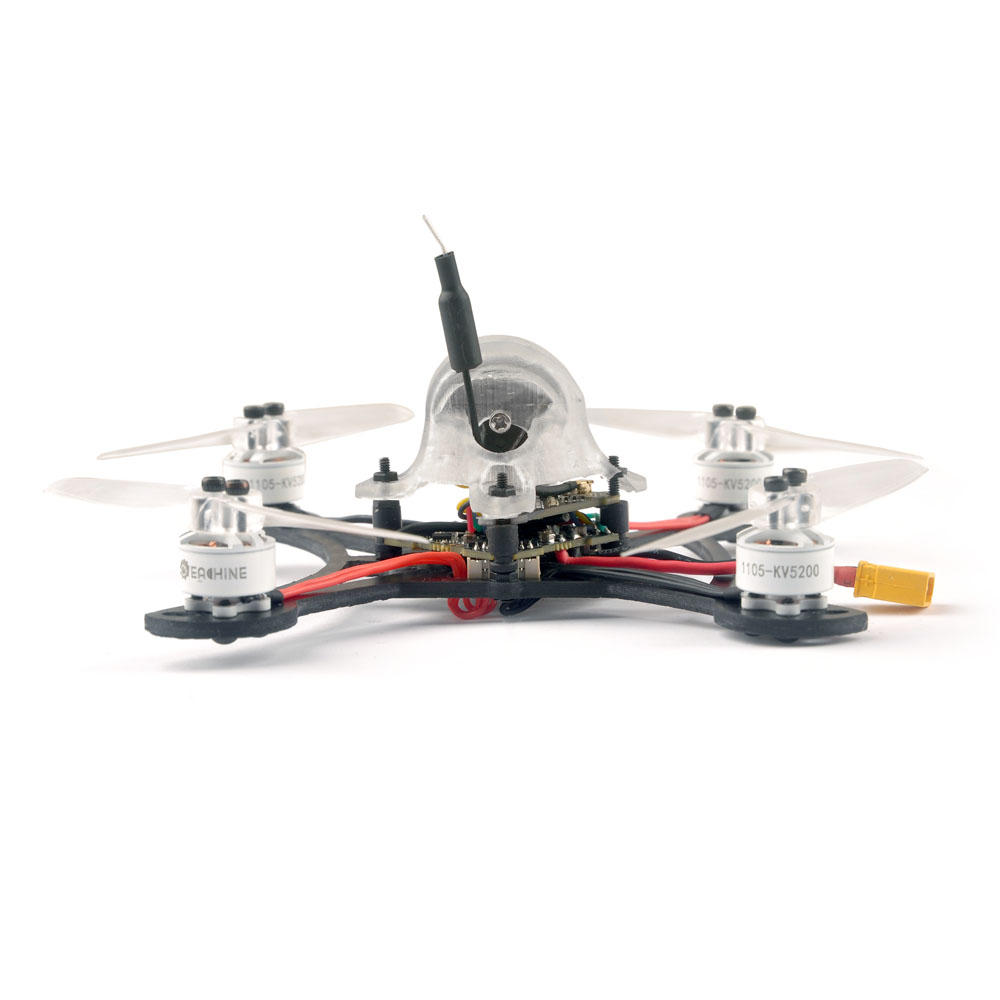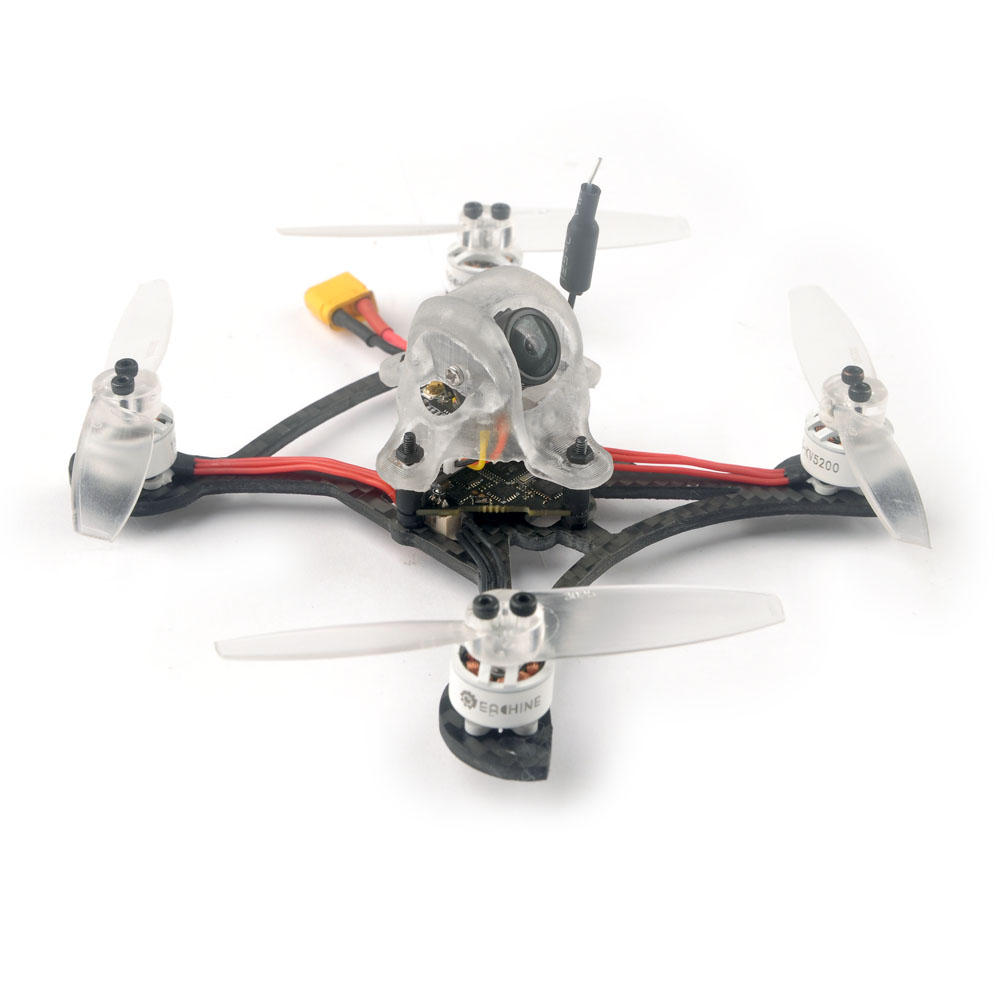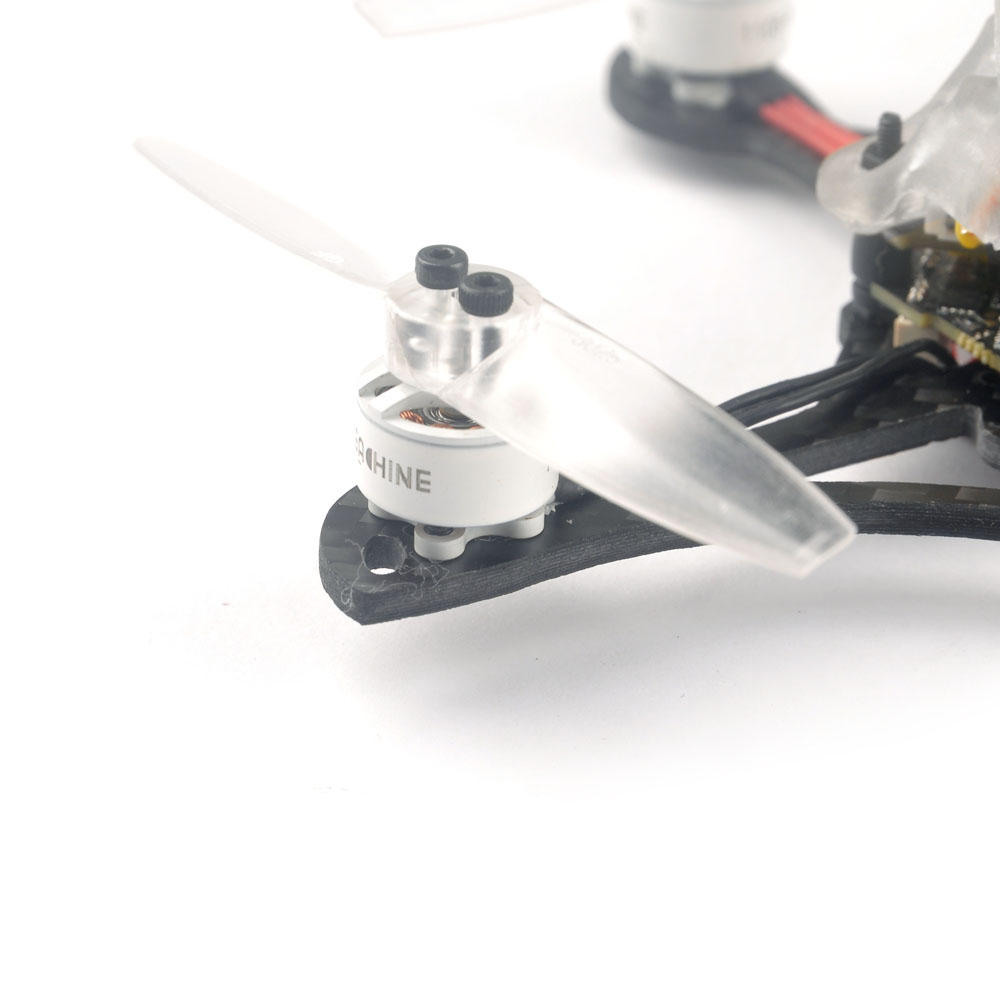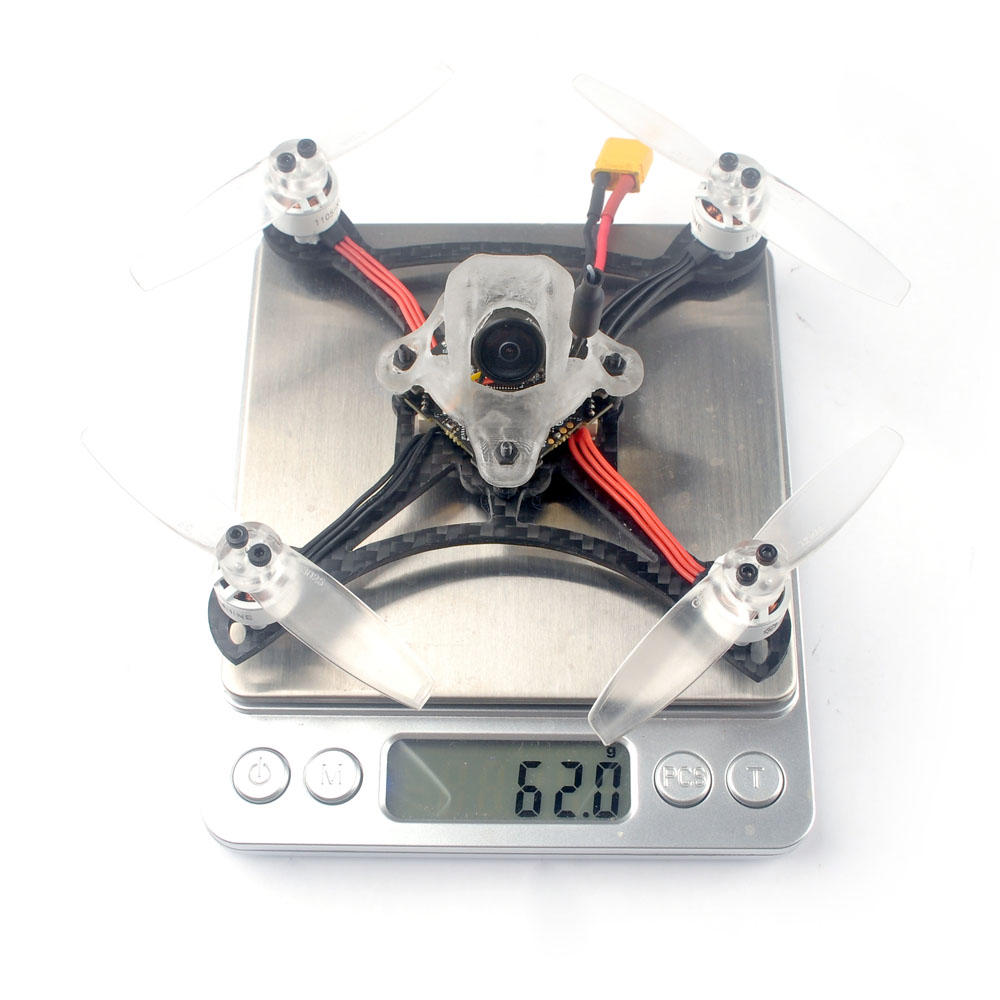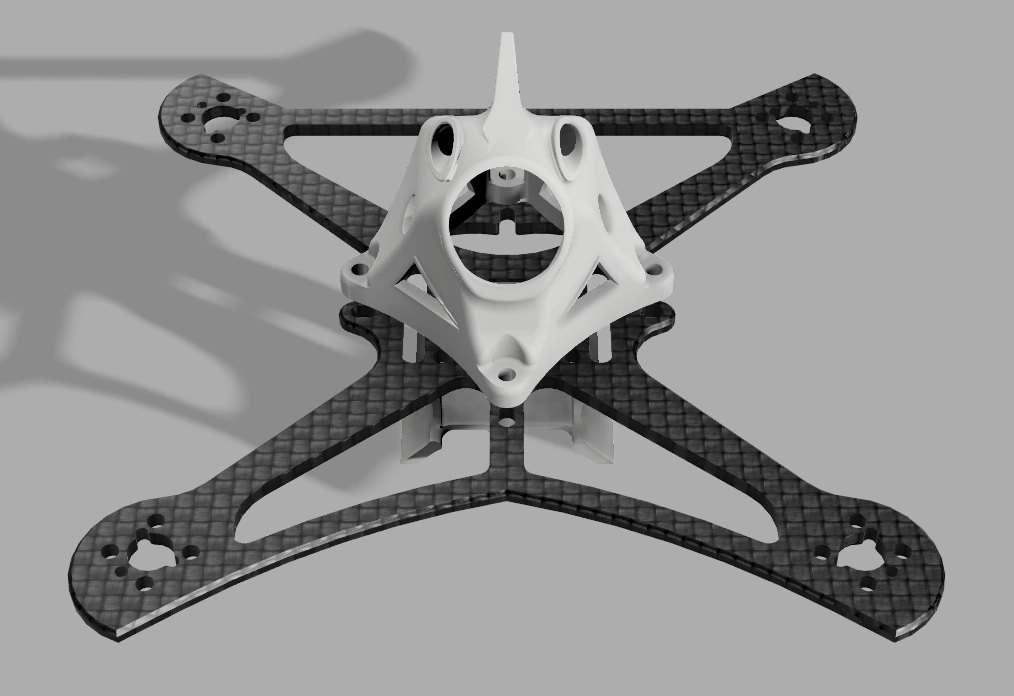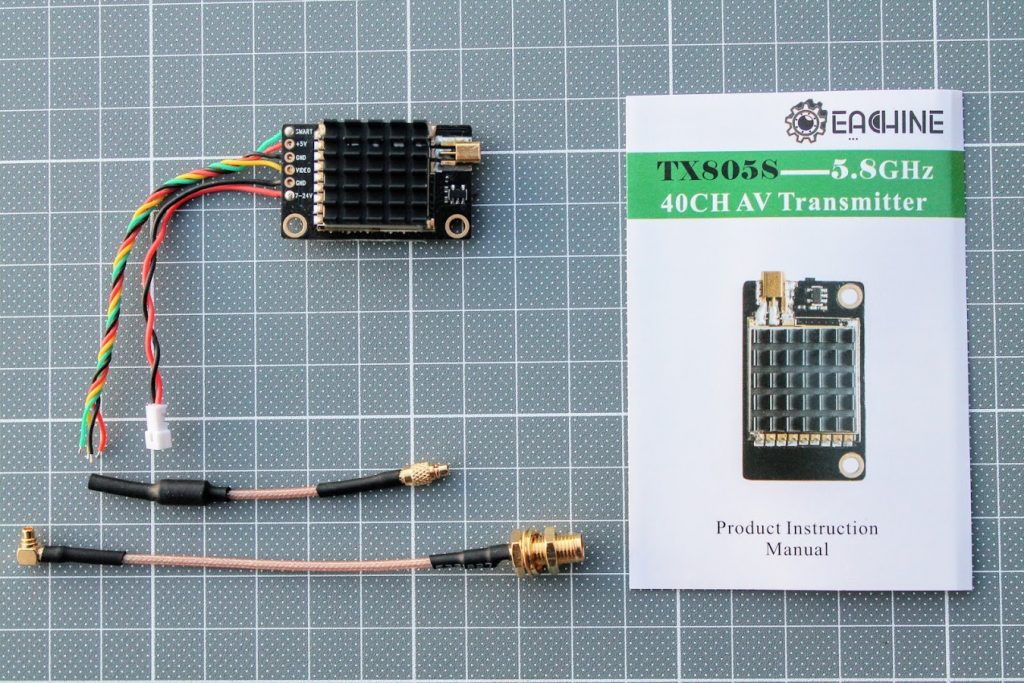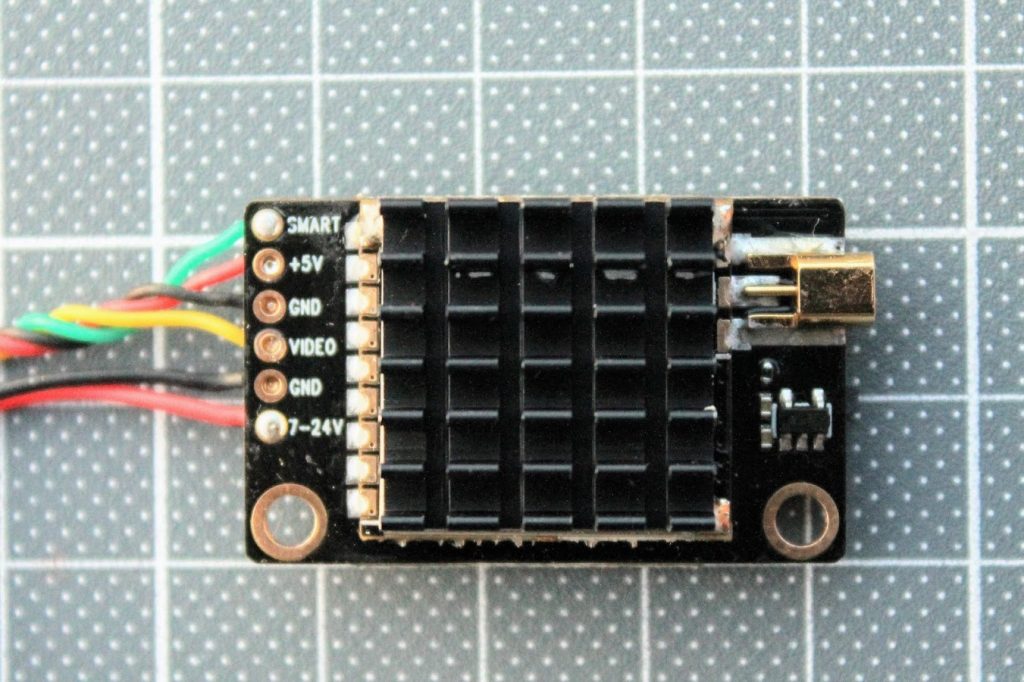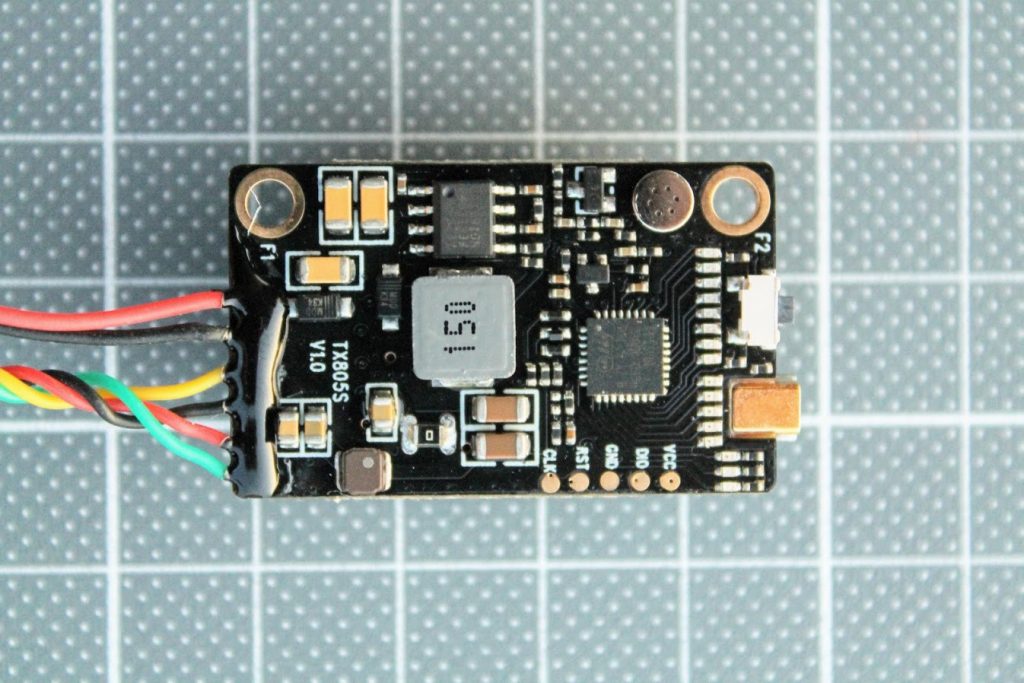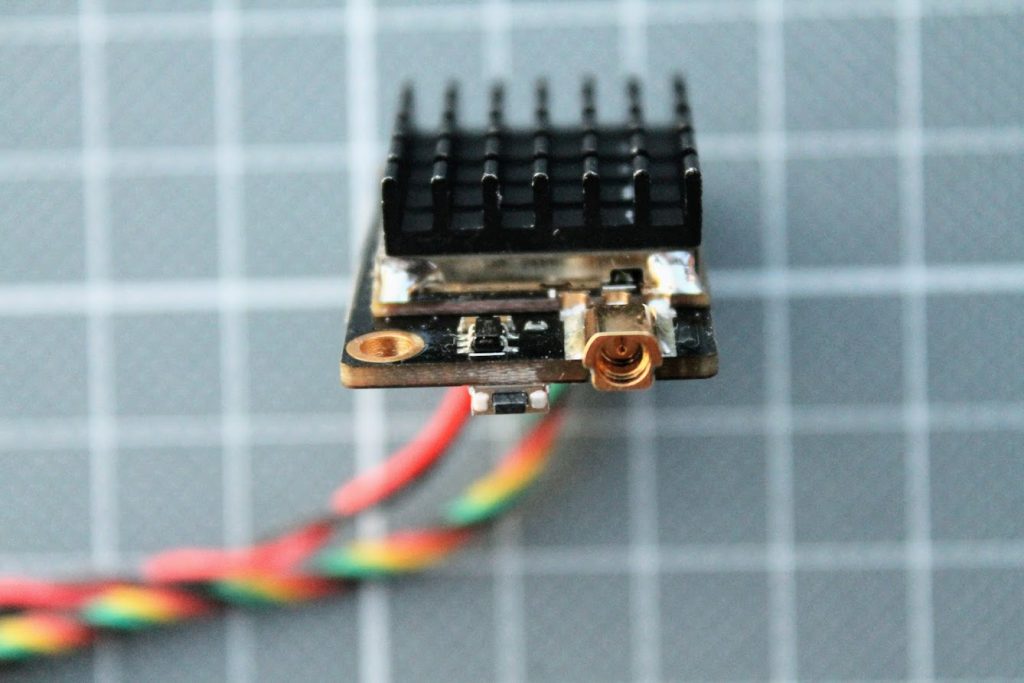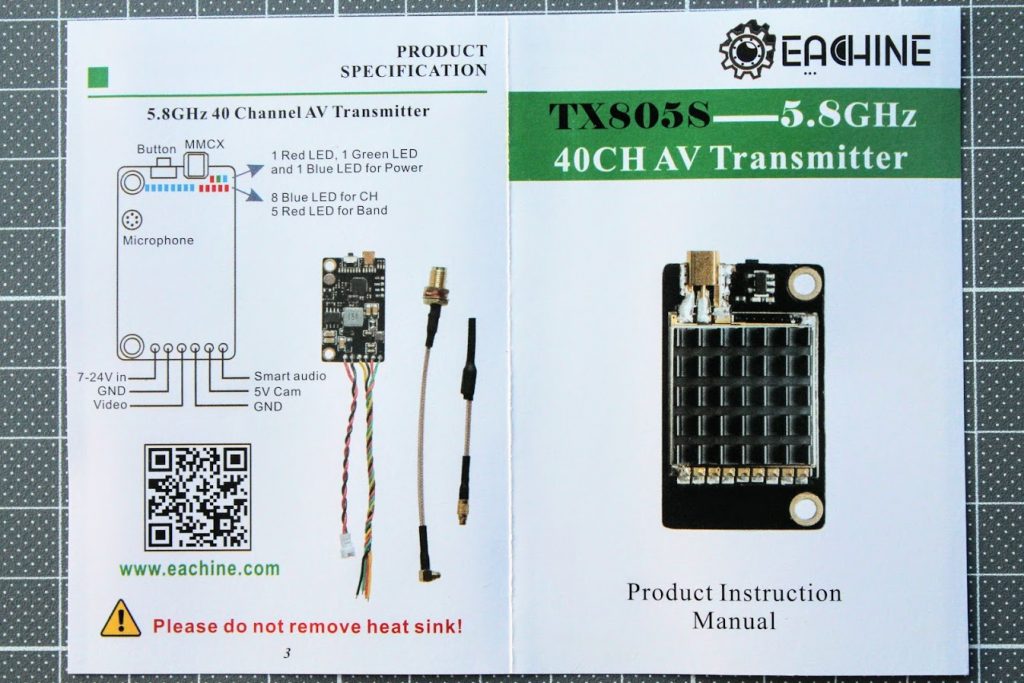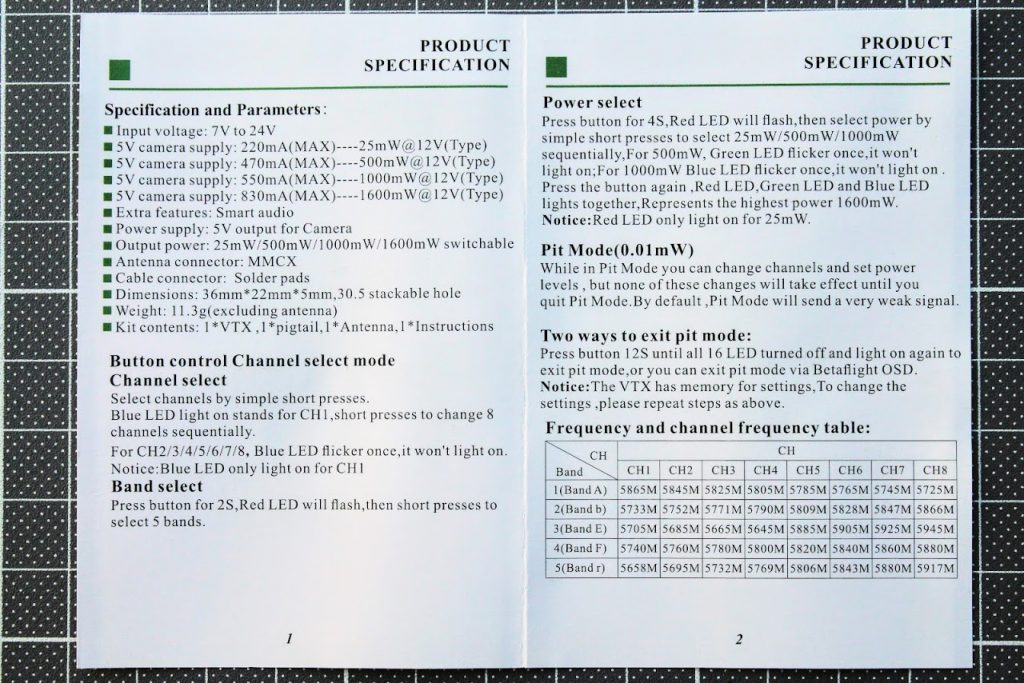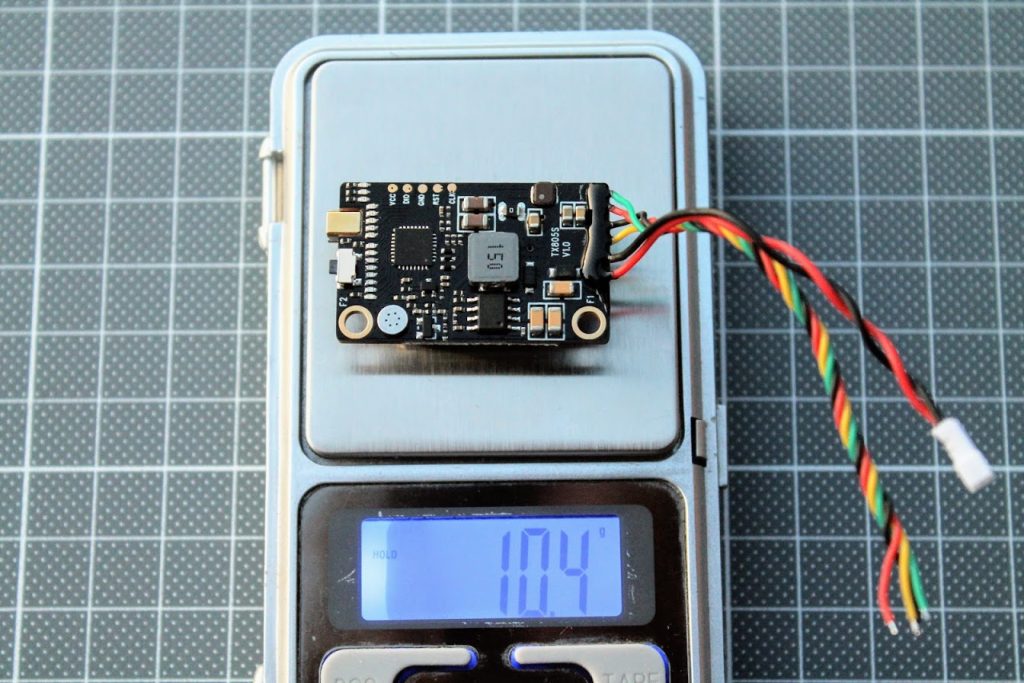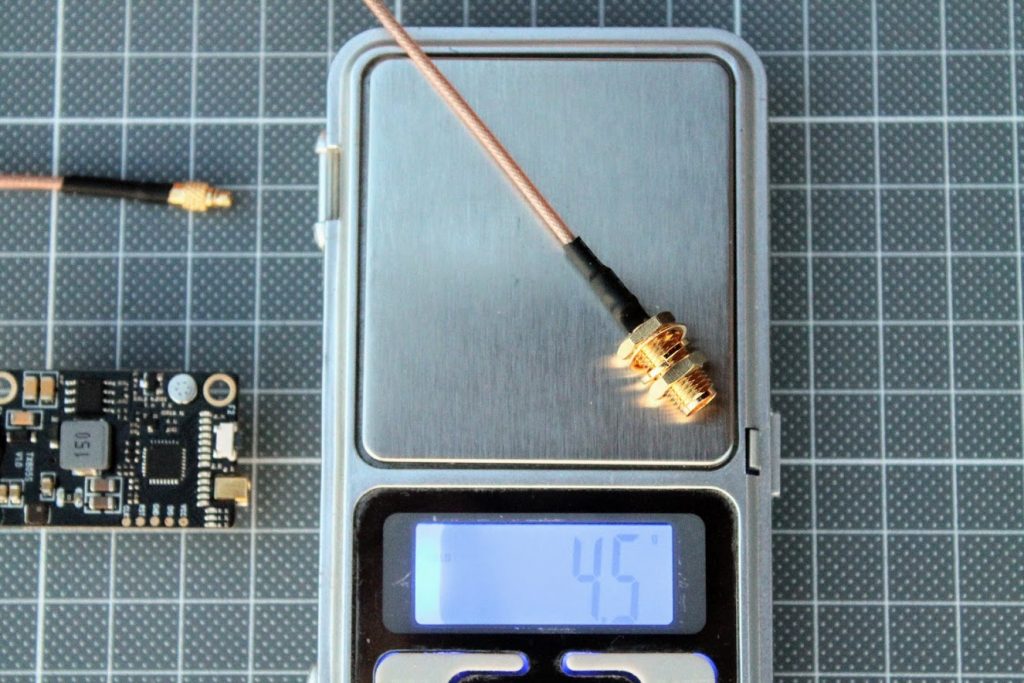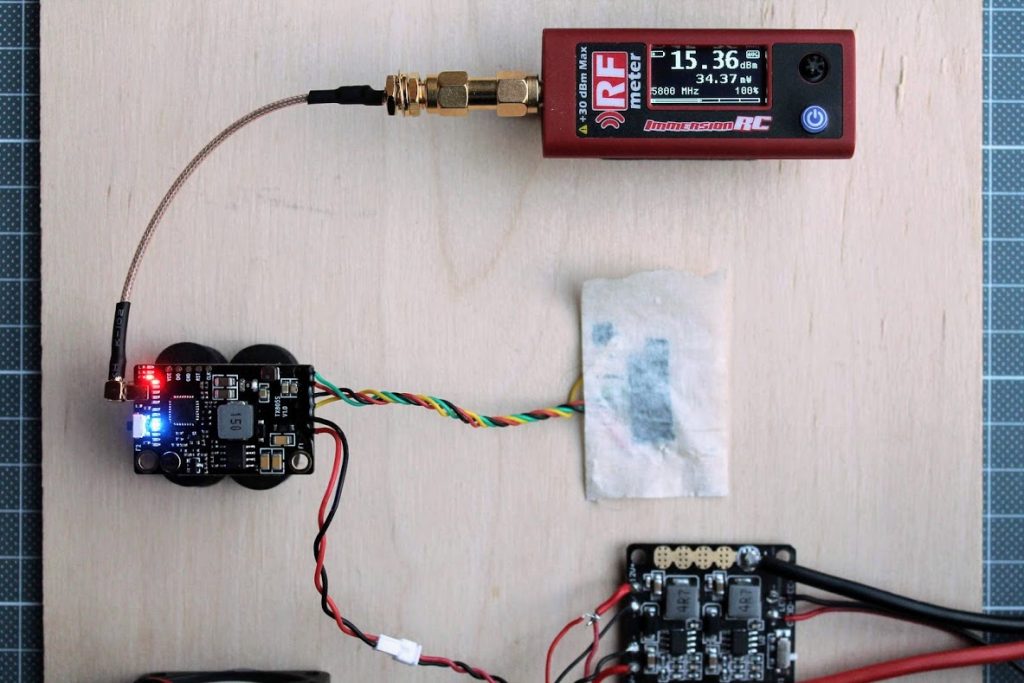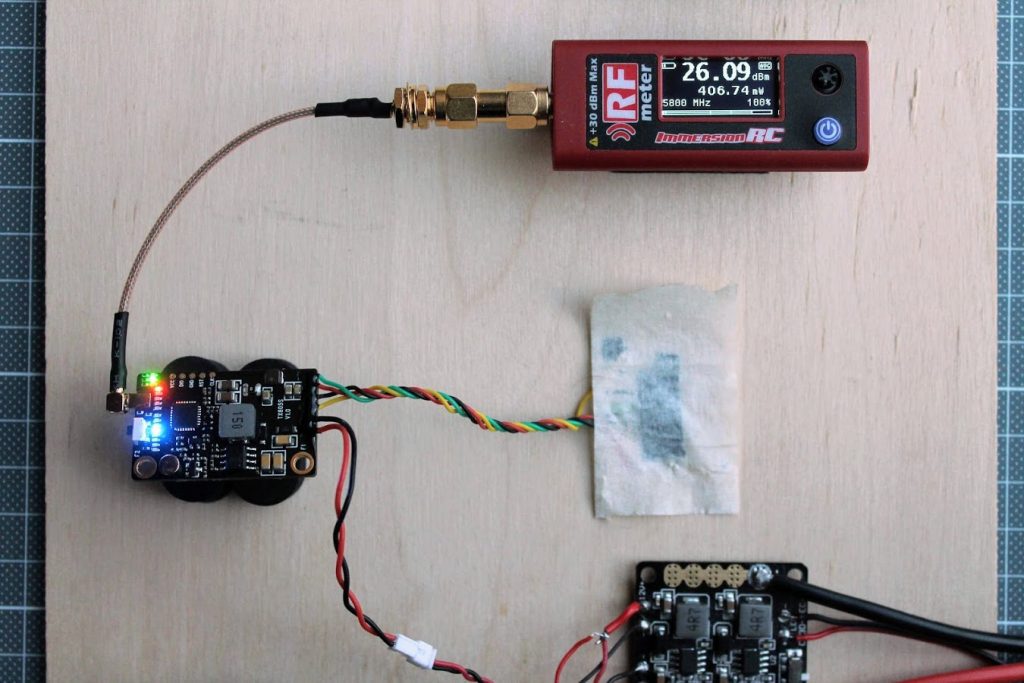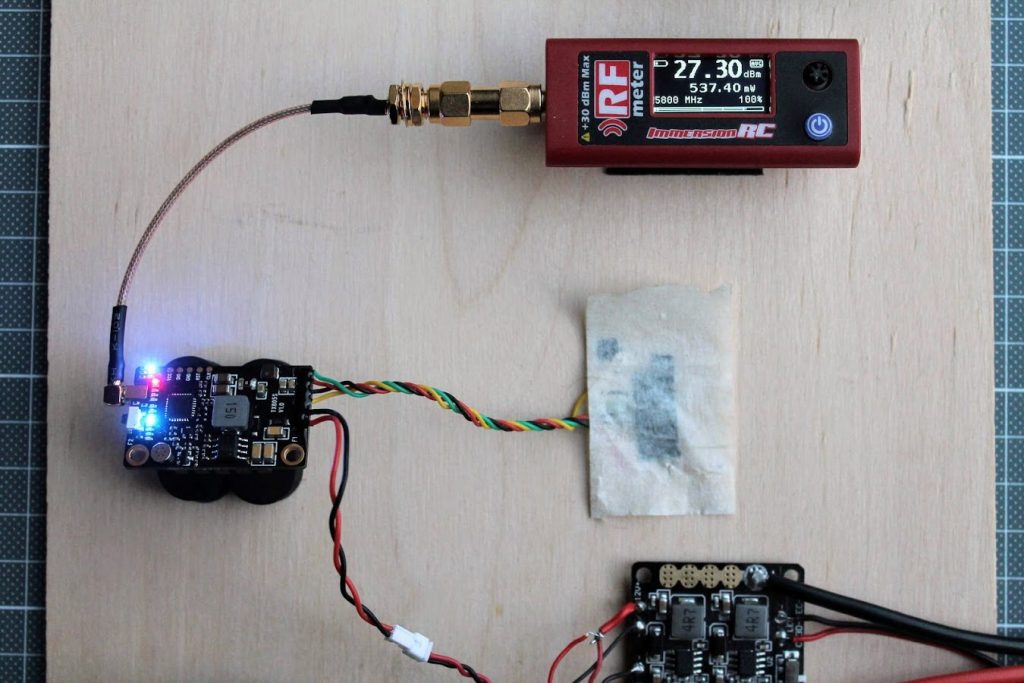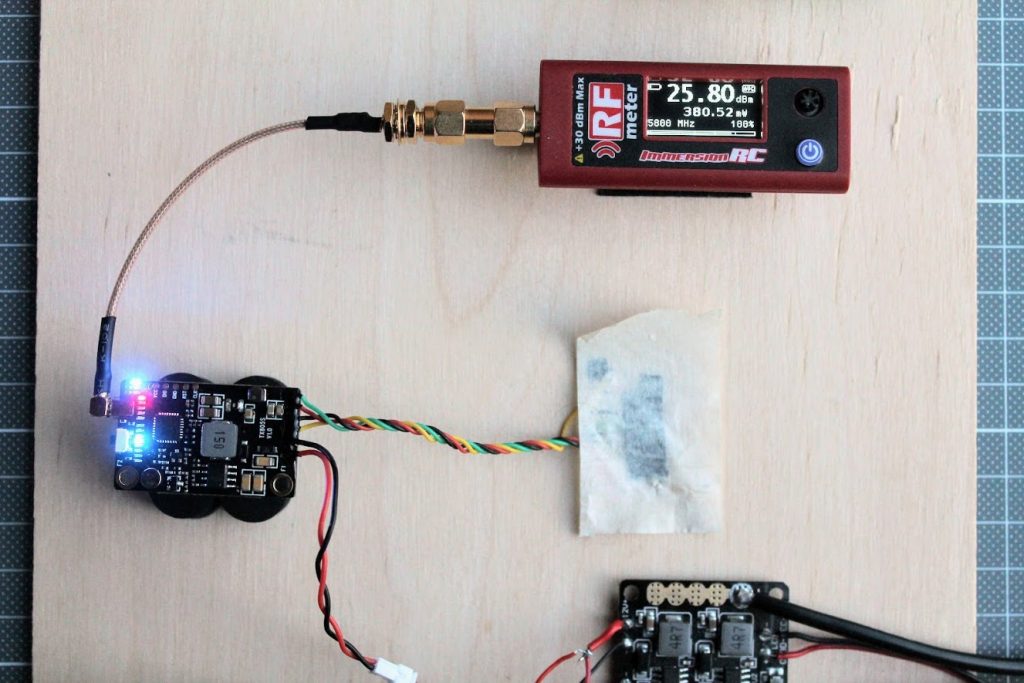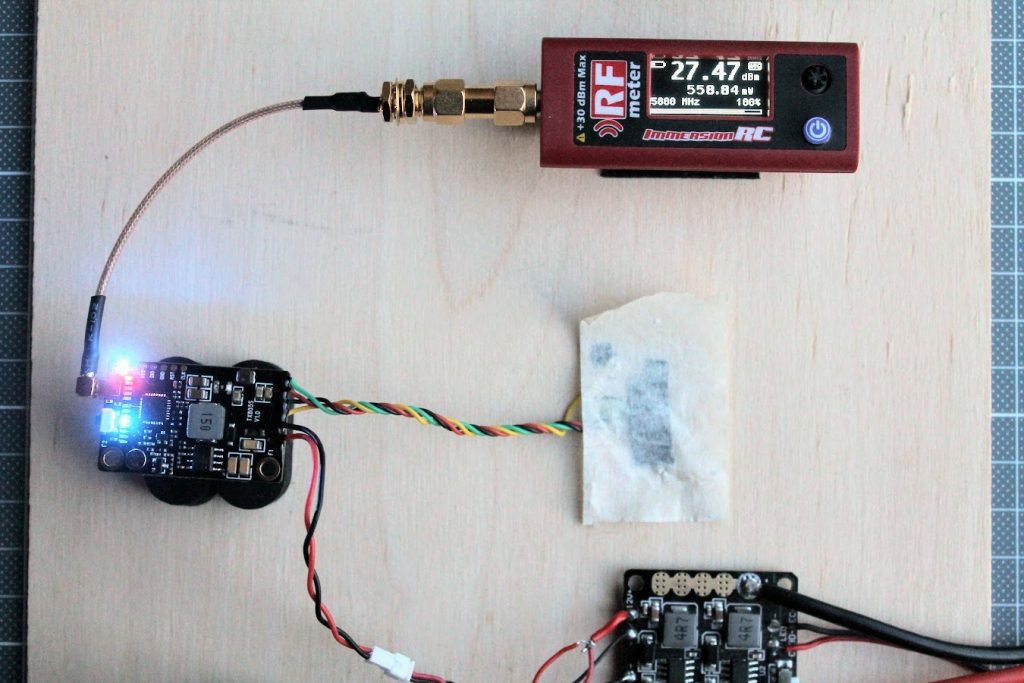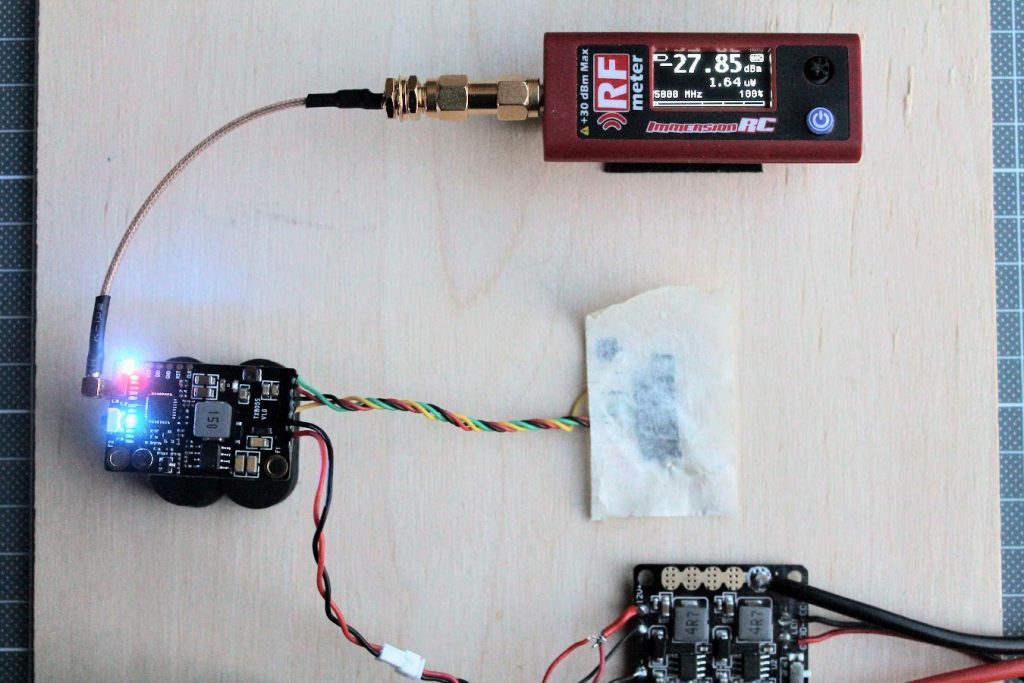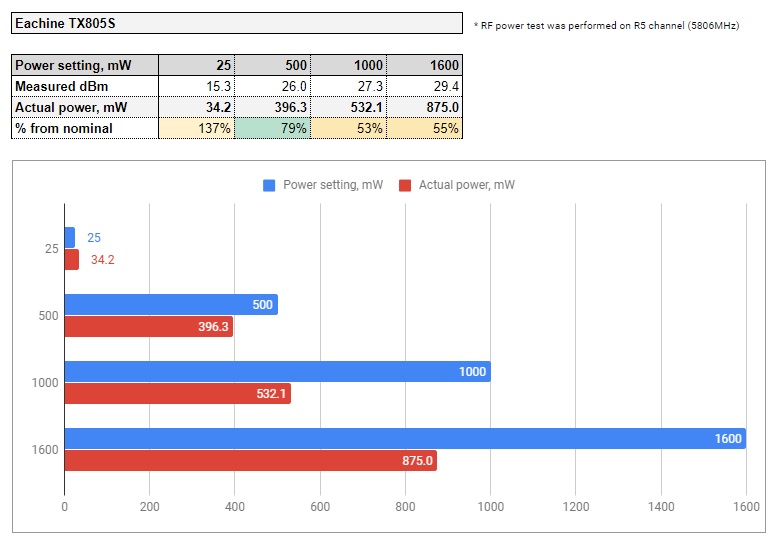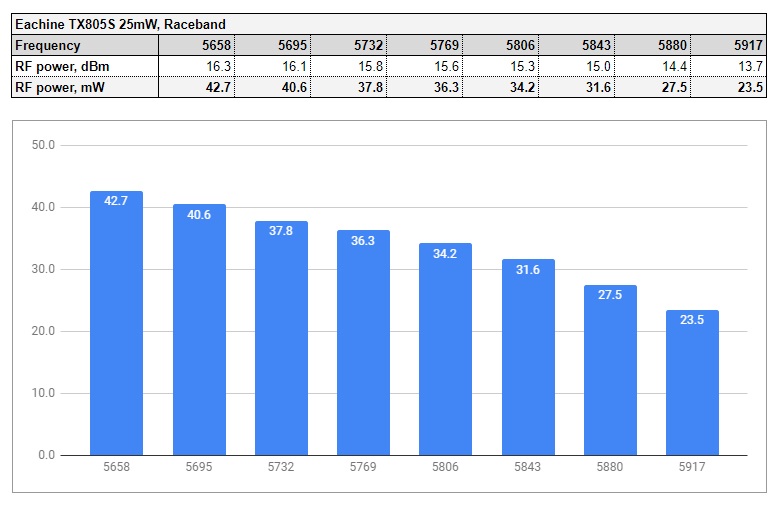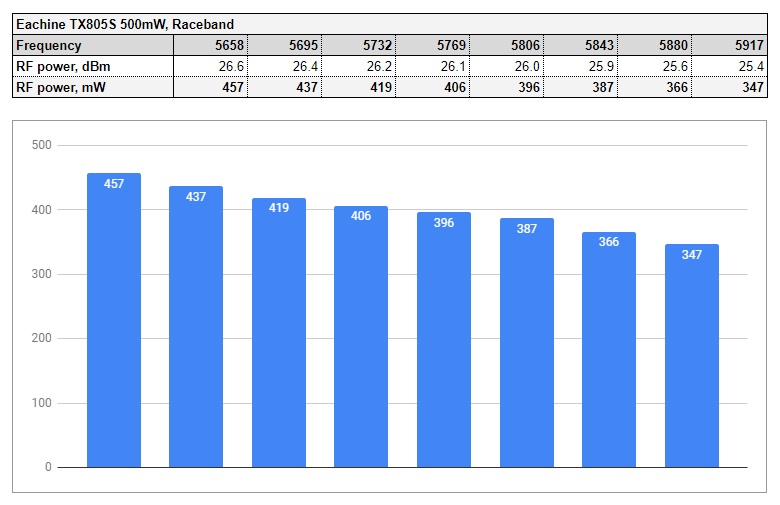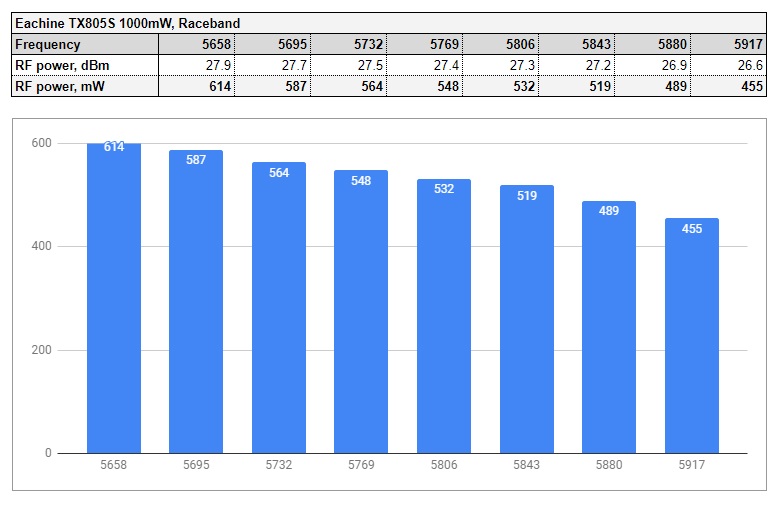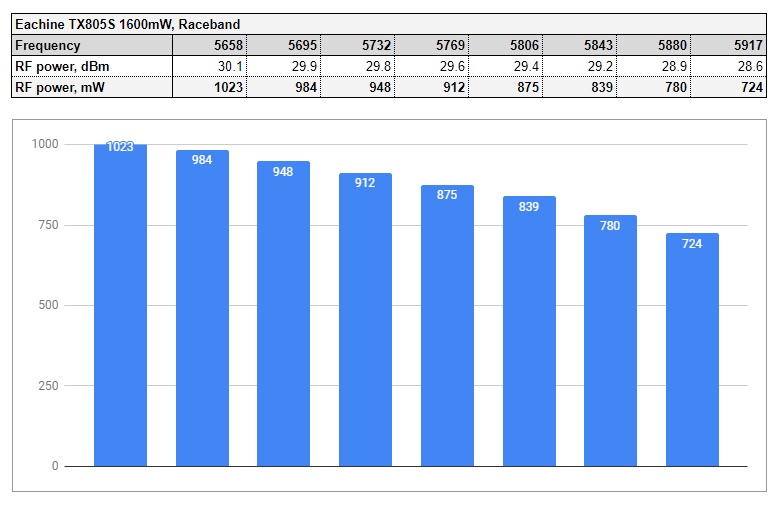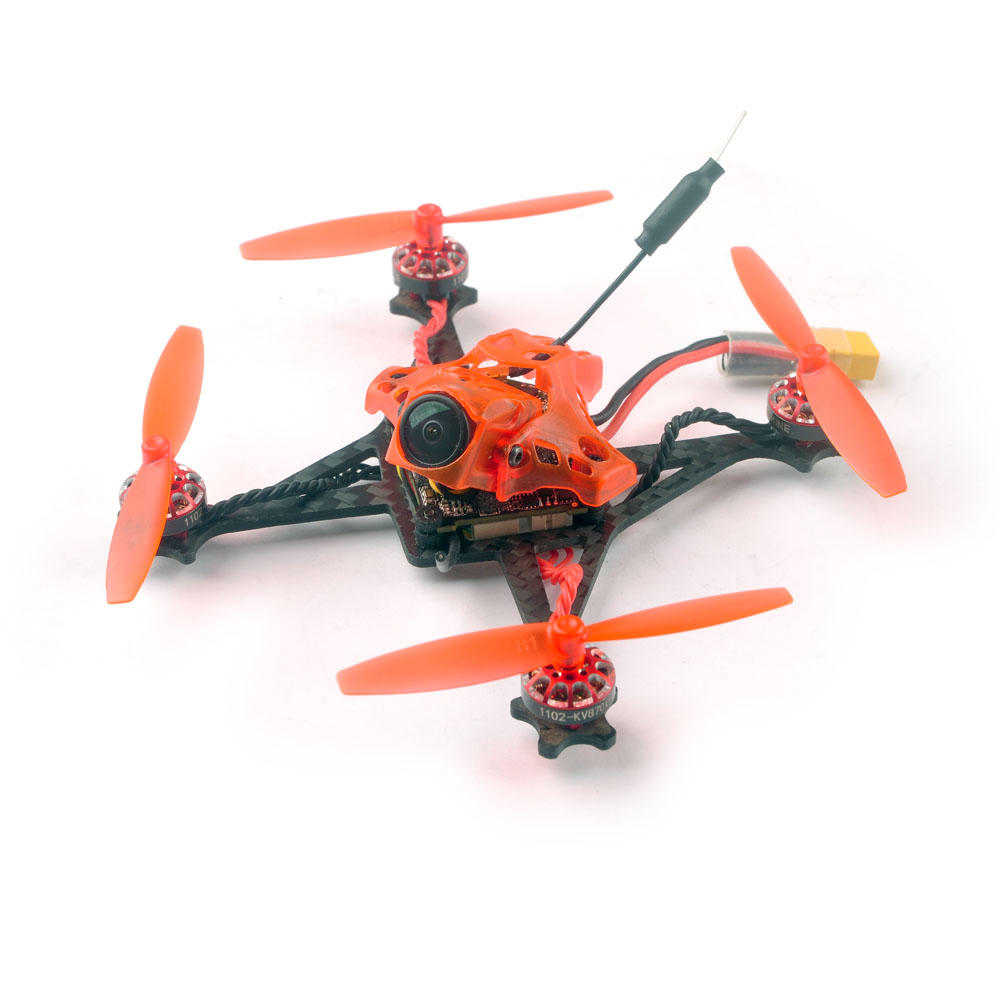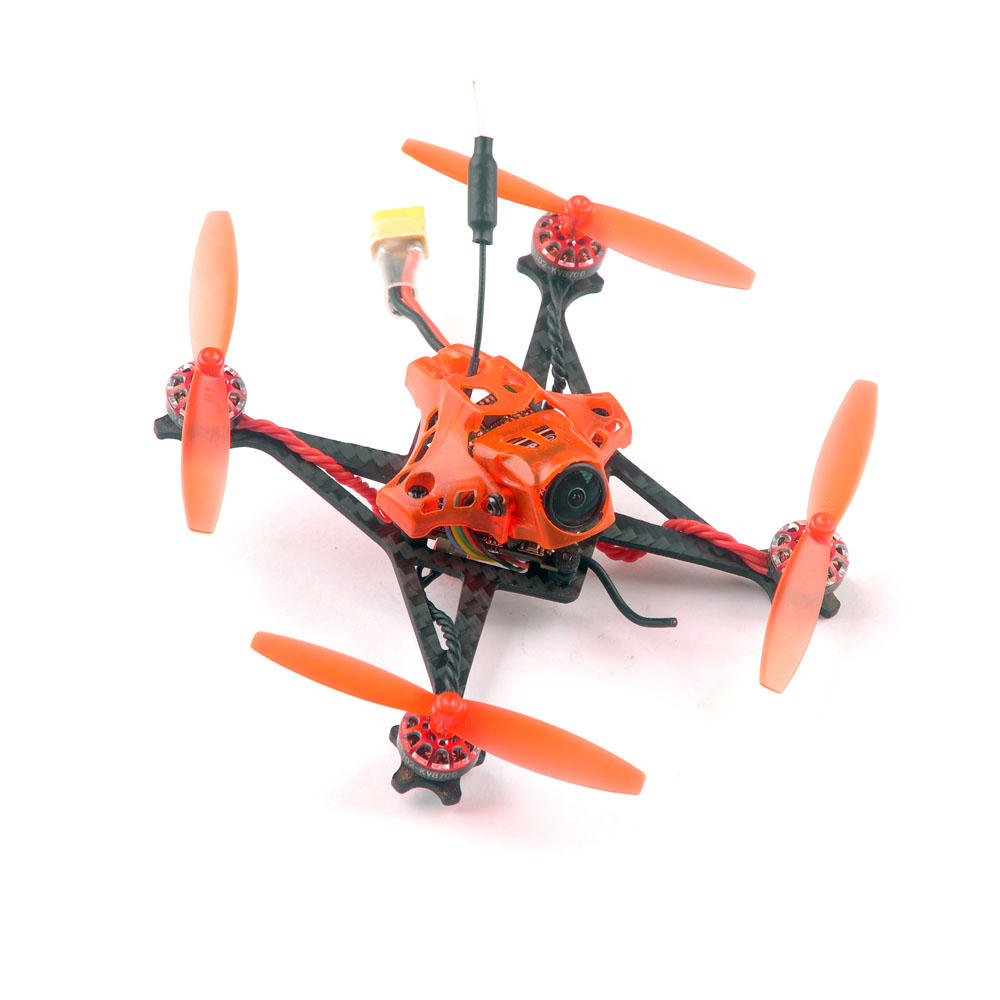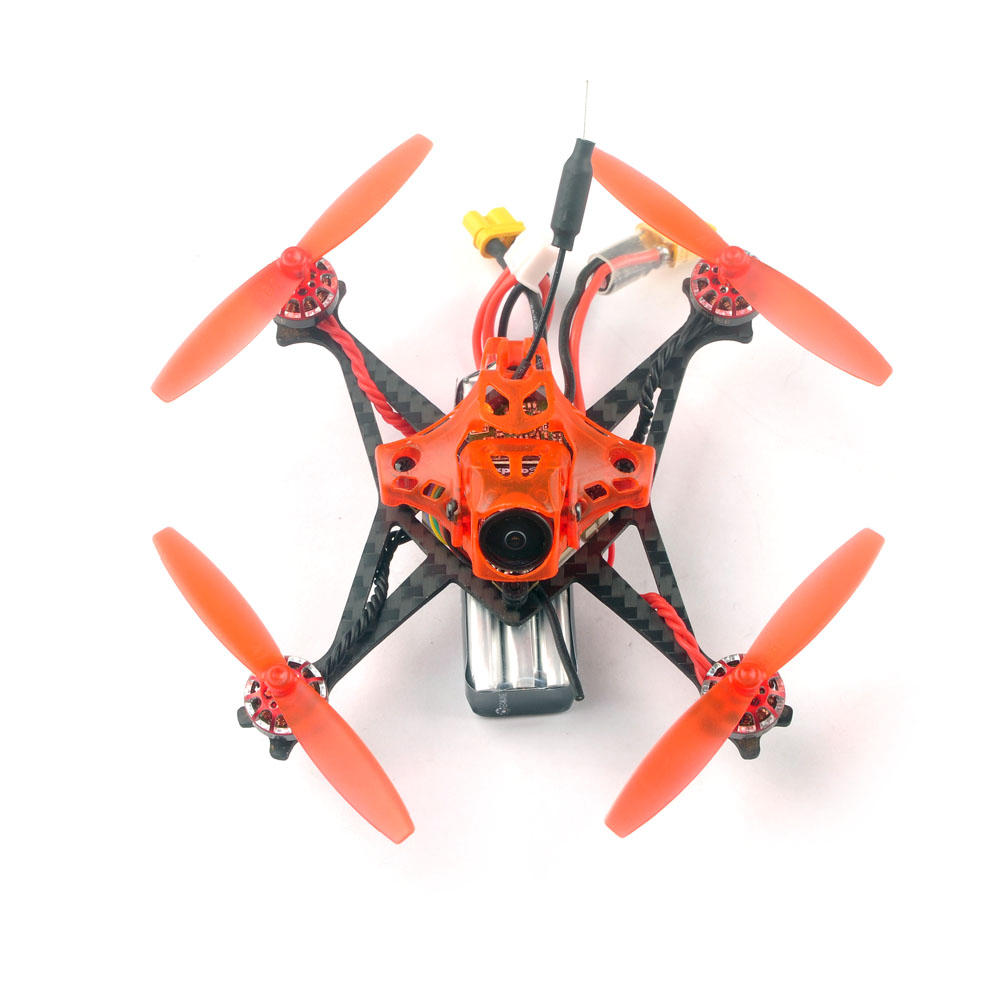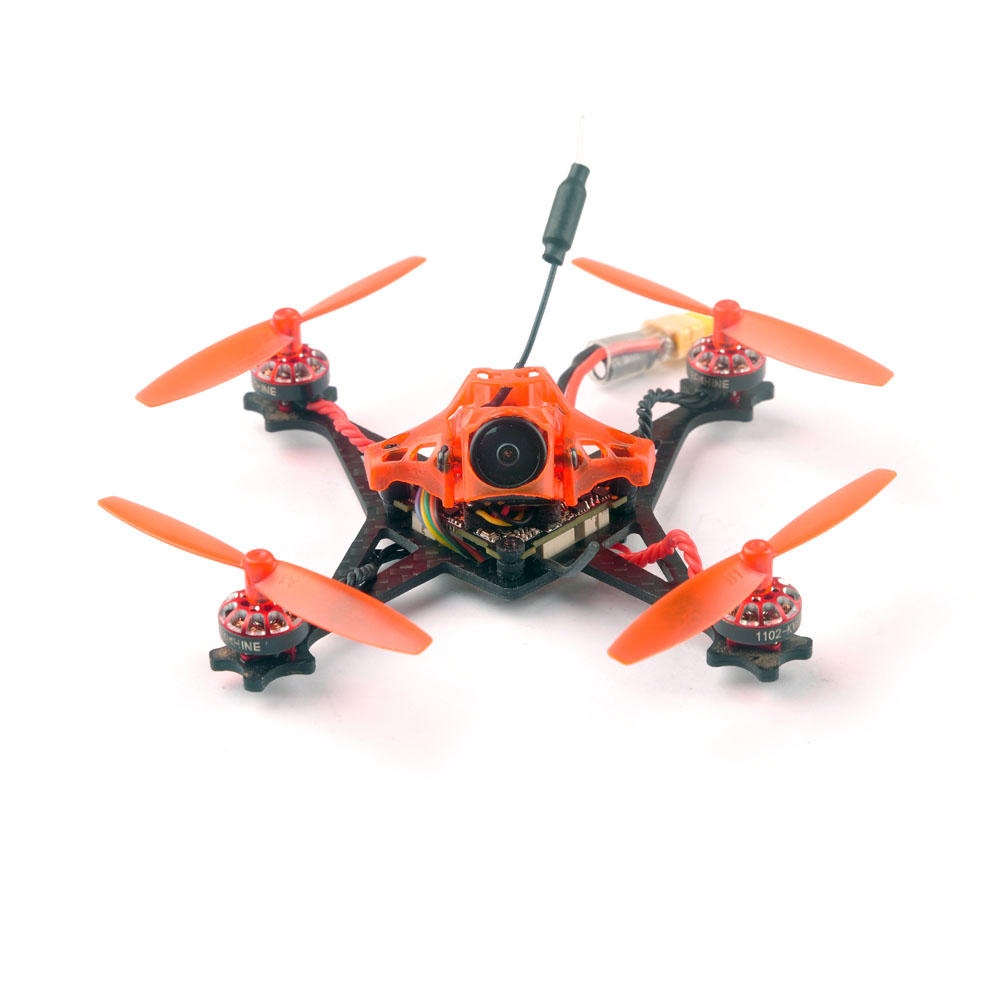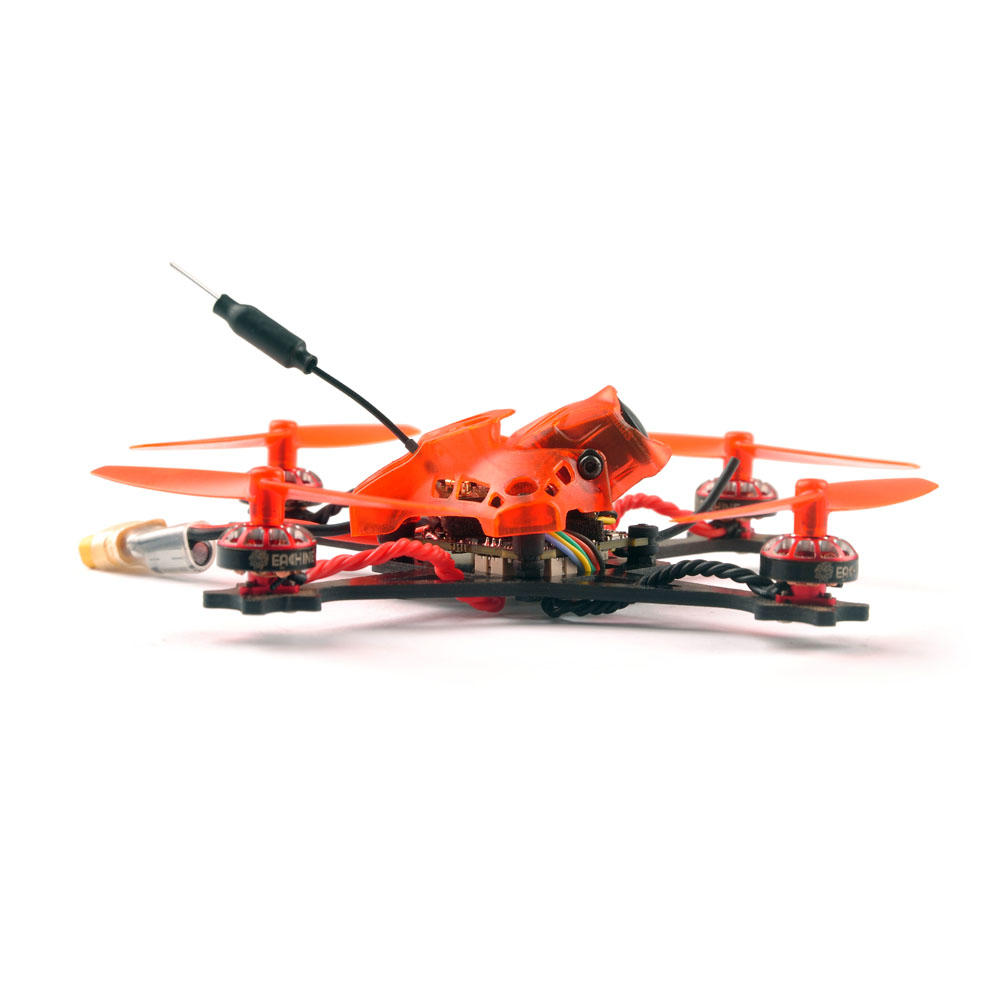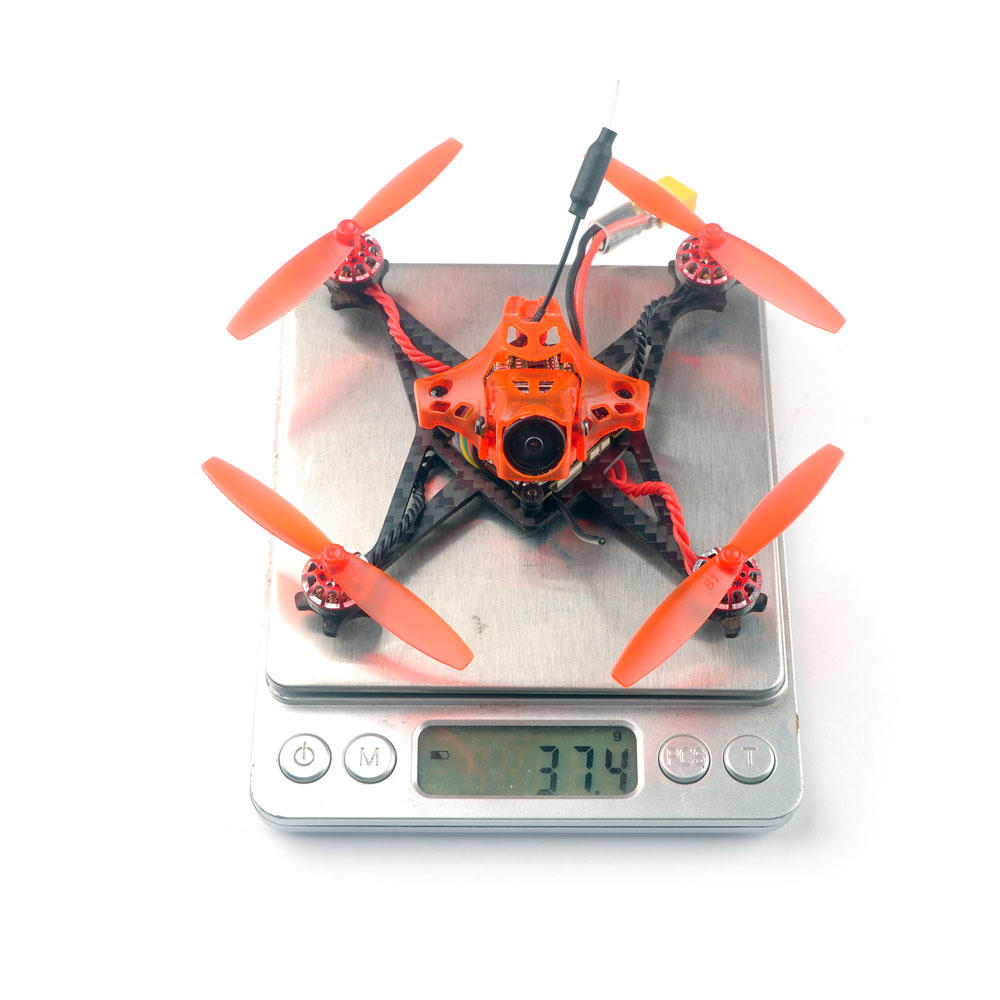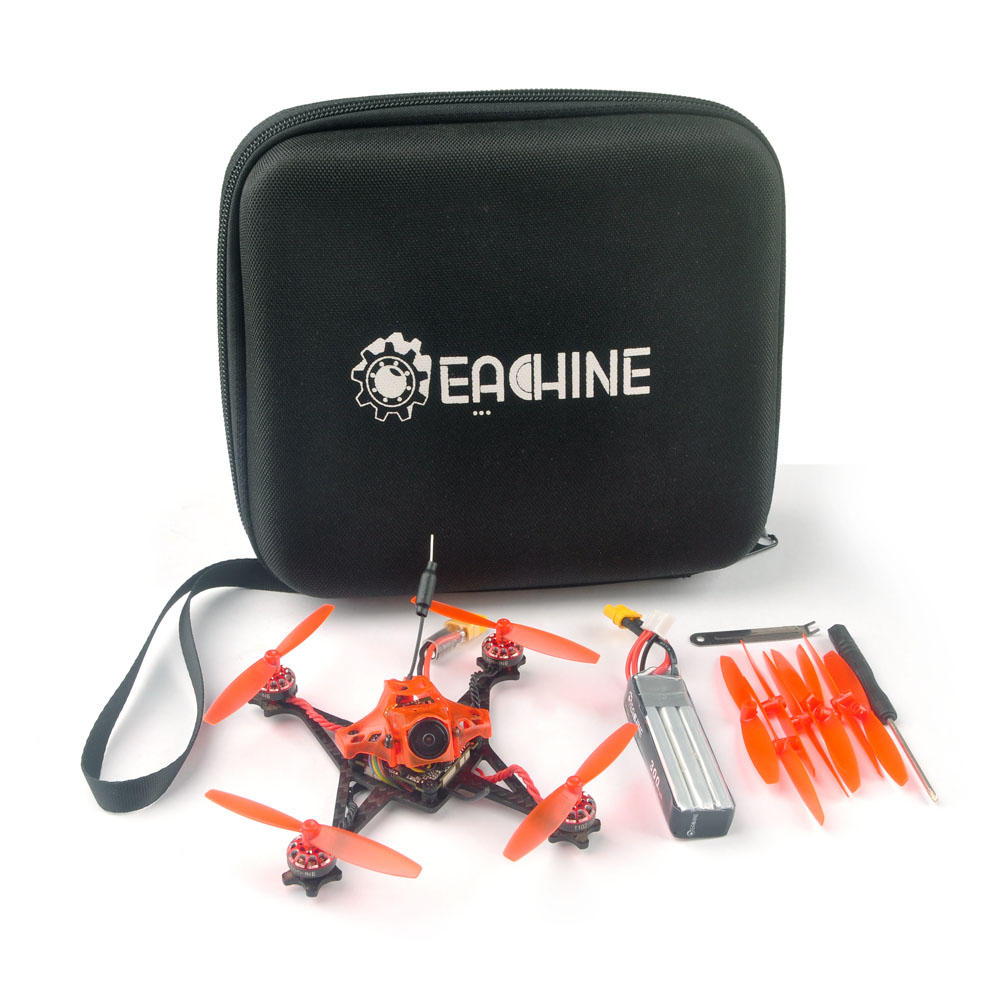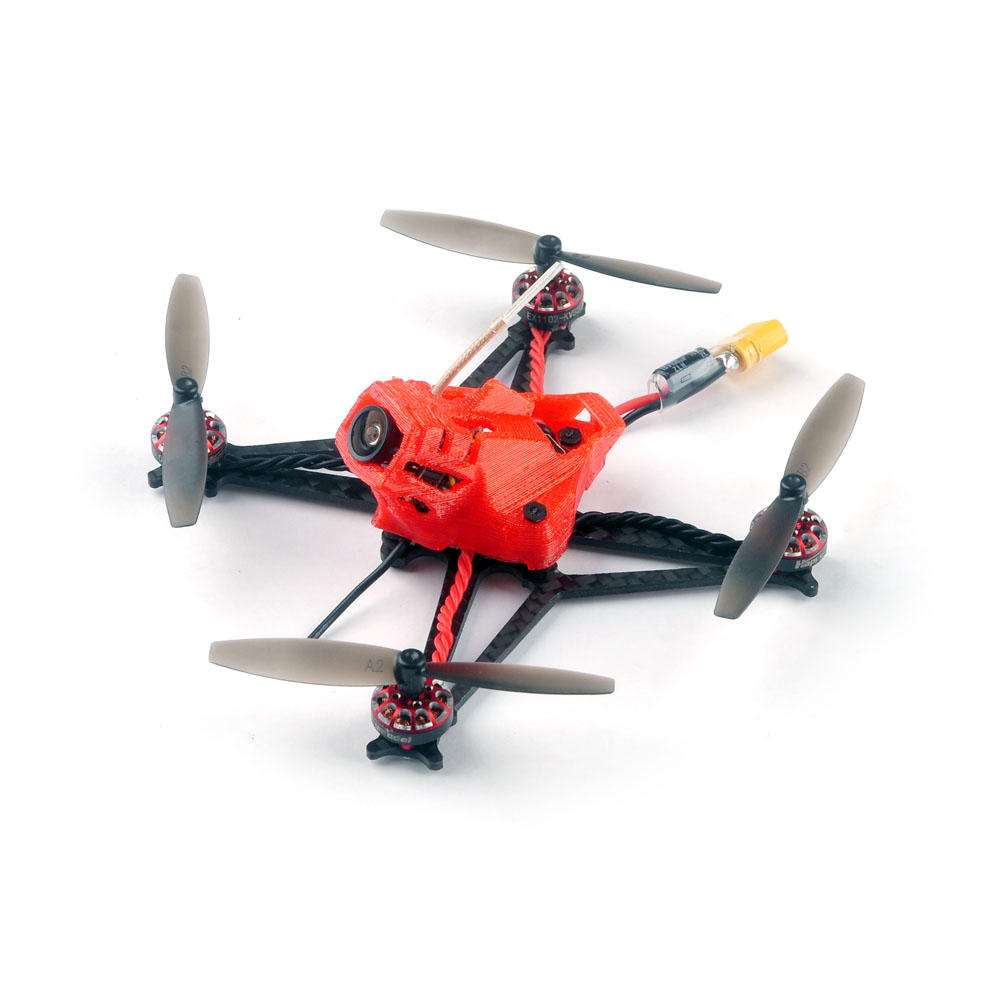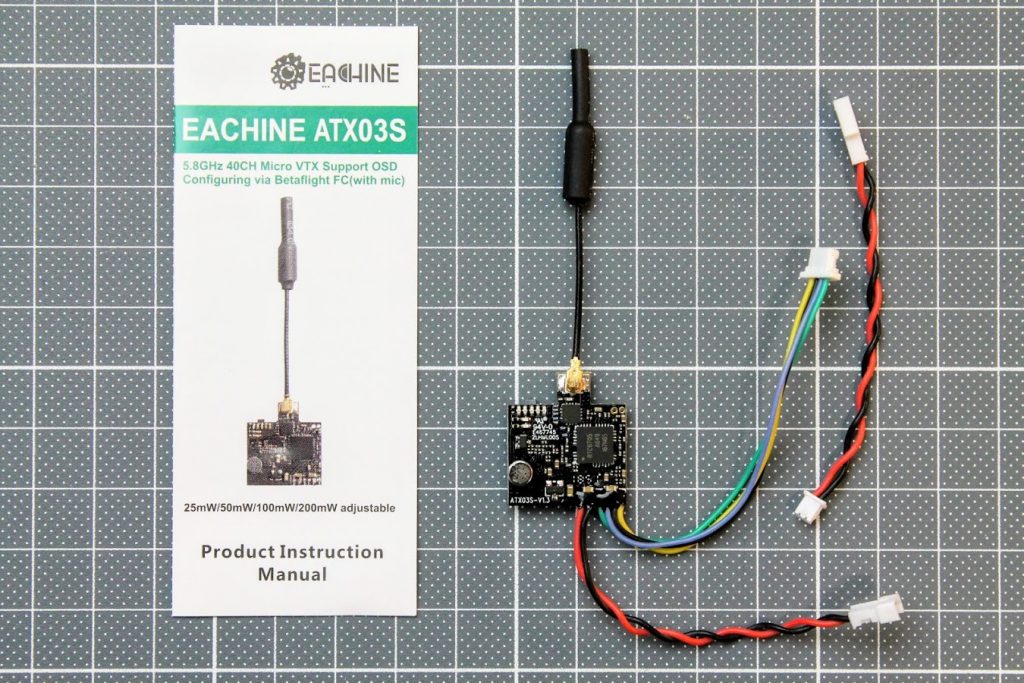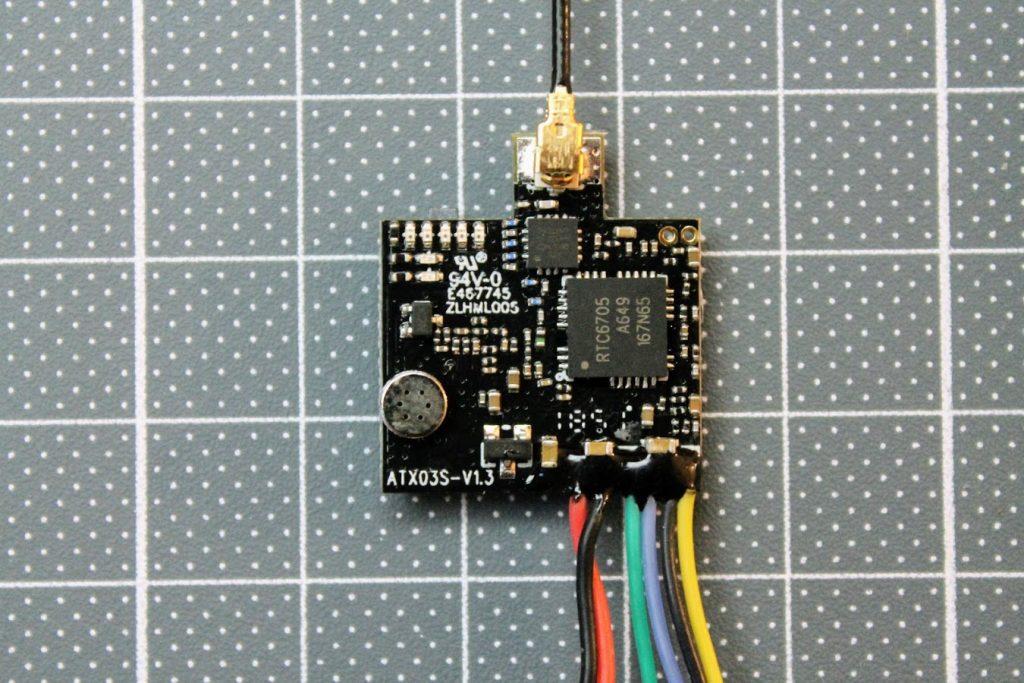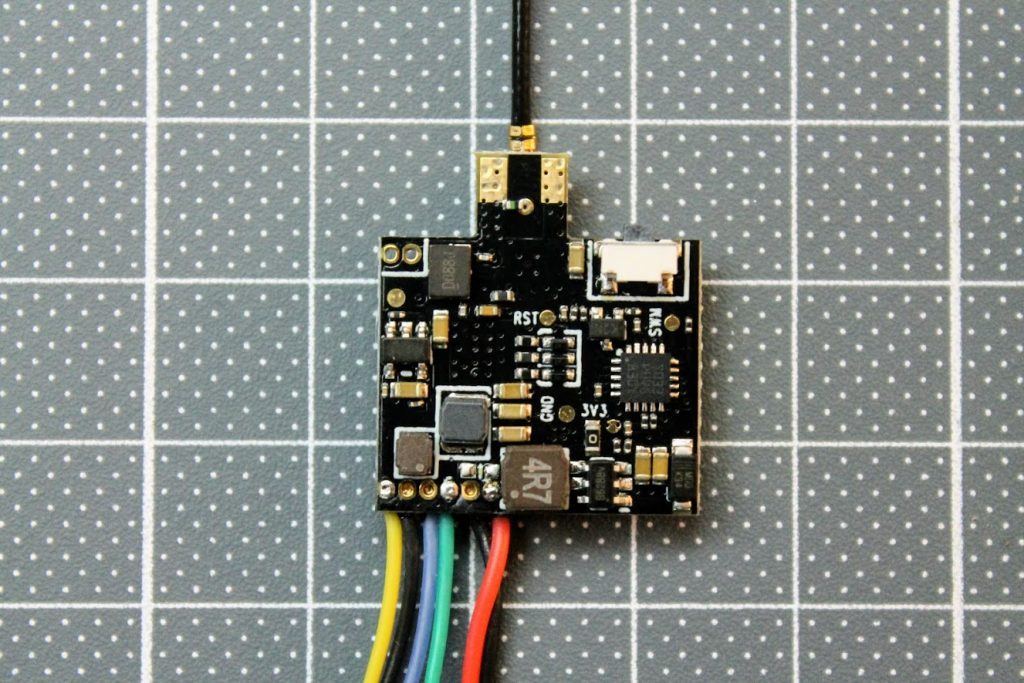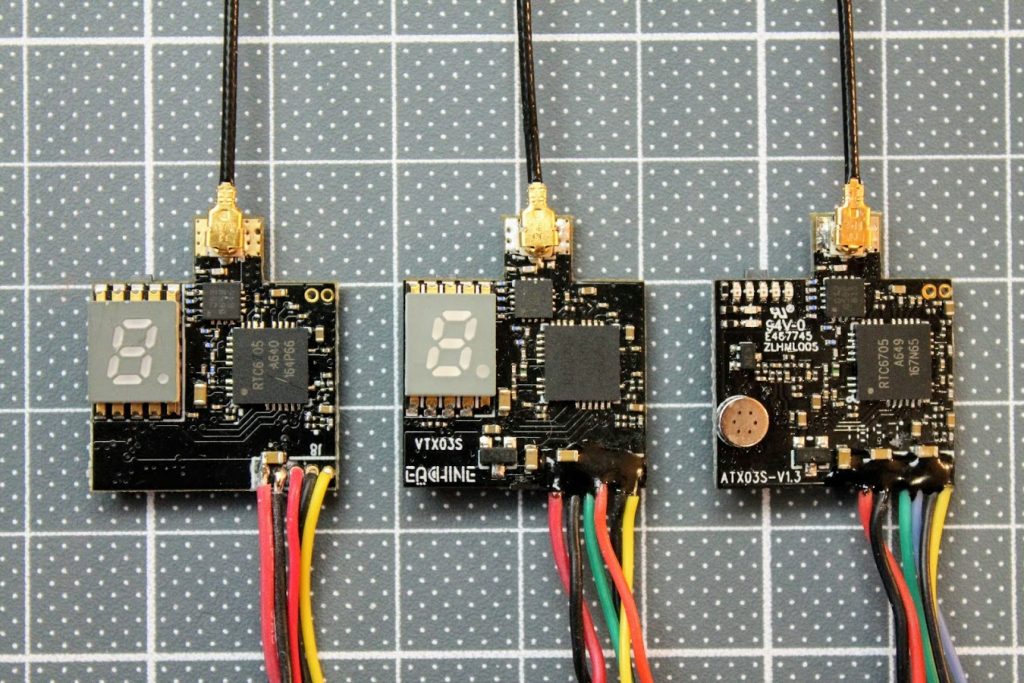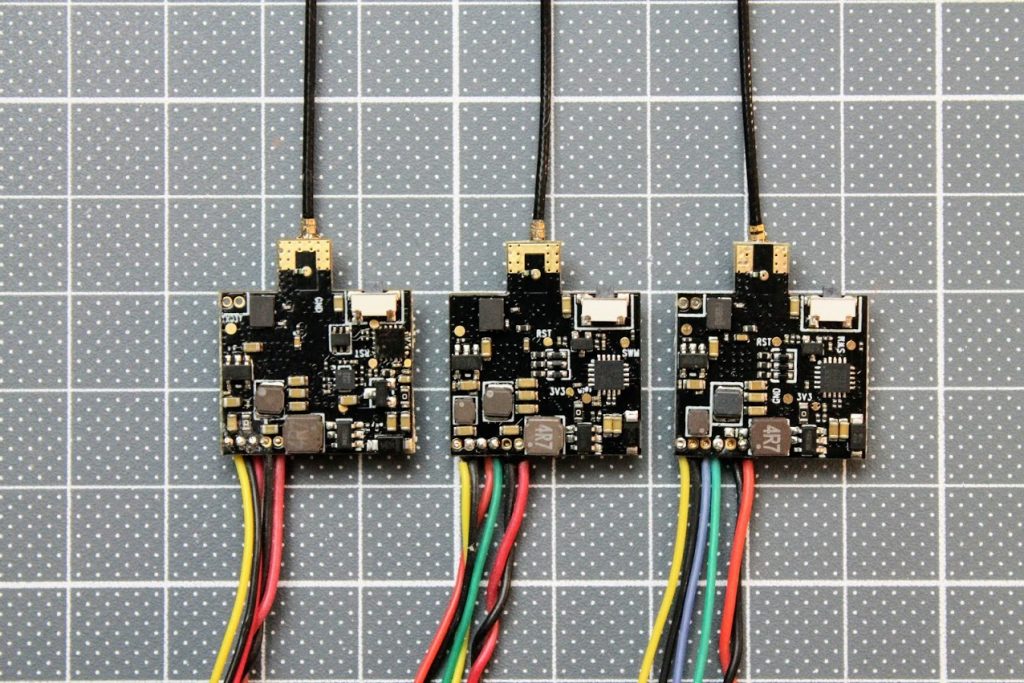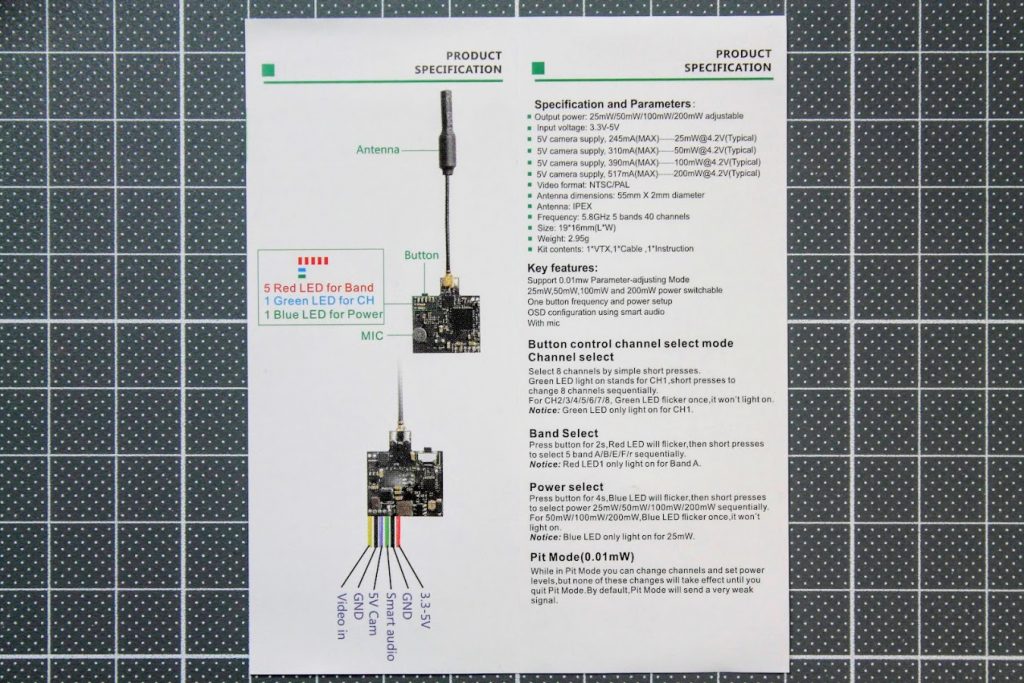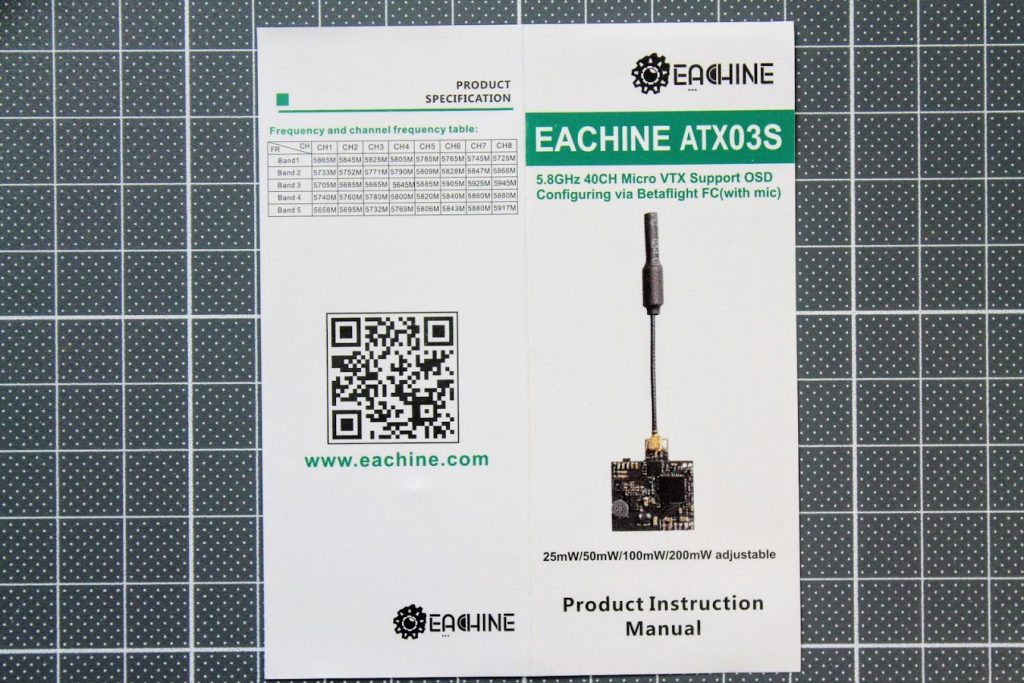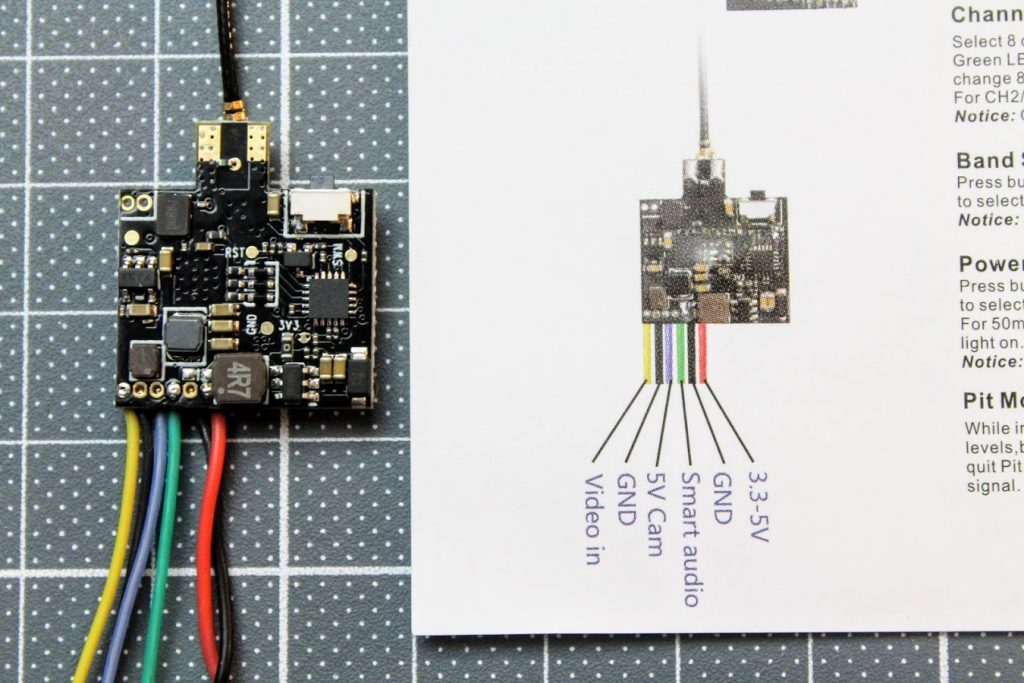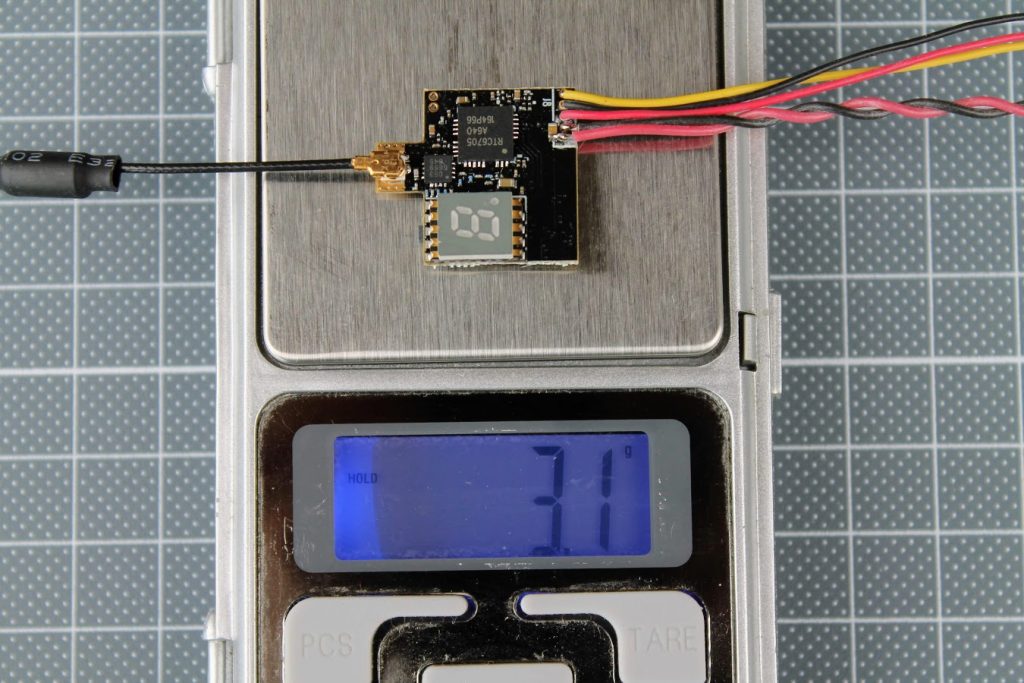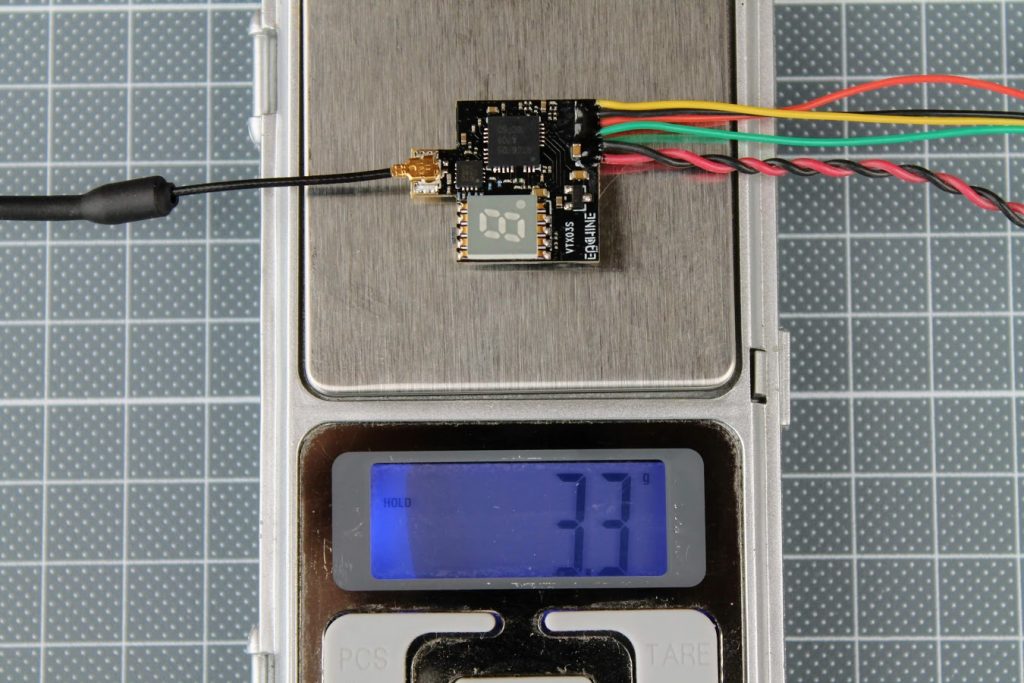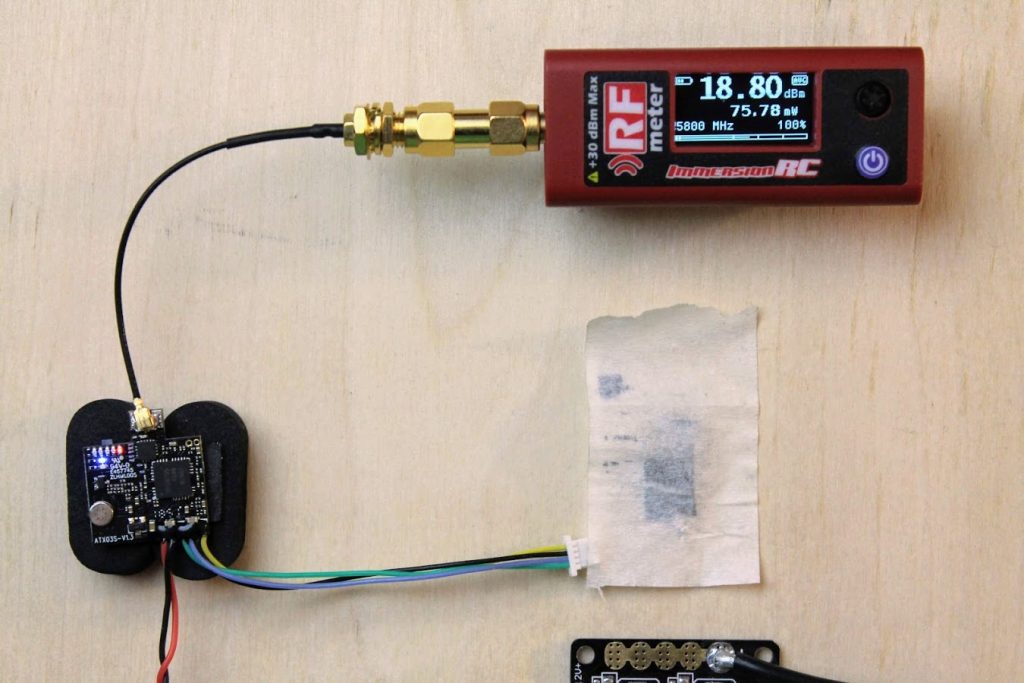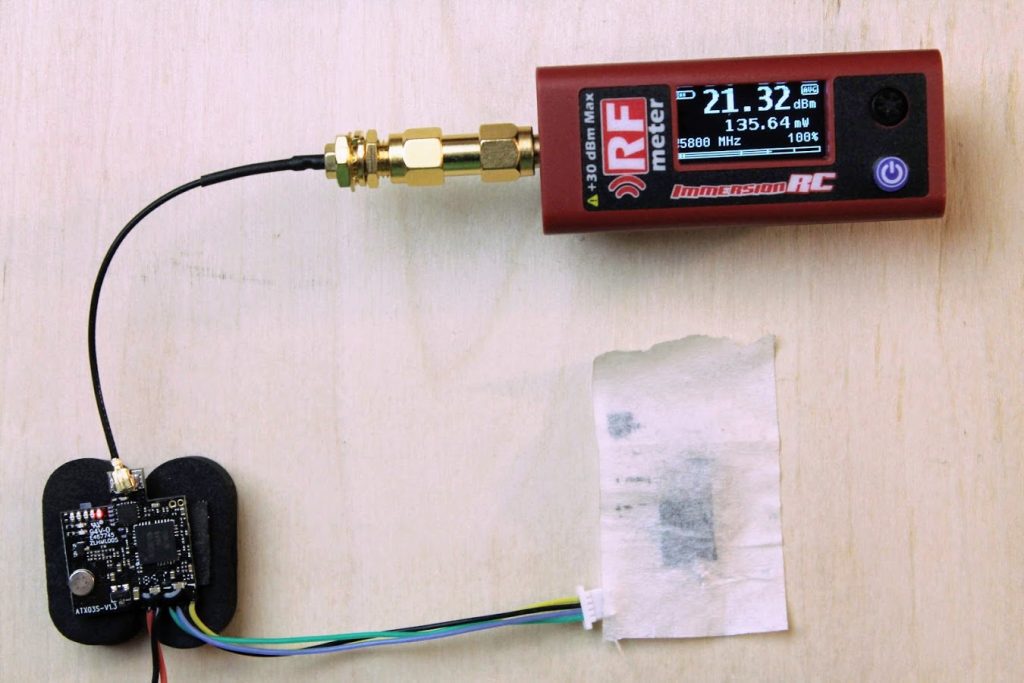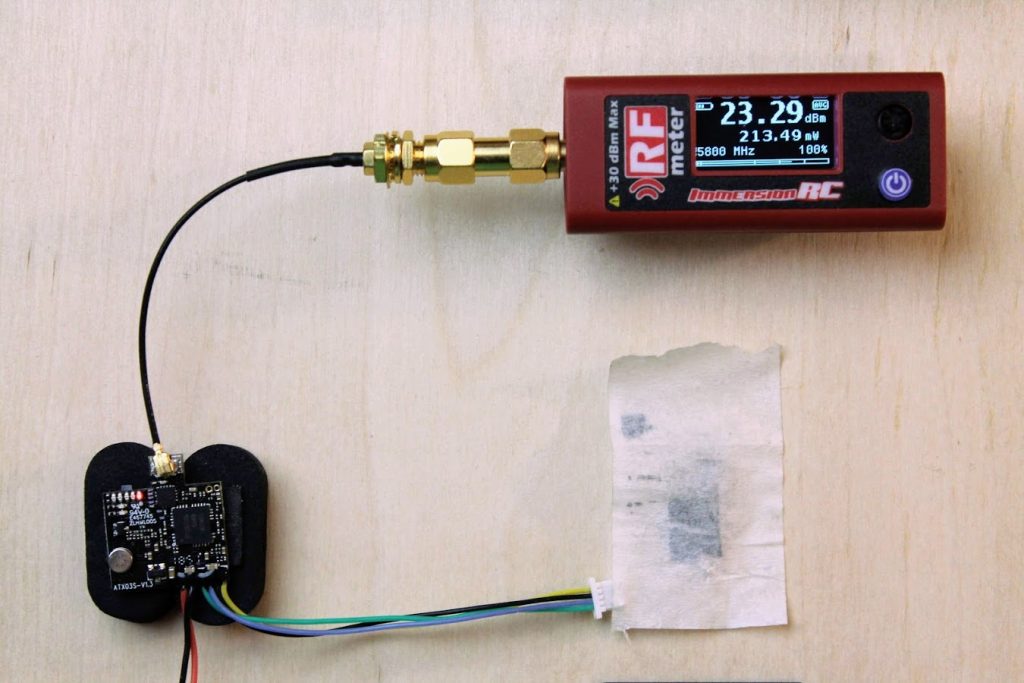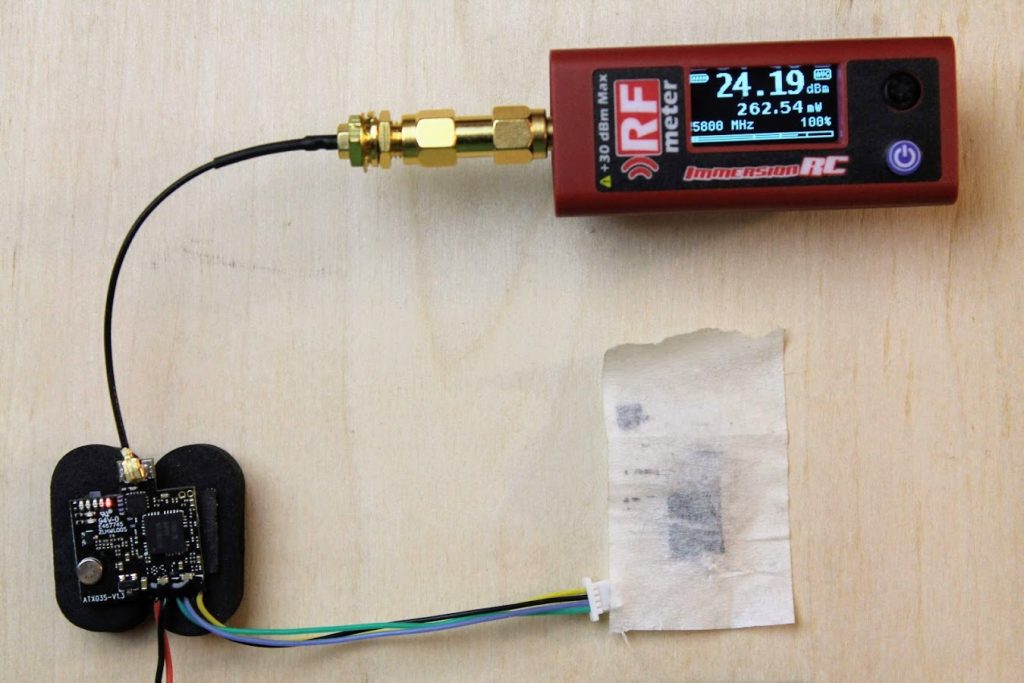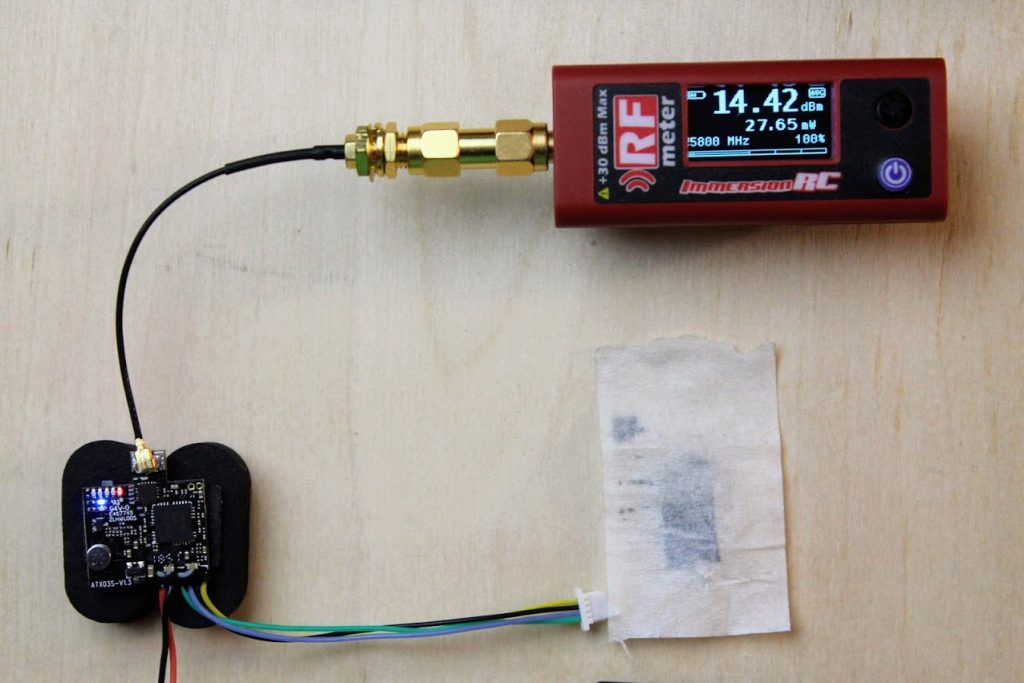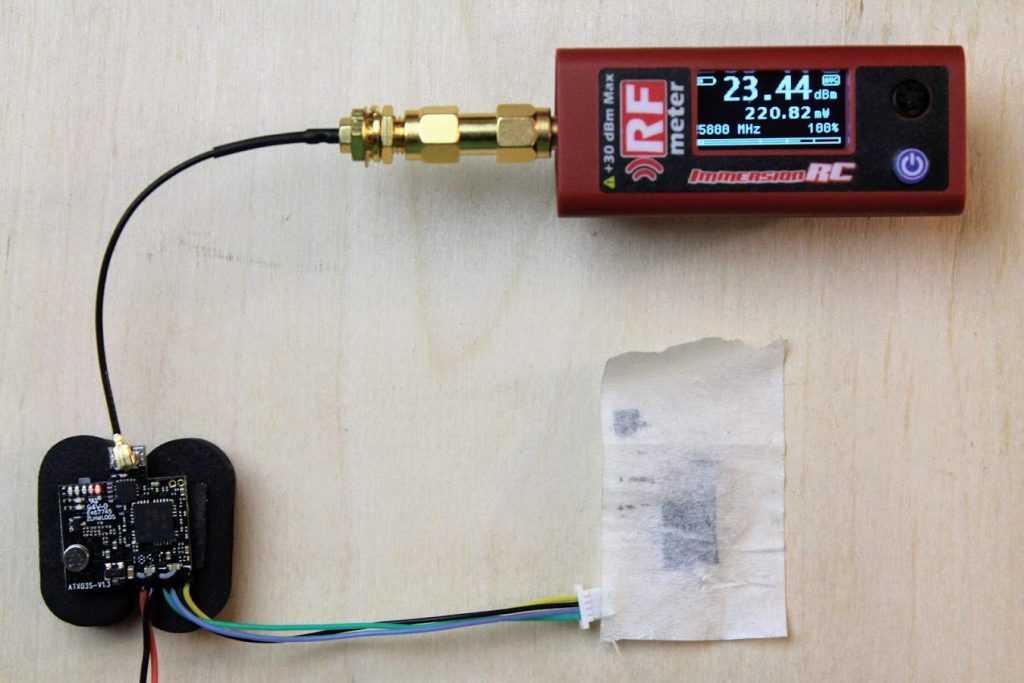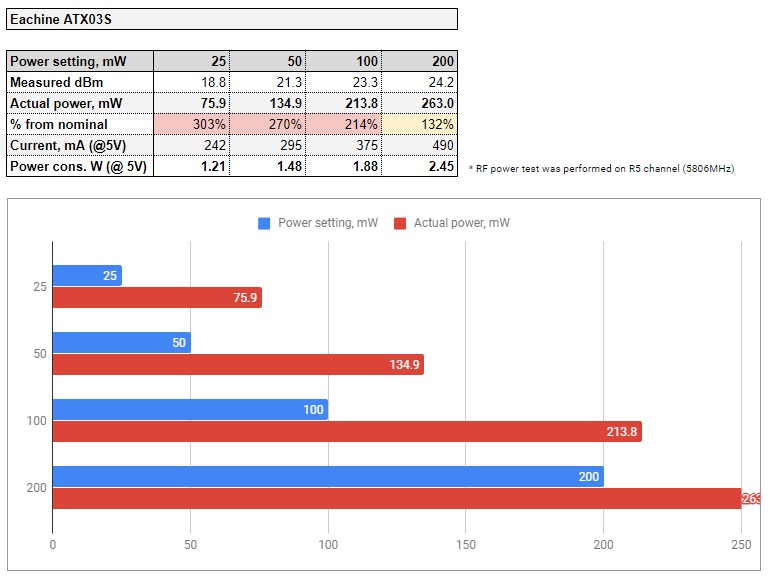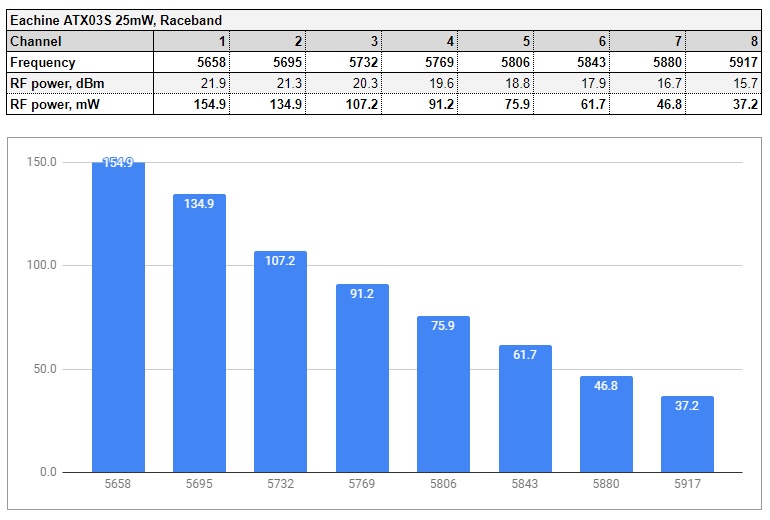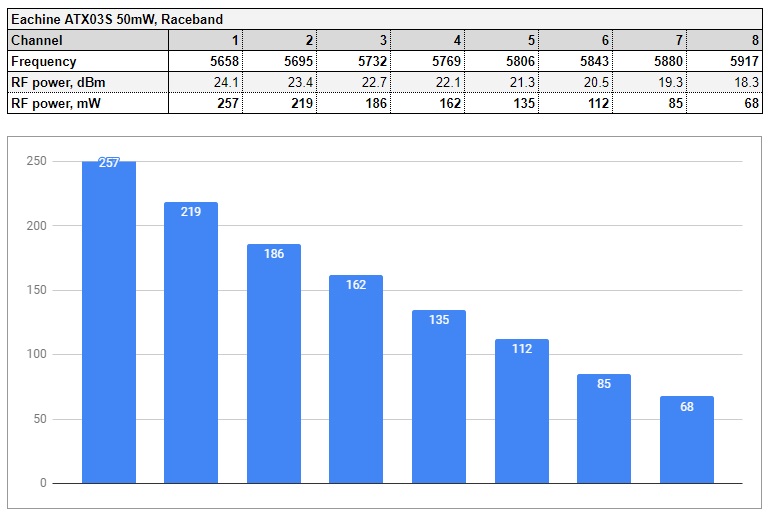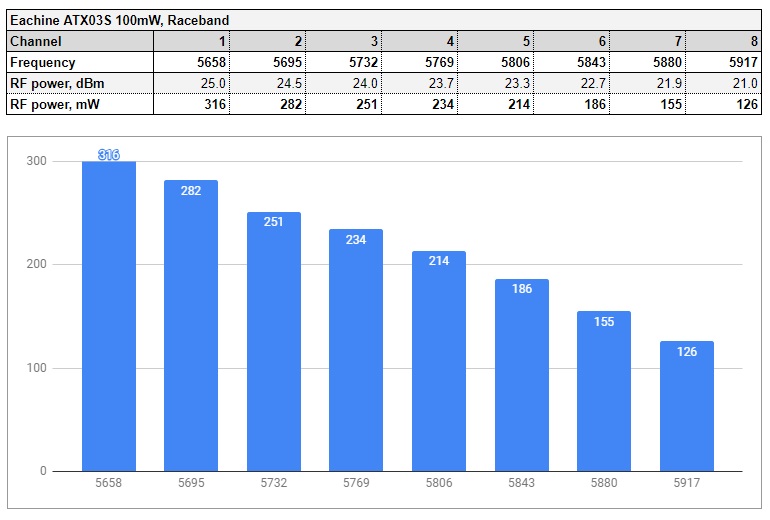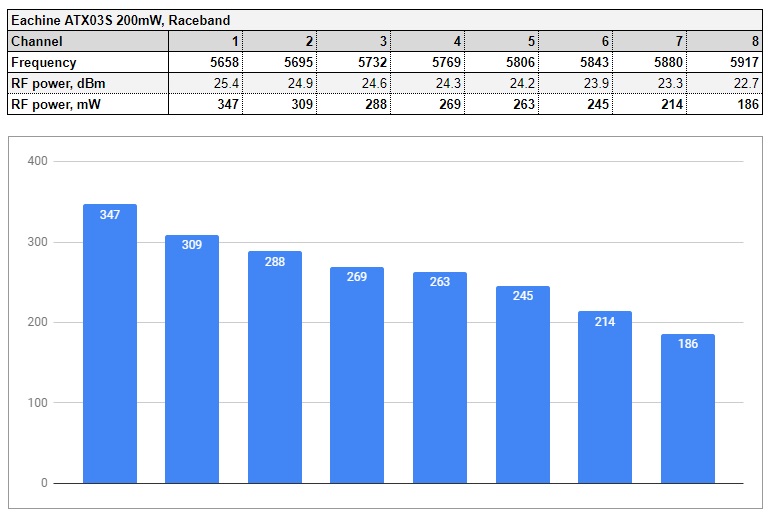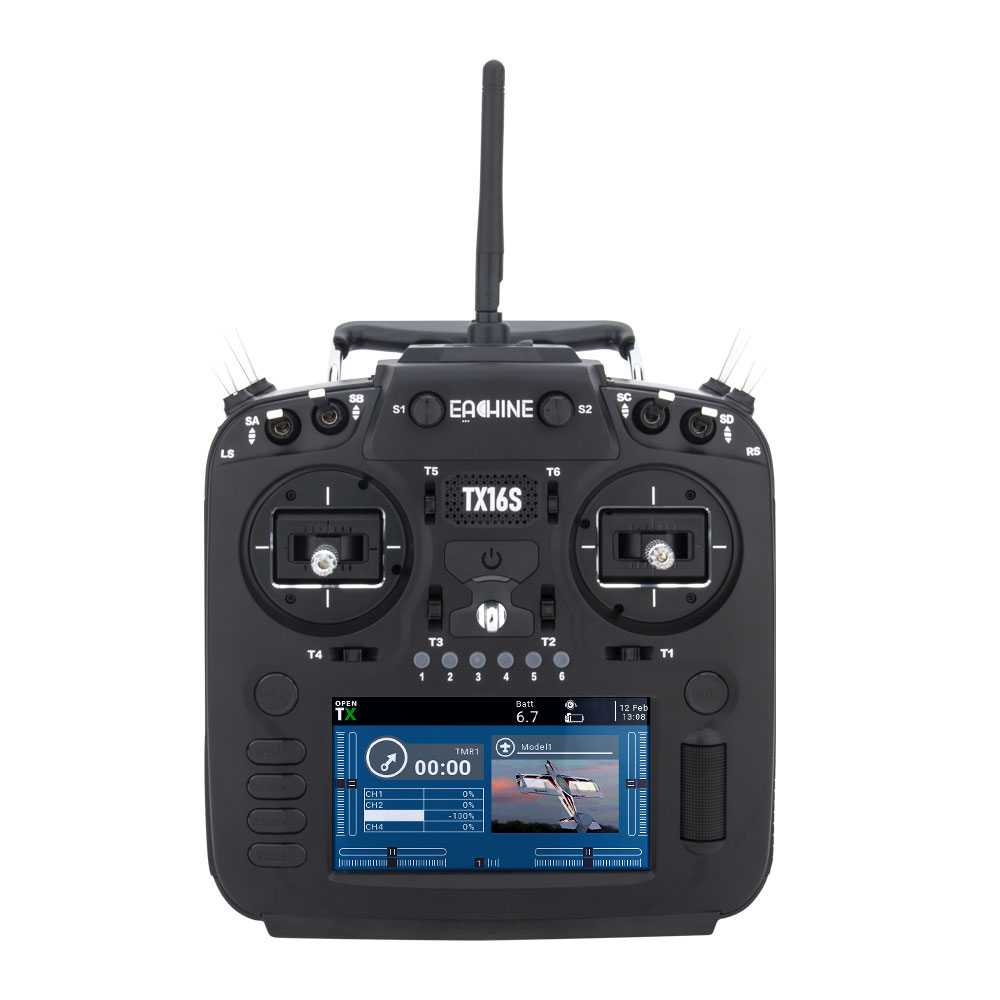
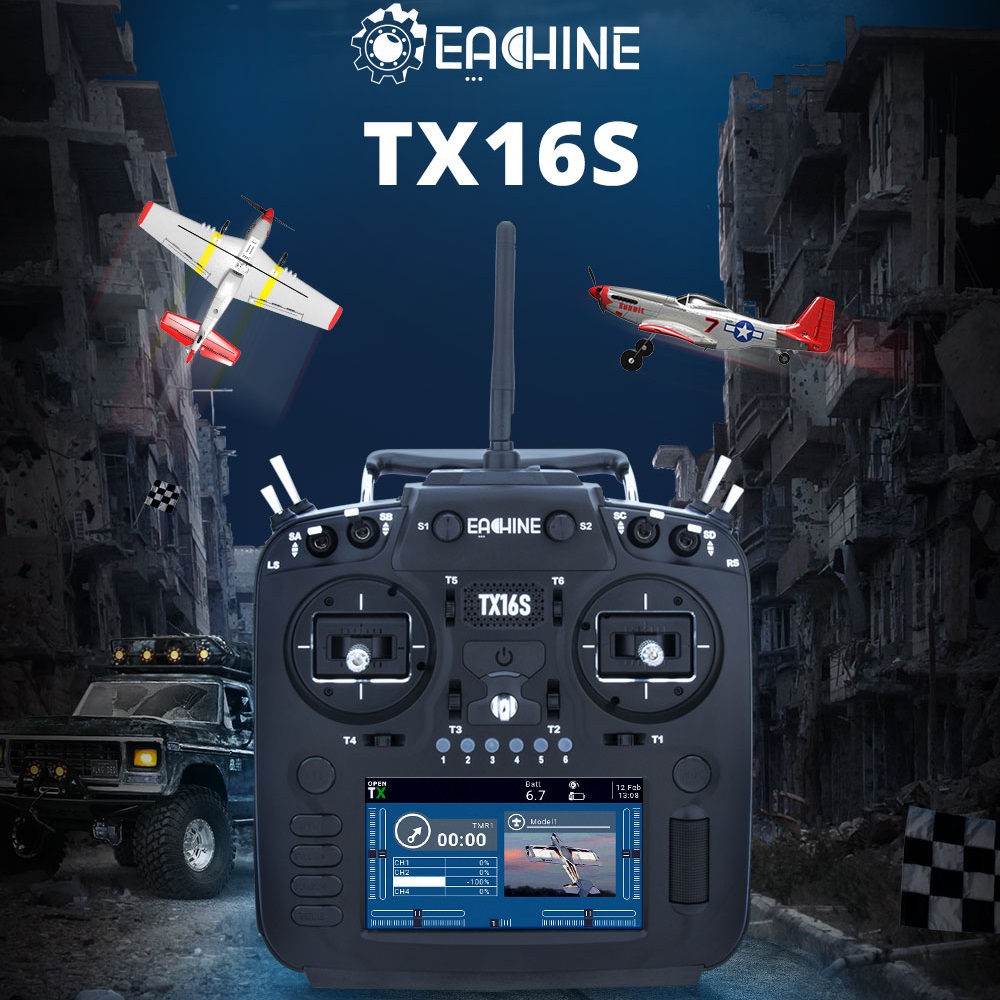
Eachine TX16S has some minor design changes. First of all you should notice that 6 “chicken feet” buttons are moved to the lower part of the radio, right above the LCD screen, the SYS and MDL buttons are now round buttons. Other than rearrangement of the buttons I don’t see any other improvements/changes to the radio.
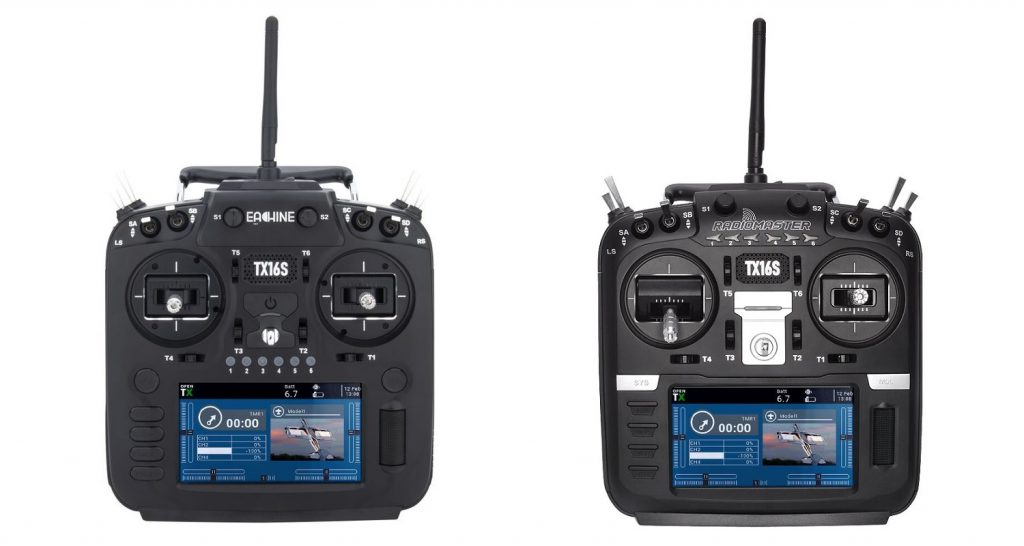
Eachine TX16S vs Radiomaster TX16S
Probably the most significant difference is HALL gimbals with with CNC Aluminum Facias and multiple adjustments:
– Stick Travel Limiter. Turn clockwise to increase travel, turn counterclockwise to decrease travel
– Vertical Axis Tensioner (Up-Down). Turn clockwise to increase stick tension, turn counterclockwise to decrease stick tension
– Horizontal Axis Tensioner (Left-Right). Turn clockwise to increase stick tension, turn counterclockwise to decrease stick tension
– Gimbal Mode Setting. Turn clockwise to disable self-centering (Throttle), turn counterclockwise to enable self-centering (Elevtor)
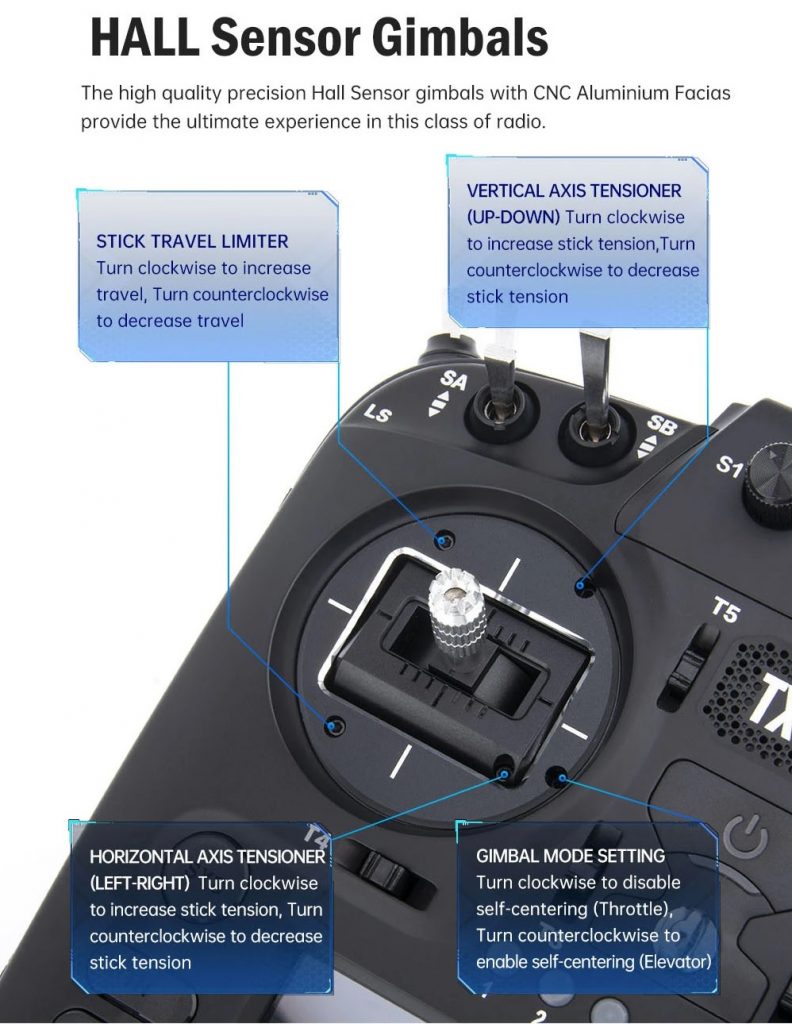
The Eachine TX16S uses the same OpenTX firmware target (Radiomaster TX16S).
Eachine EV300O goggles have two receiver bays on the right and on the left side. Goggles comes with one diversity receiver module installed.
Eachine EV300O goggles have new RapidMix diversity receiver that functions similar to RapidFire by stiching (mixing) two video signals to make better overall received video FPV feed.
There are two roller wheels for menu navigation and DVR functions. These controls can be swapped between right and left in the goggles menu. Also there is the power button on the right side of the goggles.
Goggles have adjustable IPD (58~71mm) and adjustable focus (0 – 6)
All the IO ports are on the bottom side of the goggles. Here you can find USB-C type connector for firmware updates, DC In, Head Tracker output, HDMI input, AV input and Headphones output ports. Goggles accept up to 128Gb micro SD cards. DC input has wide range (7.4-25.2 Volts) and can be powered from 2S to 6S battery.
The goggle settings and DVR menu looks familiar to the Skyzone SKY03 users.
It seems that Eachine has partnered with the Skyzone and released these goggles. The design resembles the Skyzone SKY03O, as the specifications and the internal goggles menu are similar.
Eachine EV300O goggles user manual: http://myosuploads3.banggood.com/products/20200706/20200706043923EV300OUSERMANUALENV1.1.pdf
Available @
Banggood: https://www.banggood.com/Eachine-EV300O-1024×768-5_8Ghz-48CH-OLED-HD-3D-FPV-Goggles-…-1705594.html
UZ65 will have flight controller with 4in1 5A ESC and integrated SPI receiver (FrSky D8/D16 or Flysky). FC is most probably the Eachine Novice flight controller. Eachine Novice FC is rated for 1–2s, but the Happymodel SE0802 19000Kv motors can run on 1S only. Eachine will sell a new lower KV motor as the spare part for UZ65 to upgrade for 2S battery. Probably any Happymodel 0802 size motor with 1mm shaft should fit.
Eachine UZ65 has the same RunCam Nano 3 FPV camera as Mobula6. VTX is capable to output from 25mW to 100mW.
The UZ65 weights only 21 grams. Its pretty light for the brushless whoop that is in between of 31mm and 40mm prop size class.
Eachine UZ65 comparison with the Happymodel Mobula6 – the same frame size, but bigger props:
Available @ Banggood: https://www.banggood.com/21g-Eachine-UZ65-65mm-1S-Whoop-FPV-Racing-Drone-BNF-Runcam-Nano3-35mm-Propeller-5_8G-25100mW-VTX-p-1640609.html
Specifications:
Item Name: Eachine UZ65 65mm FPV Racing Drone
Wheelbase: 65mm
Size: 80mm*80mm*40mm
Weight(without battery): 21g
Weight(with battery): 29g
On-Board receiver options: Frsky (ACCST D8/D16), Flysky (AFHDS2A)
External receiver support
Motor
Mode: Happymodel SE0802 19000KV
Configu-ration: 9N12P
Stator Diamter: 8mm
Stator Length: 2mm
Shaft Diameter: Φ1mm
Motor Dimension(Dia.*Len): Φ10.5mm*14.9mm
Weight(g): 1.9g
No.of Cells(Lipo): 1S only
Propellers
HQPROP 35mm-3blades
Center Thickness: 5mm
Prop Diameter: 35mm
Center Hole Inner diameter: 1.0mm
Flight controller
Frsky SPI RX version Firmware target: CrazybeeF4FR
Flysky SPI RX version Firmware target: CrazybeeF4FS
DSM2/DSMX External RX version Firmware target:CrazybeeF4DX
TBS Crossfire External RX version Firmware target: CrazybeeF4DX
MCU:STM32F411CEU6 (100MHZ, 512K FLASH)
Sensor: MPU-6000 (SPI connection)
Board size: 28.5 * 28.5MM
Power supply: 1-2S battery input (DC 2.9V-8.7V)
Built-in 5A(each) Blheli_S 4in1 ESC Dshot600 ready
Built-in Betaflight OSD (SPI Control)
Built-in SPI Frsky/Flysky receiver
Built-in 5V 1A BEC
Built-in voltage detection
FrSky ACCST 2.x.x
FrSky has released and major update for D16 (ACCST) protocol enabled radios and receivers just before the CNY vacations. It has one serious issue fixe with some random channel output error (uncontrolled servo movements). It also added some additional RF link encryption that makes this new D16 (ACCST) protocol incompatible with all the older versions. This means that the new D16 V2.0 protocol will not work with any other NON FrsKy receivers! Have this in mind before updating your radio transmitter.
By the way – Multiprotocol module firmware developers are already working on adding support for this new FrSky ACCST D16 V2.0 protocol into Mutiprotocol module.
Note: don’t hurry to update your radios and receivers, this firmware was released in a hurry and needs more testing!
Info from the FrSky:
ACCST D16 2.X.X – This upgrade is designed to enhance the reliability and performance of radio transmission in all external conditions. It is strongly recommended that all FCC/LBT users update all their equipment to version 2.X.X. This includes all radios, RF modules and receivers.
We are grateful to you all for the constant support. Especially thank those who reported the issue, provided the information, and assisted with many tests.
Notes:
1. Fixed the channel output error (uncontrolled servo movements) under certain conditions.
2. Strengthened correction and verification capability.
* Please update the firmware of all your radios, RF modules and receivers accordingly.
Eachine VisWhoop
Eachine announced of their first digital FPV whoop called Viswhoop (VistaWhoop). It is 130mm brushless whoop with 2.5 inch propellers and Caddx Vista digital FPV system.
Available @ Banggood: https://www.banggood.com/Eachine-Viswhoop-2_5-Inch-130mm-…-1628007.html
T-Motor Velox
T-Motor released new Velox motors from their F.P.V. line. Motor price starts from $12.99.
Options: VELOX V2207 – 1750KV/1950KV, VELOX V2306 2400KV
VELOX V2207.5 1750KV/1950KV, VELOX V2208 1750KV/1950KV and VELOX V2306.5 2550KV Motors
Available @GetFPV: https://www.getfpv.com/catalogsearch/result/?cat=0&q=motor+velox
VELOX V2207.5, V2208 and V2306.5 are shiny as diamonds and diamonds are the girl’s best friend? 
Diatone TinyCinewhoop
Diatone teased us with a picture of their upcomming small whoop. Probably equipped with Mamba F411 whoop FC and 1103 Mamba motors.
HummingBird F4 1S Brushless BetaFlight Flight Controller
HummingBird F4 1S whoop brushless flight controller with F4 MCU and 12A ESC. It weights only 3.77 grams with on board FrSky receiver and battery connector pigtail.
Available @ NewBeeDrone: https://newbeedrone.com/products/hummingbird-f4-1s-flight-controllerbetaflight
NewBeeDrone tiny DVR module
NewBeeDrone has new very small (tiny) and very light DVR module (weight is only 1.86g).
Available @ NewBeeDrone: https://newbeedrone.com/products/newbeedrone-dvr-module
]]>
Eachine EV300D has the power button also!
Eachine EV300D goggles aspect ratio can be switched between 4:3/16:9, but Eachine offers also more options, such as Panorama, Zoom1, Zoom2, 16:9, 4:3 and Auto aspect ratio detecting mode.
Eachine has greatly improved OSD and now it provides more information. There are 4 individual RSSI (signal strength) bar indicators for the each of the goggles antenna/receiver. There are defogging fan, SD card and recording indicators on the screen. Of course there is battery status indicator on the screen also.
Eachine EV300D goggles have two individual focus adjustment dials for fine tuning according to each person’s vision.
Goggles firmware can be easily upgraded by using the SD card or by copying the firmware to U disk via the USB.
Eachine EV200D goggles has power button and can be powered from the USB source or by Li-on 18650 batteries with the supplied battery case with charging circuit.
Specifications:
Resolution : 1280*960
FOV : 42° diagonal
IPD : 56-72mm
Aspect ratio : 16:9/4:3
Features:
FOV 42°
Built-in DVR
USB power supply support
Resolution 1280*960
Lion 18650 battery case with integrated charger
Supported display mode: HD Port in 2D/3D; AV in 2D/3D
Optional diopter lens,compatible with Fatshark diopter lens,200/400/600 degrees selectable
With Fan, can defog the glasses for good visual experience.
Dual true diversity,supports open source RX modules
Firmware upgrates via SD card.
]]>
Ultralight quadcopters – Toothpicks, Twigs and Cinewhoops are gaining bigger popularity these days. Size and weight of the components is the crucial factor for these quads. So there is high demand of a small and lightweight VTX, of course with a decent performance and reasonable price. There are a few really good receivers out there, like TBS Unify Pro32 Nano, or Cricket Nano VTX but they are pricy. Echine has its own line of the small video transmitters with VTX03, ATX03 and ATX03S. Recently Eachine released even smaller, lighter and more powerful Nano VTX. Lets take a closer look at it and test the output power of this VTX.
Eachine Nano VTX
Specifications:
Output Power: PIT/25mW/100mW/200mW/400mW Switchable
Control Mode: BFOSD Control (RX)/Button
BAT: 5V
Video System: NTSC/PAL
Antenna: IPEX
Size: 14mm*15mm*4mm
Weight: 1.5 g
Features:
– 5.8GHz 48CH FPV transmitter
– 5V input voltage
– 25/100/200/400mW power switchable
– Support OSD configuring via Betaflight flight controller
– Supports PIT mode
– u.Fl (IPEX) antenna connector
Inside the box there is Nano VTX, simple dipole antenna and the instructions leaflet.
Closer view of the top side of the VTX.
Closer view of the back side of the VTX. This side heats up the most.
The Nano VTX is realy small! The dimenstions are only 14mm x 15mm. It fits on my pointer finger
The VTX size comparison with the ATX03S.
Leaflet provides basic info and the basic operation instructions for manual channel/band/power selection.
Interesting, that instructions manual has a warning saying “Please do not remove the heatsink“. Which has no sense as there is no heat sink attaached and probably should be read “Please do not put VTX into heatshrink“, because it heats up, especially on the maximum RF power.
Weight of the bare Nano VTX without wires is only 1.0 gram.
Weight of the Nano VTX with wires is 2.0 grams. You can shave about 0.5 gram if you will shorten the wires.
Weight of the Nano VTX with wires and antenna is 2.9 grams.
And weight of the AVTX03S for comparison.
Eachine Nano VTX pinout diagram.
Button control – channel, band and power select
Select 8 channels by simple short pressing the settings button. Short press to change 8 channels sequentially.
Green LED light will flash the numer of the corresponging channel.
Band Select
Press button for 2s, The Blue LED will flicker, then short presses to select 5 bands A/B/E/F/r sequentially.
Power select
Press button for 6s, Blue LED will flicker, then short presses to select power 25mW/100mW/200mW/400mW sequentially.
Pit Mode(0.01mW)
While in Pit Mode you can change channels and set power levels, but none of these changes will take effect until you quit Pit Mode. By default, Pit Mode will send a very weak signal. You can control the PIT feature via Taranis LUA script.
Betaflight OSD control – IRC Tramp feature
Eachine Nano VTX can be controlled by Betafligth OSD. This type of the settings control should be preferred to the button control. It is really hard to count the flashing LED’s and the setting up by button is troublesome.
To setup the IRC Trump control you need to connect green wire from the Nano VTX to any free flight controller TX pad. Then go to Ports tab in the Betaflight Configurator and select the “IRC Tramp” option in the Peripherals column.
Issue: Eachine Nano VTX not working with IRC Tramp (SmartAudio) protocol
Some users reported the NanoVTX not working with Betaflight OSD. The have set up everyting properly: control wire connected to the UART TX pad, selected the right protocol IRC Tramp (not the SmartAudio), but the Betaflight cannot control the VTX
It turns out that this is quite common issue with Eachine Nano VTX but fortunaltely only with some of them. More info about it can be found on the Betaflight Github: https://github.com/betaflight/betaflight/pull/9263. Unfortunately look like there will be no fix in the Betaflight software for this issue, but you can set up the soft serial on any other unused output pin and connect the VTX control line to it.
Power output measurements
I’ve connected the Eachine Nano VTX to the ImmersionRC RF power meter V2 via short u.Fl to SMA pigtail. VTX was cooled with fan while taking the measurements.
First test: 25mW output setting. In the reality it is outputting almost 29mW (14.7dBm). Pretty close.
Next step 100mW – outputs 126 mW (21.00Bm).
At 200mW setting it outputs 208 mW (23.19 dBm). Again very close!
And at max setting of 400mW it outputs 317 mW (25.01 Bm).
Tested the 25mw setting without cooling and it drops from 29 mW down to 16 mW (11.99 dBm) after a few minutes.
At the 100mw setting without cooling drops from 126 mW down to 72 mW (18.56 dBm) after a few minutes.
At the 200mw setting without cooling drops from 208mW down to 122mW (20.86 dBm) after a few minutes.
Also at the max 400mw setting without cooling, the power output drops from 317mW down to 178mW (22.50 dBm) after a few minutes.
The power output test results were surprisingly good. Actual output power is pretty close to the nominal values at all power levels. Except the max power setting 400mW – it outputs 319 mW on CH5, but almost 500mW on the CH1 of the Raceband.
Below are the RF power outputs and electrical current consumptions for all power levels. Measured at Raceband, CH5.
Power output vs frequency for 25mW power level on Raceband.
Power output vs frequency for 100mW power level on Raceband.
Power output vs frequency for 200mW power level on Raceband.
Power output vs frequency for 400mW power level on Raceband.
As you can see there are deviations between the nomimal power and measured power output across the whole Raceband. You should have this in mind when selecting the channel/band for FPV feed – it outputs the more power on the lower frequencies and less power on the higher frequencies.
PROS
- Small (14mm x 15mm) and lightweight (2.0 grams)
- IRC Tramp control
- Pit /25/100/200/400mW switchable power modes
- u.Fl (IPEX) antenna connector
- Strong RF power output
CONS
- Heats up
- No on board microphone
CONCLUSION
Eachine Nano VTX is the smallest VTX I have so far. It has 4 power output levels ranging from 25 mW up to 400mW. This is enormous amount of the RF output for such a small VTX. It heats up as there is little area to dissapate the heat. I recommend do not heatshrink this VTX and do not burry it deep in the aircraft. If it gets enough airflow it cools down and outputs stronger signal. Measured power output shows that this VTX can really output 400mW and even more (Raceband CH1-CH2), but the power output reduces on the higher frequency channels. Output ranges from 41.7 mW to 21.7 mW on the 25mW power setting and from 498 mW to 231 mW on the 400mW setting.
Eachine Nano VTX can be controlled by ImmersionRC Tramp protocol. You can set the Channel, Band and Power setting via Betaflight OSD or LUA script on your OpenTX transmitter.
There is no such thing as perfect VTX, but Eachine Nano VTX is excellent transmitter for ultra lightweight builds.
Available @ Banggood: https://www.banggood.com/Eachine-NANO-VTX-5_8GHz-48CH-25100200400mW-Switchable-FPV-Transmitter-Support-OSDPitmodeIRC-Tramp-for-RC-Drone-Tiny-whoop-p-1525228.html
Disclaimer: This item was supplied by Banggood for a fair and unbiased review. Banggood never asked for a positive review and never infuenced my opinion in any way. I’m trying my best to stay uninfluenced and give only my own opinion. All affiliate links if there are any help me purchase items for future reviews.
Created: 2019-09-22
Updated: 2019-12-10 IRC Tramp control issues on some hardware
Interesting, that Twig has only Frsky D8 compatible receiver on board. Twig is available in 2 camera options: Standart with RunCam Nano2 camera or HD with Caddx Baby Turtle. Total weight is 62 grams with Runcam Nano2 and 72 grams with Caddx Baby Turtle.
Original Speed Racer TWIG frame. Eachine Twig frame fooks very similar to it …
Available @
Specifications:
Name: Eachine Twig 115mm 3 Inch 3S Brushless FPV drone
Wheelbase: 115mm
Size: 105mm*100mm*45mm(without propellers)
Weight: Twig115 64g (without battery) / Twig115 HD 72g (without battery)
Features:
Crazybee F4 PRO V3.0 AIO Flight controller 2-4s Lipo Compatible
EX1105 KV5200 motors
Gemfan 3025 props
Betaflight OSD support, RSSI, Voltage, Current sensors
Camera Angle adjustable
VTX power switchable 25mw~200mw
Smartaudio ready , change VTX bands, powers, channels via OSD
Built-in SPI Frsky D8 receiver
Compatible both for 2s-3s Lipo/LiHV
Runcam Nano2 version or Caddx Baby Turtle HD version
]]>
Eachine probably has the largest range of various FPV video transmitters. Ranging from nano sized Eachine Nano VTX to long range Eachine TX806. One of the most popular VTX is Eachine TX805 (Read the review of Eachine TX805 VTX here ). It is stack mountable VTX with high power output. Recently Eachine released the newer version TX805S with even more power output – up to 1600mW!
Eachine TX805S specifications:
Features:
* Support 0.01mw Parameter-adjusting Mode.
* 25mW, 500mW, 1000mW and 1600mW power switchable.
* One button frequency and power setup.
* OSD configuration using smart audio.
* Onboard mic.
Inside the box there is the TX805S itself, MMCX to SMA pigtail, MMCX linear antenna and the instructions leaflet.
There is a large heatsink on the top PCB side. We can expect it heating up greatly as it needs additional heatsink.
Closer view of the back side of the PCB.
There is a channel/band/power change button and MMCX antenna socket.
Leaflet provides basic info and the basic operation instructions for manual channel/band/power selection.
Weight of the TX805S is 10.3 grams with wires. You can shave about 0.5 gram if you will strip the connectors and shorten the wires.
Weight of the antenna pigtail.
Button control channel, band and power select
Red LED lights on for 25mW. For 500mW, Green LED lights on. For 1000mW Blue LED lights on. Press the button again and Red LED,Green LED and Blue LED lights together, representing the highest power 1600mW.
Pit Mode(0.01mW)
While in Pit Mode you can change channels and set power levels, but none of these changes will take effect until you quit Pit Mode. By default, Pit Mode will send a very weak signal
Power output measurements
The TX805S was connected to the immersion RF power meter V2 for power output test. VTX was actively cooled with fan while taking the measurements. Measurements were made on Raceband CH5 (5806 MHz). Using the included antenna SMA pigtail.
First test: 25mW output setting. In the reality it is outputting 34 mW (15.36dBm).
Next step 500mW – outputs less than expected 407 mW (26.09 dBm).
At 1000mW setting it outputs only 537 mW (27.3 dBm)
And at the max setting of 1600mW it outputs only 872.41 mW (29.41d Bm)
Tested the 1000mW setting without cooling and it drops from 537 mW down to 381 mW (25.8 dBm) after a few minutes.
Also the 1600mw setting without cooling drops from 872 mW down to about 559 mW (27.5 dBm) after a few minutes.
And after that it overheats and turns off. The RF power output drops to “zero”. VTX is extremely hot.
The power output test results were disappointing at 1000mW and 1600mW power setting – actual power output is almost twice lower than expected.
Here is the RF power output and electrical current consumption for all power levels. Measured at Raceband, CH5.
Power output vs frequency for 25mW power level on Raceband.
Power output vs frequency for 500mW power level on Raceband.
Power output vs frequency for 1000mW power level on Raceband.
Power output vs frequency for 1600mW power level on Raceband.
As you can see maximum power output can be achieved on he lower frequency bands. Power output ranges from 42mW down to 24mW for 25mW setting and from 1023mW down to 724mW on the 1600mW power output setting. There are similar deviations on the other power output settings. You should have this in mind when selecting the channel/band for FPV feed – it outputs the more power on the lower frequencies and less power on the higher frequencies.
Smart Audio feature
[To be tested]
PROS
- Smart Audio control
- Pit mode/25/500/1000/1600mW switchable power modes
- On board microphone
CONS
- Output RF power is lower than nominal
- Bulky, because of the added heatsink
- Heats up greatly, needs active cooling
- Can overheat in the max power mode
CONCLUSION
Eachine TX805S is “more powerful” version of the Eachine TX805. More power output means more heating, thus it has heatsink added. Despite the added heatsink it can easily overheat and shut down the RF output if not cooled actively with enough airflow. You shouldn’t burry this VTX deep inside your aircraft, better stick it on the outside where it could be cooled actively.
The power output tests show that the emitted power does not correspond to the nominal values and in fact it is much lower as it should be (max 614mW @ 1000mW setting and max 1023mW @ 1600mW setting). But it is significantly more than its predecessor Eachine TX805.
If you are looking for long range VTX, I would recommend the Eachine Leaf TX806. During the power output tests it overpowered TX805S, outputing max 1288mW and maintaining the stable power output even without active cooling.
Available @ Banggood: https://www.banggood.com/Eachine-TX805S-5_8GHz-40CH-2550010001600mW-AV-FPV-Transmitter-VTX-LED-Display-With-Mic-Heatsink-Support-OSDPitmodeSmart-Audio-for-RC-Drone-Airplane-Long-Range-p-1495313.html
Disclaimer: This item was supplied by Banggood for a fair and unbiased review. Banggood never asked for a positive review and never influenced my opinion in any way. I’m trying my best to stay uninfluenced and give only my own opinion. All affiliate links if there are any help me purchase items for future reviews.
]]>The biggest difference between the RedDevil and Sailfly-X toothpick quads is camera and VTX combo. Sailfly-X has AIO camera with only 25mW VTX and the RedDevil has better Caddx EOS2 camera and 25mW-200mW nano VTX combo.
RedDevil weight is 38g (without battery), slightly more than Sailfly-X – 35g and thats mainly because of the diferent camera used.
And lastly – RedDevil comes with a handy bag for carrying the quad and batteries.
Sailfly-X for comparison
Available @ Banggood:
Specifications:
Name: Eachine Red Devil 2-3S Micro FPV racing drone
Wheelbase: 105mm
Size: 95mm*95mm*50mm(without propellers)
Weight: 38g(without battery)
Weight:63g(with Original 3s 300mah Lipo battery )
Spare parts specifications:
Motor Mode: EX1102 KV8700
Configu-ration:9N12P
Stator Diamter: 11mm
Stator Length: 2mm
Shaft Diameter: Φ1.5mm
Motor Dimension(Dia.*Len):Φ13.5mm*16mm
Weight(g): 2.8g
No.of Cells(Lipo): 2S-3S
Flight controller (Frsky version) CRAZYBEE F4FR PRO V2.1 Firmware target: CrazybeeF4FR
(Flysky version) CRAZYBEE F4FS PRO V2.1 Firmware target: CrazybeeF4FS
(DSM2/DSMX version) CRAZYBEE F4DX PRO V2.1 Firmware target: CrazybeeF4DX
(No RX version) CRAZYBEE F4 PRO V2.1 Firmware target: CrazybeeF4DX
MCU: STM32F411CEU6 (100MHZ, 512K FLASH)
Sensor: MPU-6000 (SPI connection)
Board size: 28.5 * 28.5MM
Power supply: 2-3S battery input (DC 7.4-13V)
Built-in 5A(each) Blheli_S 4in1 ESC Dshot600 ready
Frsky version Built-in SPI Frsky receiver with telemetry(D8/D16 switchable)
Flysky version Built-in SPI Flysky receiver with telemetry(AFHDS/AFHDS2A switchable)
DSM2/X Version built-in Serial-based DSM2/DSMX compatible satellite receiver
No RX version need to add external Receiver
Built-in Betaflight OSD (SPI Control)
Built-in Current meter Max 28A
Current meter scale set to 1175
Built-in 5V 1A BEC with LC filter
Built-in voltage detection
Onboard 4in1 ESC MCU upgraded to EFM8BB21
Power supply: 2-3S LiPo/LiPo HV (7.4v/13v)
Current: 5A continuous, 6A peak (5 seconds)
Support BLHeliSuite programmable
Factory firmware: S_H_50_REV16_7.Hex
Default protocol: DSHOT600
Frsky receiver Version SPI BUS receiver
Frsky D8/D16 switchable
Compatible both Non EU and EU-LBT transmitter Channels: 8ch or 16ch
EU-LBT support(need to update betaflght v4.0 date 2019-04-11)
Failsafe support
No ground interference ( Transmitter and receiver 1 m from the ground): 300m
Flysky receiver Version SPI BUS receiver
Protocol: AFHDS and AFHDS-2A Switchable
Channels: 8ch(AFHDS) or 14ch(AFHDS-2A)
No ground interference ( Transmitter and receiver 1 m from the ground): 300m
Failsafe support
DSM2/DSMX receiver version Serial bus receiver
Protocol: DSM2/DSMX compatible
Channels:6-9 (Depend on your radio)
No ground interference ( Transmitter and receiver 1 m from the ground): 300m
PNP No RX version No RX version support external serial-bus receiver like xm+, crossfire, S-FHSS etc.
VTX Output power: 25~200mw switchable
Frequency: 40CH
Input voltage: 3.3V 5.5V
Current consumption: 300mA(type)
Antenna: RG178 antenna
Frequency: 5.8GHz 5bands 40 channels
With Raceband
Smartaudio ready
Weight: 2g
CADDX EOS2 camera 1/3″ CMOS Sensor
1200 TVL
2.1mm lens
16:9 Image size
NTSC
Global WDR
Internal Synchronization
Lipo Battery Capacity:300mAh
Voltage:11.4v
Continuous Discharge Rate: 30C
Instantaneous discharge rate: 60C
Size: 65mmx18mmx11mm
Weight: 25g
Connector: XT30
Features:
Crazybee F4 PRO V2.1 AIO Flight controller 2-3s Lipo Compatible
The lightest 1102 brushless motor only 2.8g with double ball bearings
Light ,Powerful and smoothly
Caddx EOS2 ready
Camera angle adjustable
25mw-200mw 5.8g vtx with smartaudio
Betaflight OSD support ,easy to get RSSI, Voltage ,current from your goggles(DSMX version no RSSI output)
Frsky version support both NON-EU and EU-LBT Frsky transmitter(EU-LBT need to update firmware to Betaflight 4.0( release date :2019-4-11)
Flysky version support both AFHDS and AFHDS-2A protocol transmitter
DSM2/DSMX version support DSM2 and DSMX compatible Spektrum transmitter
No RX version support external serial-bus receiver like xm+, crossfire, S-FHSS etc..
Full telemetry function ready (Frsky and Flysky version support)
Real Bind and Fly version
Package Included:
1 x 105mm Brushless whoop Frame
1 x Adjustable angle canopy
1 x Option1: Crazybee F4FR V2.1 PRO FC built-in Frsky RX
Option2: Crazybee F4FS V2.1 PRO FC built-in Flysky RX
Option3: Crazybee F4DX PRO V2.1 FC built-in Serial-bus DSM2/DSMX RX
Option4: Crazybee F4 V2.1 PRO FC no RX verion
4 x EX1102 KV8700 Motor
1 x 65mm red propeller(6xcw+6xccw)
1 x Caddx EOS2 camera
1 x 5.8g 25mw-200mw Nano VTX
1 x 3S 11.4v 300mah 30C/60C battery
1 x XT30 Plug Pigtail Power Wire with 100μF 16V Capacitor
1 x Propeller disassemble tool
1 x Screwdriver
1 x Eachine Handbag
]]>
Eachine has a large range of micro video transmitters. First one was VTX01, then VTX02 followed by VTX03. VTX01 has fixed output level at 25mW, VTX02 – fixed at 200mW while VTX03 has switchable power levels 0/25/50 and 200mW. Eachine has even released a version of VTX03 with audio-in feature for transmitting audio together with video feed – ATX03 (read ATX03 review here). These micro tramsmitters were lightweight, small, have decent performance and are reasonably priced, however they were lacking the feature that all modern video transmitters should have – remote control via Smart Audio. Eachine then released VTX03S video transmitter with Smart Audio support but without any audio in or microphone feature. Finally the VTX that ticks all the boxes was released – Eachine ATX03S.
Eachine ATX03S
Specifications:
Item name: Eachine ATX03S Mini FPV Transmitter
Output power: 25mW/50mW/100mW/200mW adjustable
Input voltage: 3.3V-5V
5V camera supply, 245mA(MAX)—–25mW@4.2V (Typical)
5V camera supply, 310mA(MAX)—–50mW@4.2V (Typical)
5V camera supply, 390mA(MAX)—–100mW@4.2V (Typical)
5V camera supply, 517mA(MAX)—–200mW@4.2V(Typical)
Video format: NTSC/PAL
Antenna dimensions: 55mm X 2mm diameter
Antenna: IPEX
Frequency: 5 bands 40 channels
Size: 19x16mm(LW)
Weight: 2.9 g
Features:
* Support 0.01mw Parameter-adjusting Mode.
* 25mW, 50mW, 100mW and 200mW power switchable.
* One button frequency and power setup.
* OSD configuration using smart audio.
* Onboard mic.
Inside the box there is only the ATX03S itself and the instructions leaflet.
Closer view of the front PCB side.
Closer view of the back PCB side.
The PCB size and layout comparison with the VTX03, VTX03S and ATX03S.
The back side of the PCB is almost identical to the VTX03S.
Leaflet provides basic info and the basic operation instructions for manual channel/band/power selection.
Interesting, that channels 4, 7 and 8 on the band E were disabled in the previous VTX03S due to the FCC regulations, but enabled in ATX03S. Bands U, o, L and H are removed comparing to VTX03.
Eachine ATX03S pinout diagram. It was really confusing in the case of ATX03 (read about confusion here). Just have in mind that blue wire 5V Cam means it is 5V power output to the camera. Don’t connect it to the battery.
Weight of the VTX03S is 3.0 grams with wires. You can shave about 0.5 gram if you will strip the connectors and shorten the wires.
Weight of the VTX03 for comparison.
And weight of the VTX03S for comparison.
So the new design with on board LEDs instead of the 7-segment LED module helps to save 0.3 grams even with the added onboard microphone.
Funny how user manual has LED colors mixed up, but you can easily find out that Green is Green and Blue is Blue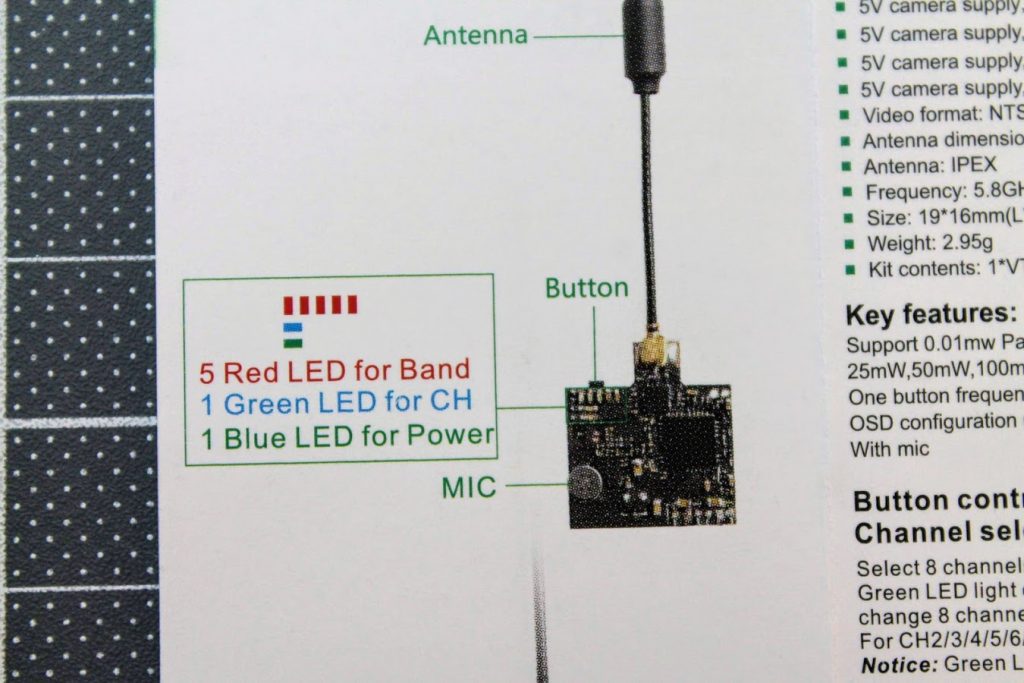
Button control channel, band and power select
Select 8 channels by simple short presses.
Green LED light on stands for CH1,short presses to change 8 channels sequentially.
For CH2/3/4/5/6/7/8, Green LED flicker once it won’t light on
Notice: Green LED only light on for CH1.
Band Select
Press button for 2s,Red LED will flicker,then short presses to select 5 band A/B/E/F/r sequentially.
Notice: Red LED1 only light on for Band A.
Power select
Press button for 4s,Blue LED will flicker,then short presses to select power 25mW/50mW/100mW/200mW sequentially. For 50mW/100mW/200mW, Blue LED flicker once, it won’t light on
Notice: Blue LED only light on for 25mW.
Pit Mode(0.01mW)
While in Pit Mode you can change channels and set power levels, but none of these changes will take effect until you quit Pit Mode. By default, Pit Mode will send a very weak signal
Power output measurements
Connected the ATX03S to the immersion RF power meter V2 for test. VTX was cooled with fan while taking the measurements.
First test: 25mW output setting. In the reality it is outputting almost 76mW (18.8dBm).
Next step 50mW – outputs nearly 136 mW (21.3dBm).
At 100mW setting it outputs 213 mW (23.3 dBm)
And at max setting of 200mW it outputs 262 mW (24.2d Bm)
Tested the 25mw setting without cooling and it drops from 76mW down to 28mW (14.4 dBm) after a few minutes.
Also the 200mw setting without cooling drops from 262mW down to 220mW (23.4 dBm) after a few minutes.
The power output test results were disappointing at 25mW power setting – powe exceeds the declared output by 3 times, outputting 75mW! Some might like it, but it is not good for racing events.
Here is the RF power output and electrical current consumption for all power levels. Measured at Raceband, CH5.
Power output vs frequency for 25mW power level on Raceband.
Power output vs frequency for 50mW power level on Raceband.
Power output vs frequency for 100mW power level on Raceband.
Power output vs frequency for 200mW power level on Raceband.
As you can see there are big deviations between the nomimal power and measured power output across the whole Raceband. Varying from 155mW downto 37mW for 25mW setting and from 257mW downto 68mW on the 50mW power output setting. There are similar deviations on the other power output settings. You should have this in mind when selecting the channel/band for FPV feed – it outputs the more power on the lower frequencies and less power on the higher frequencies.
Smart Audio feature
[To be tested]
PROS
- Small and lightweight (3.0 grams)
- Smart Audio control
- Pit mode/25/50/100/200mW switchable power modes
- On board small LEDs instead of bulky LED module
- On board microphone
CONS
- Output RF power is higher than nominal
CONCLUSION
Eachine ATX03S is very lightweight (3.0 grams with wires) and small VTX. It fits into wide range of the aircrafts from the ultralight micro brushless quadcopters up to the high perfomance racing quads, where the weight is crucial. The Smart Audio remote control feature is a must have in the modern video transmitter. ATX03S has 5 switchable output power modes – Pit/25/50/100/200mW. However there are not so good news for racers – output power is enormously boosted over the expected values. 25mW mode outputs 75mW, 50mW – outputs 135 mW (just like its predecessor VTX03S. See Eachine VTX03S review here), but at 200mW it outputs reasonable – 262mW of the RF power . If you are flying alone, more mW probably is welcome – it will increase your flying range and will slightly improve the picture, but it also means that VTX is consumig more current and leads to the less flight time, especially on the smaller quads. On the race events you probably will be asked to turn your quad off after the VTX power measurements – you cannot exceed the 25mW requirements.
Finally the Eachine listened to the user requests and replaced the bulky 7-segment LED module with the small on-board LEDs. It helped to reduce the weight by VTX by 10%. ATX03S also has on board microphone alowing to add the audio feed into the FPV experience.
Eachine ATX03S for sure ticks almost all the requirement checkboxes and if you are looking for the VTX for freestyle rig, then I definitely recommend this VTX for you. If you are a racer, then check if the power output fits into allowed range for your race events.
Available @ Banggood: https://www.banggood.com/Eachine-ATX03S-5_8GHz-40CH-25mW50mw200mW-Switchable-FPV-Transmitter-Smart-Audio-Mic-for-RC-Drone-p-1427187.html
Disclaimer: This item was supplied by Banggood for a fair and unbiased review. Banggood never asked for a positive review and never infuenced my opinion in any way. I’m trying my best to stay uninfluenced and give only my own opinion. All affiliate links if there are any help me purchase items for future reviews.
]]>